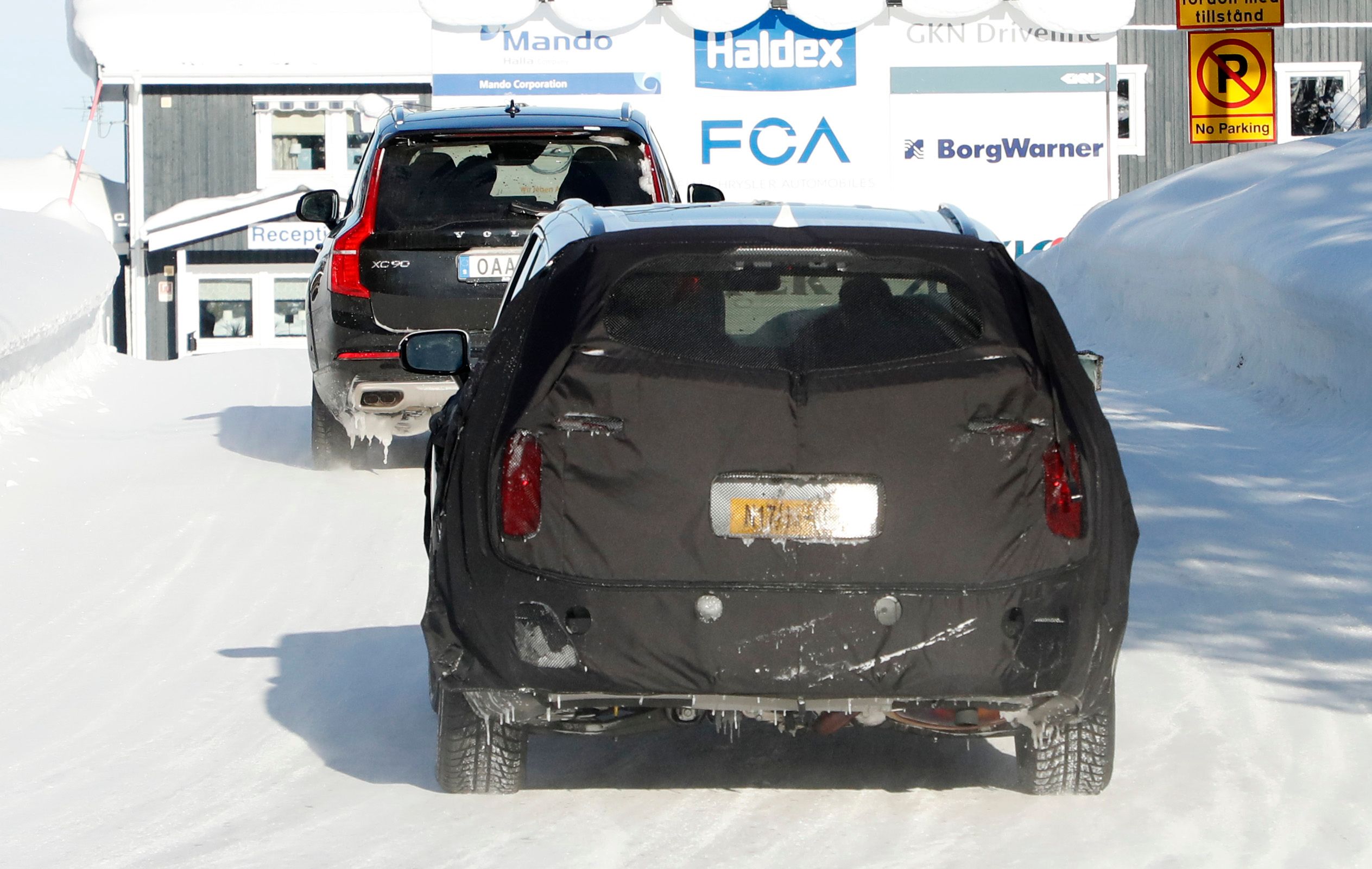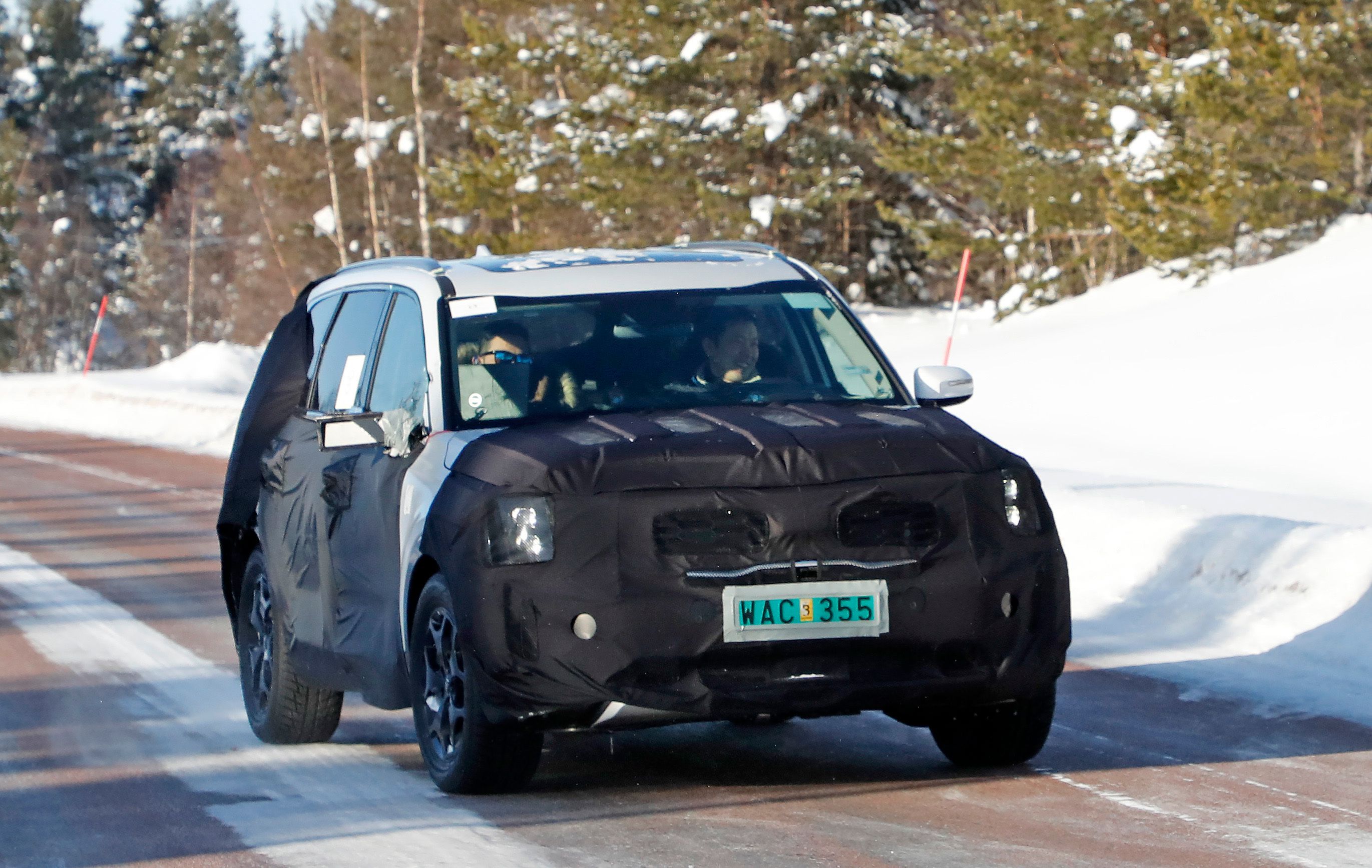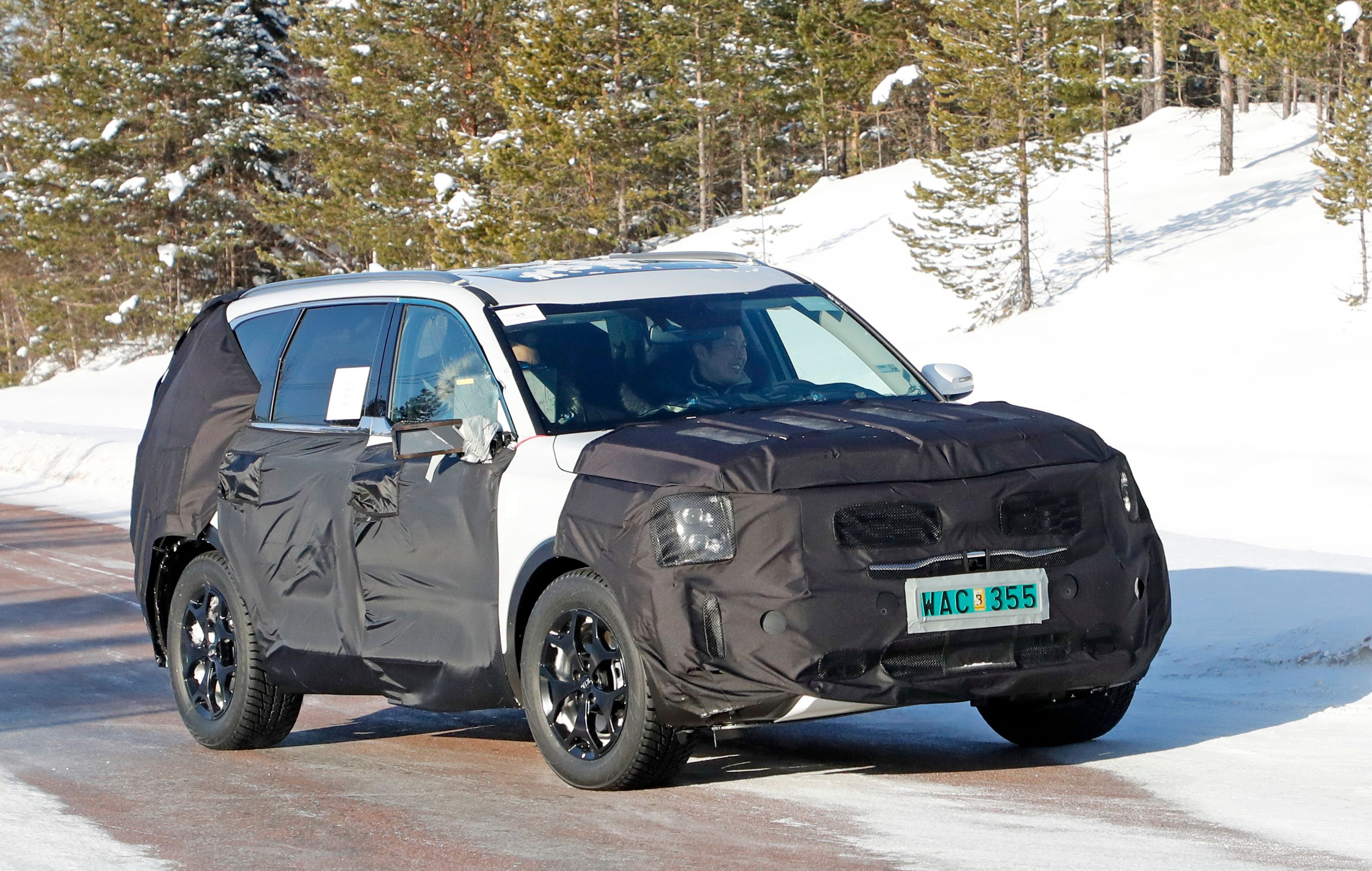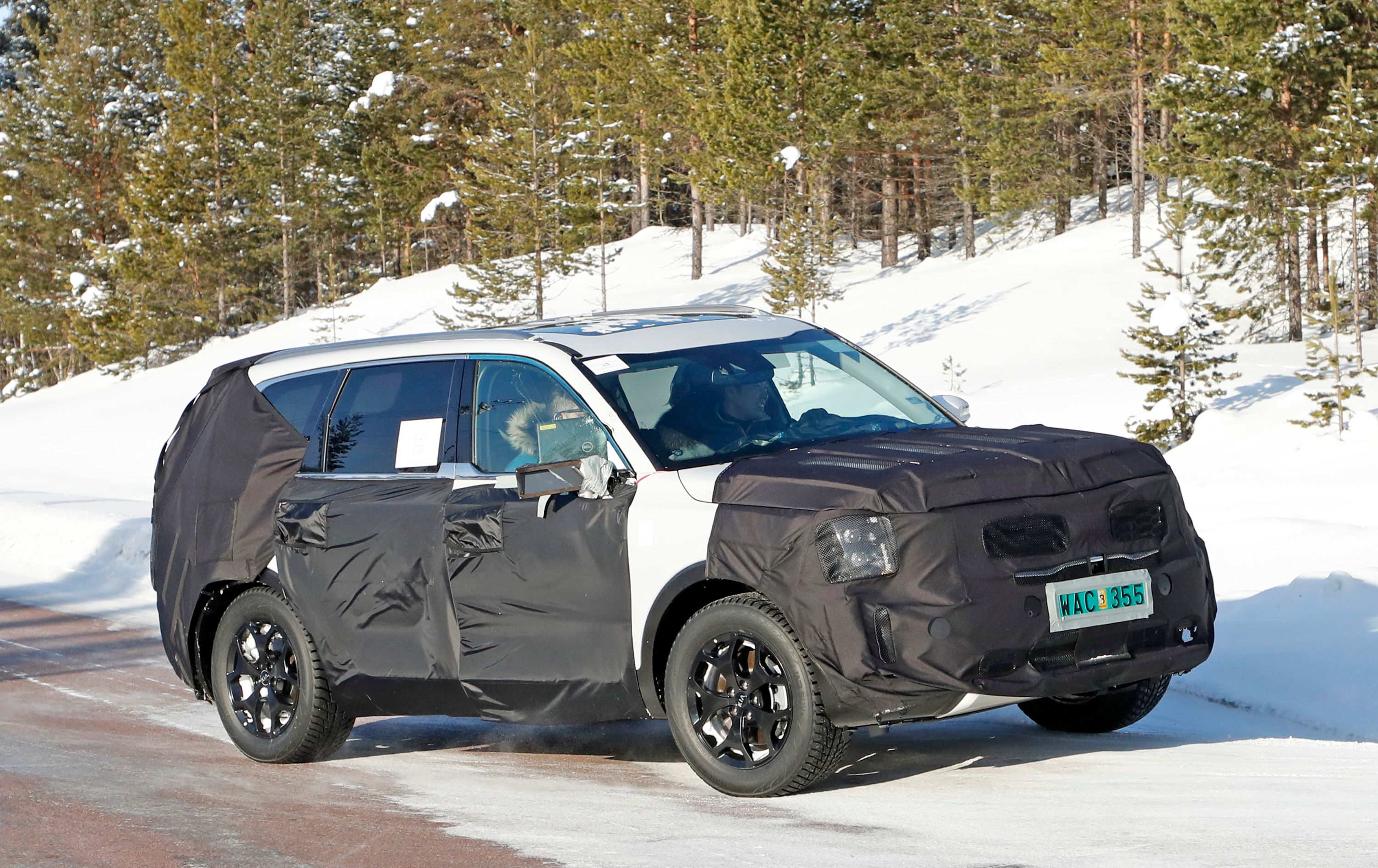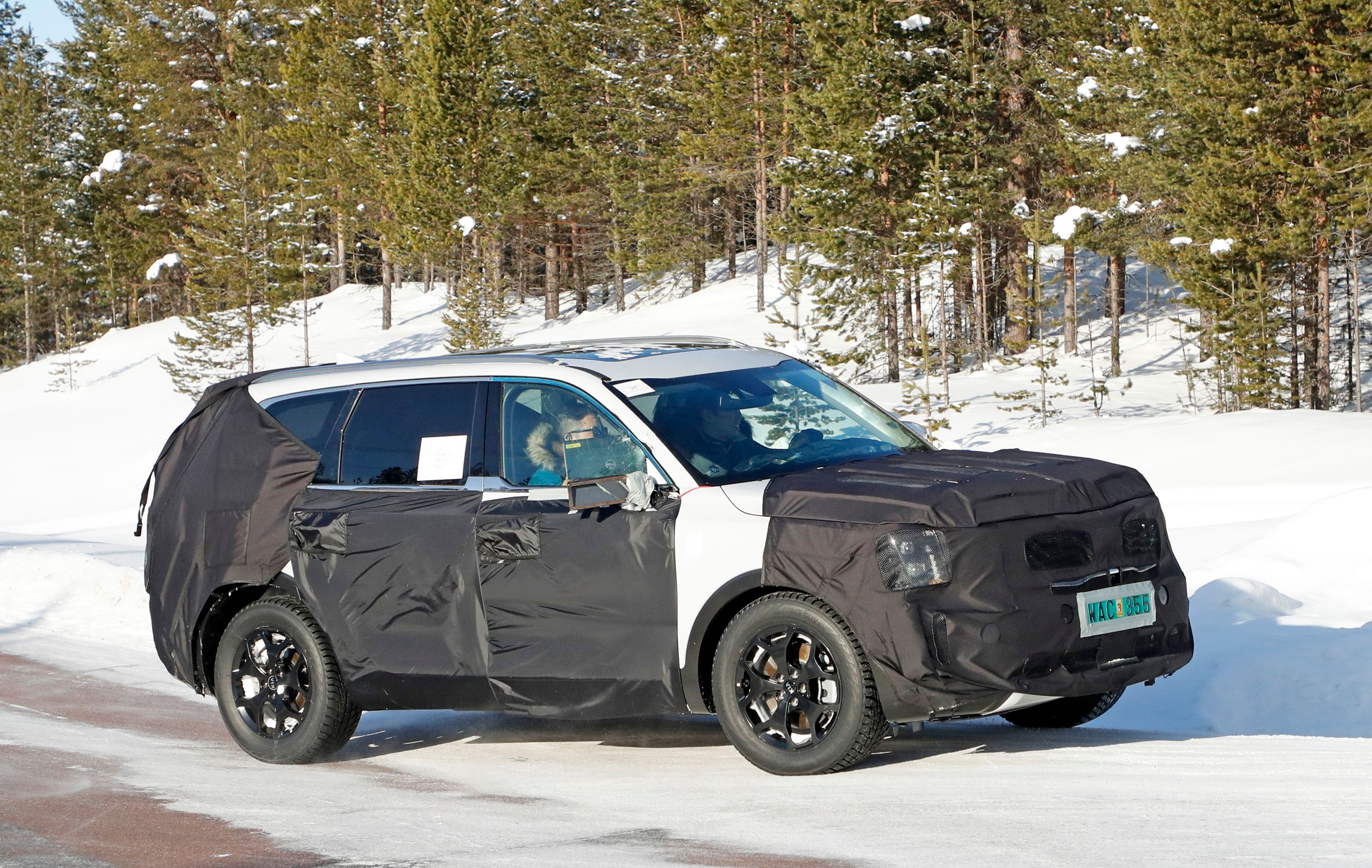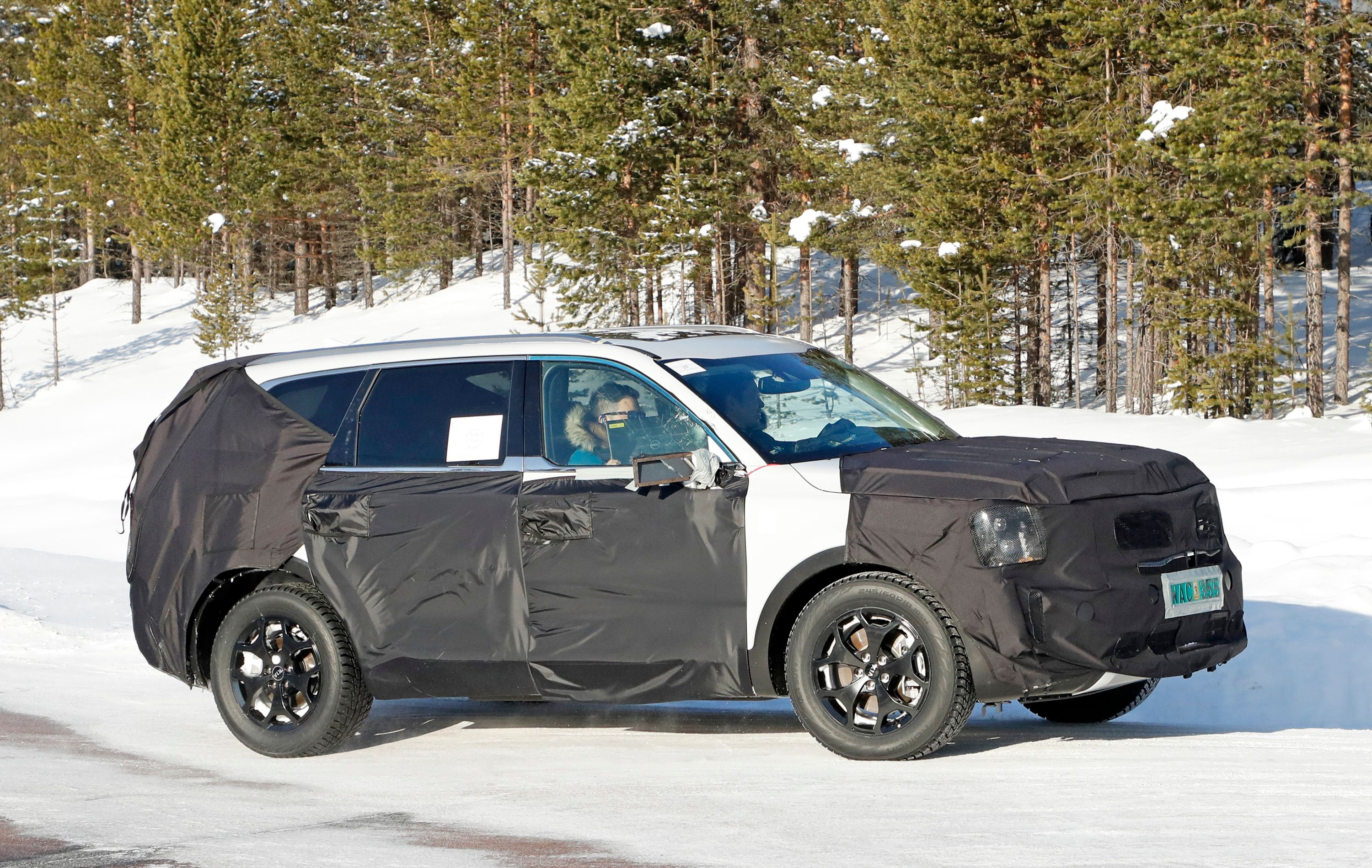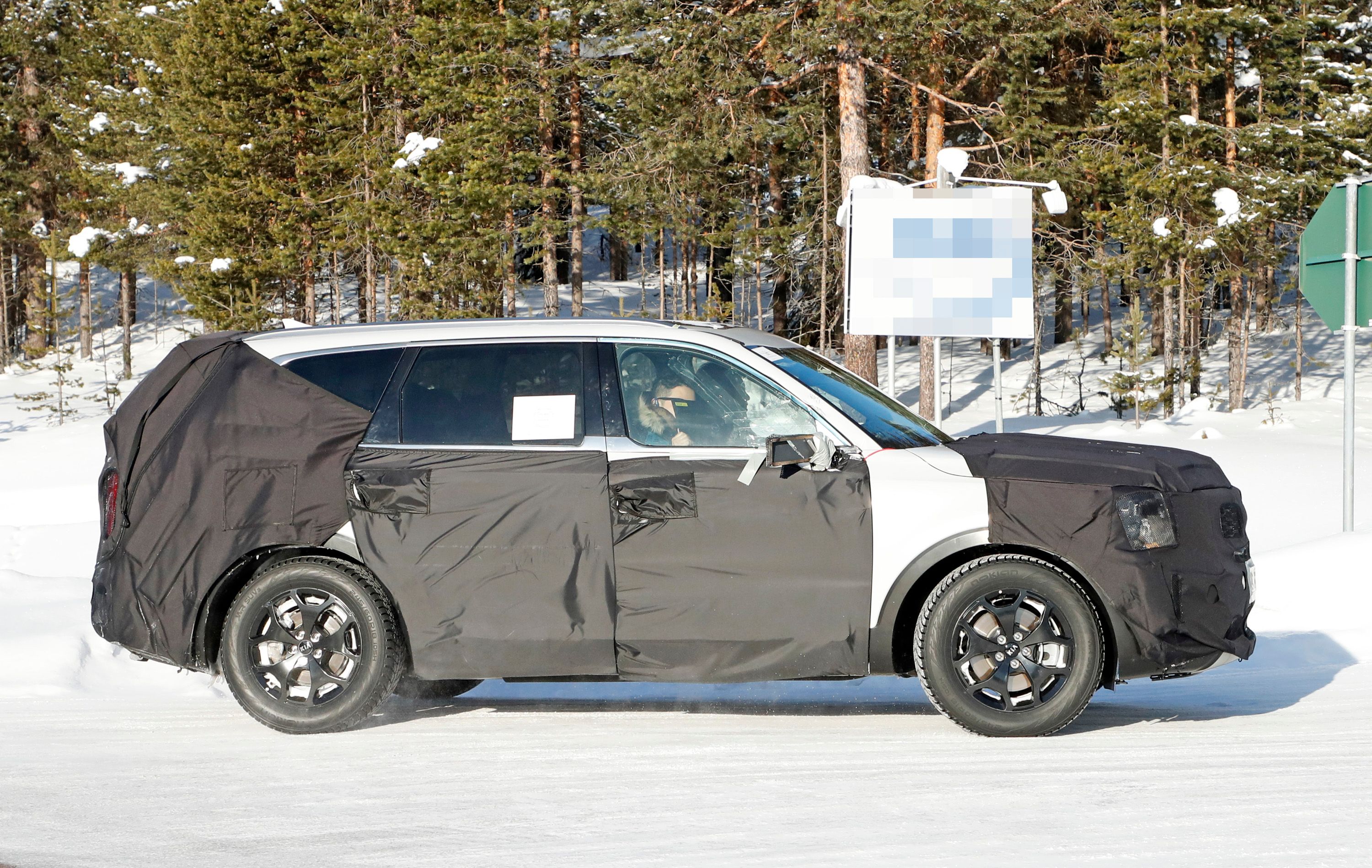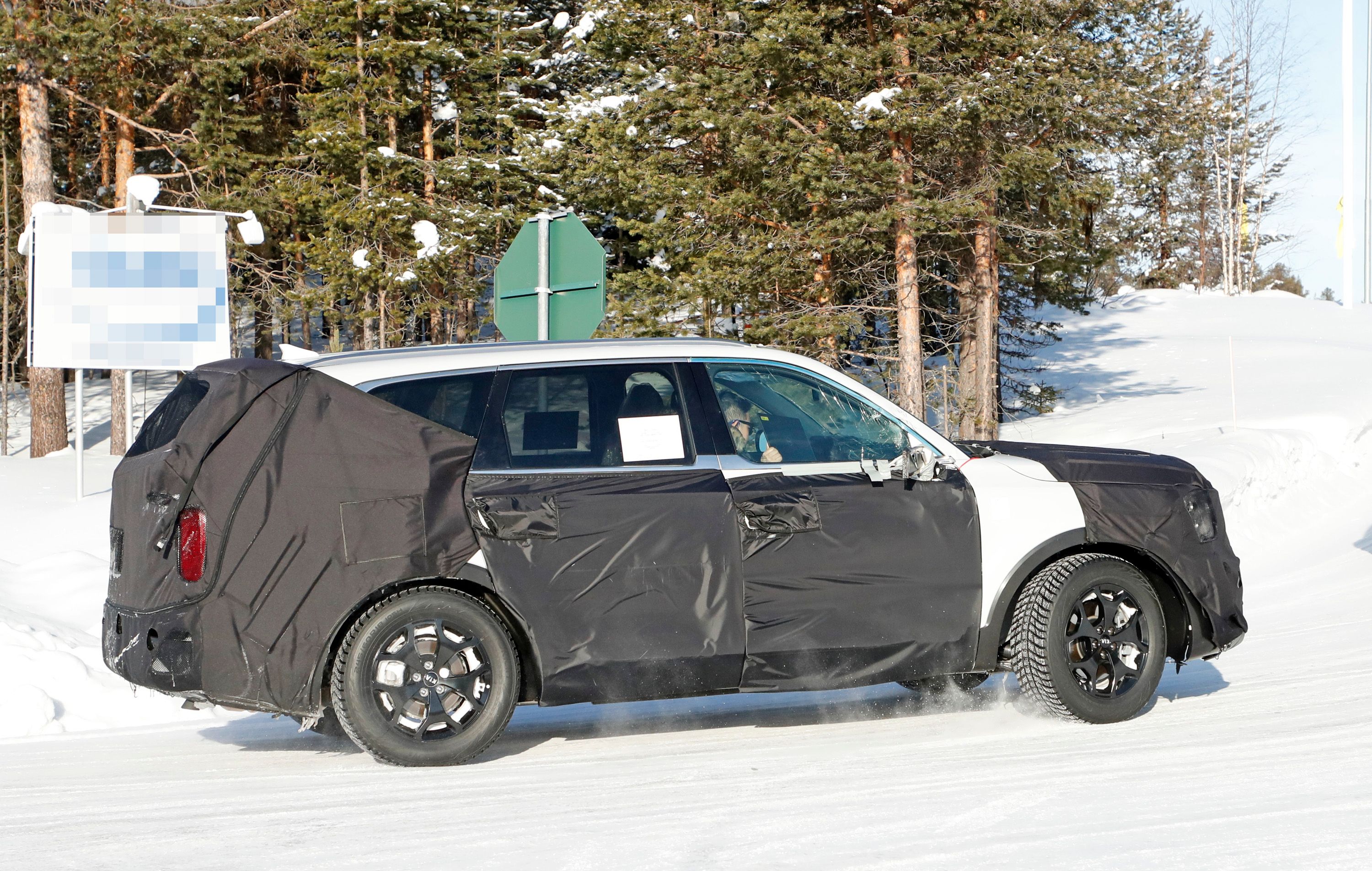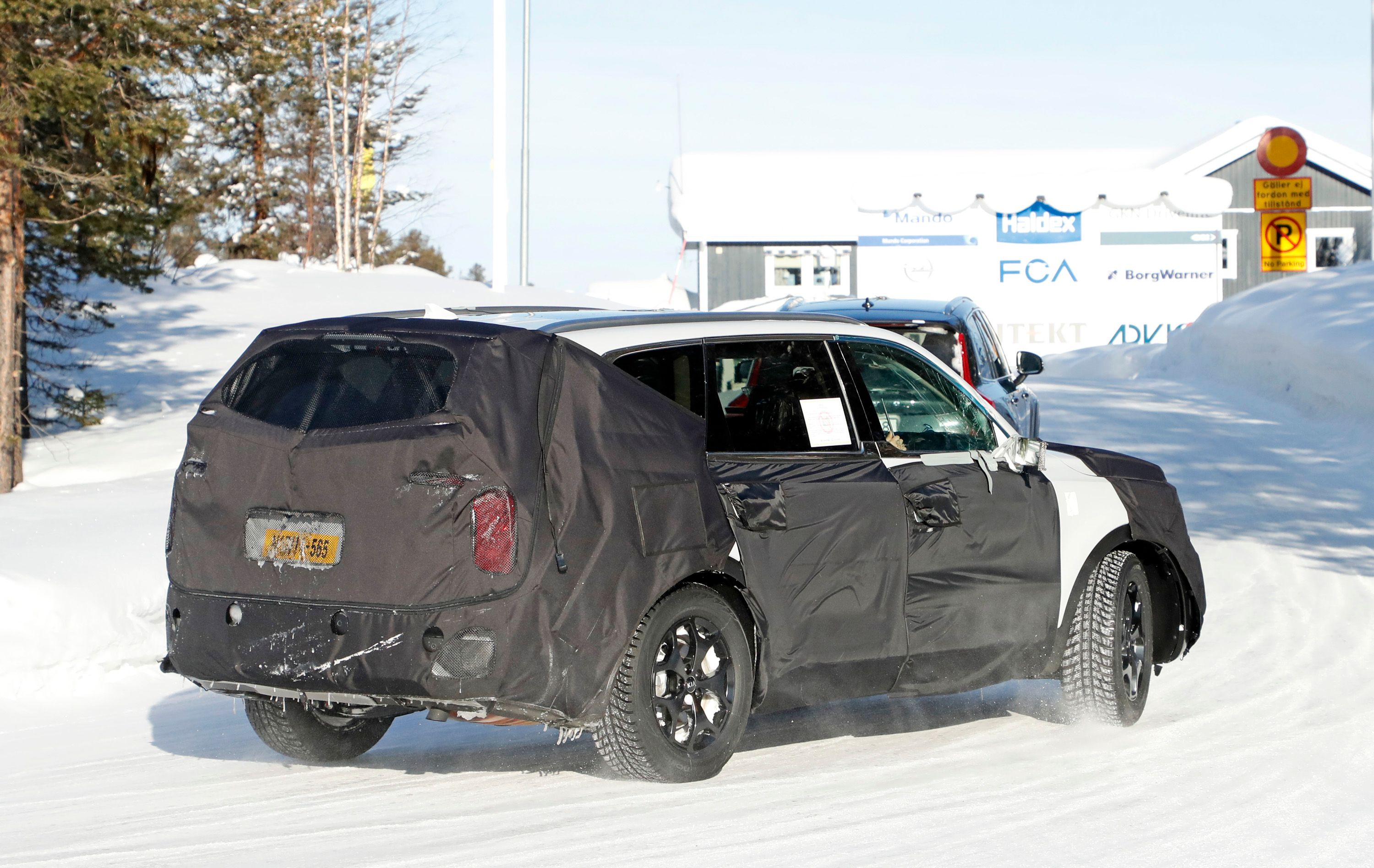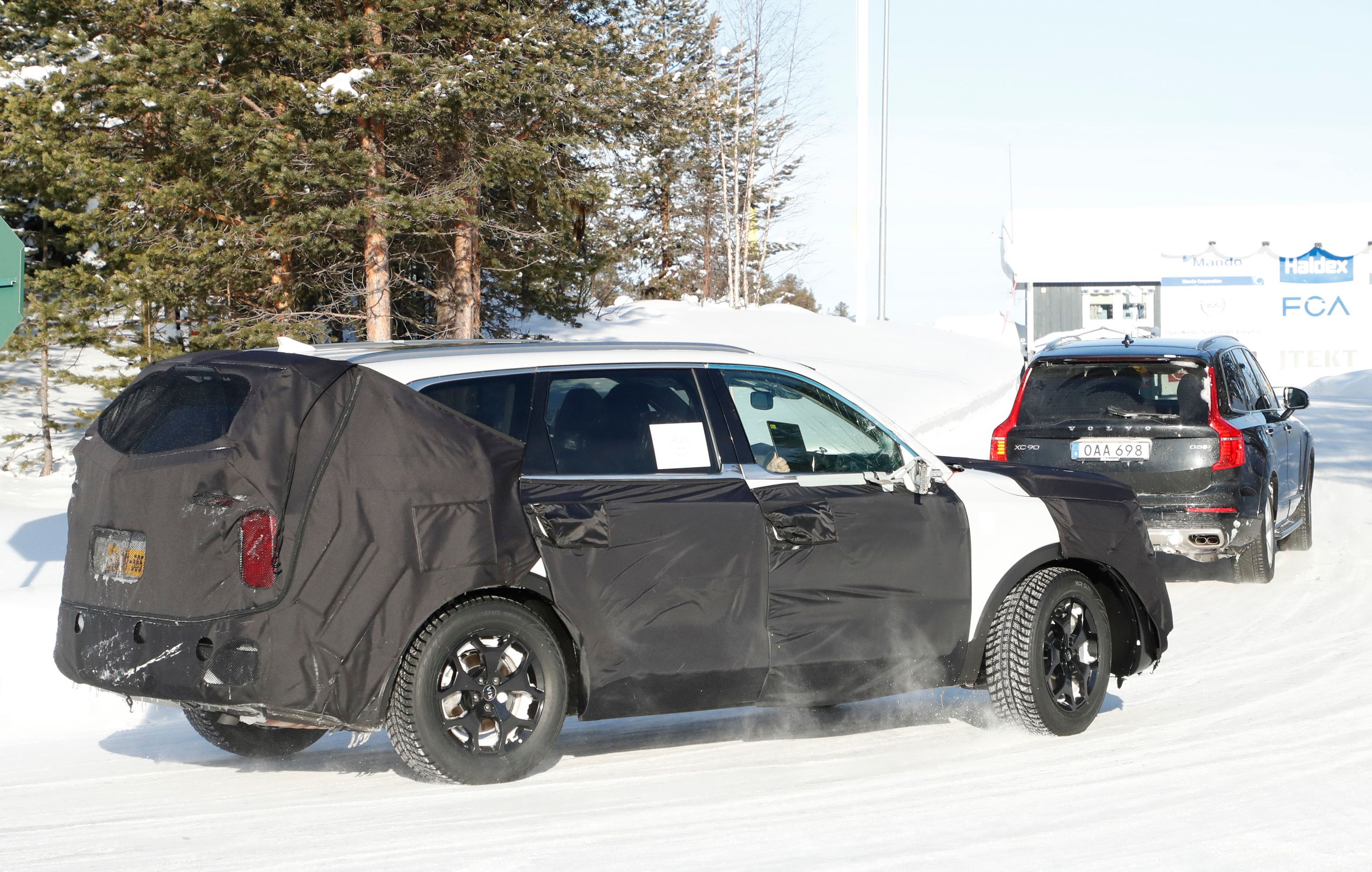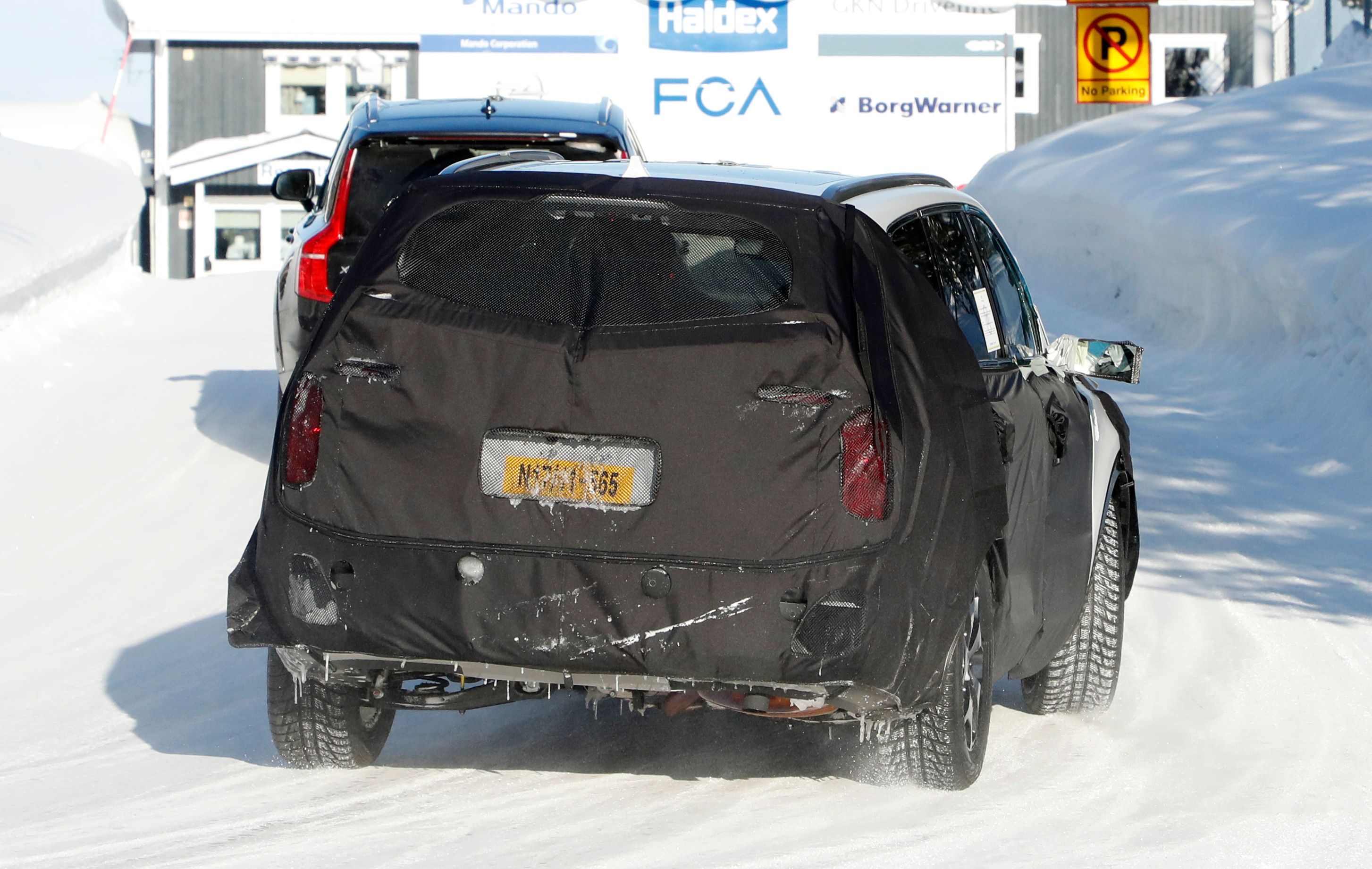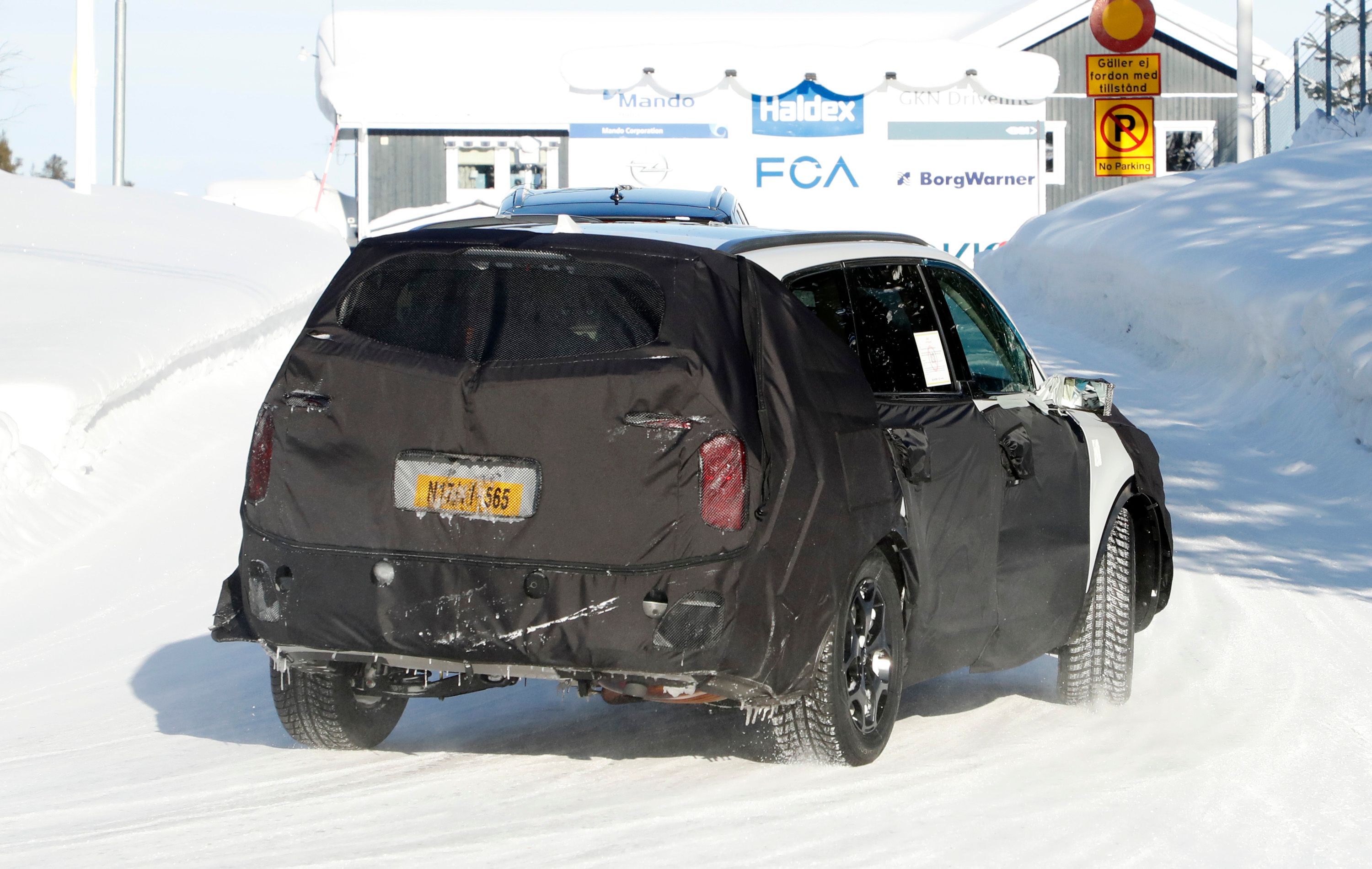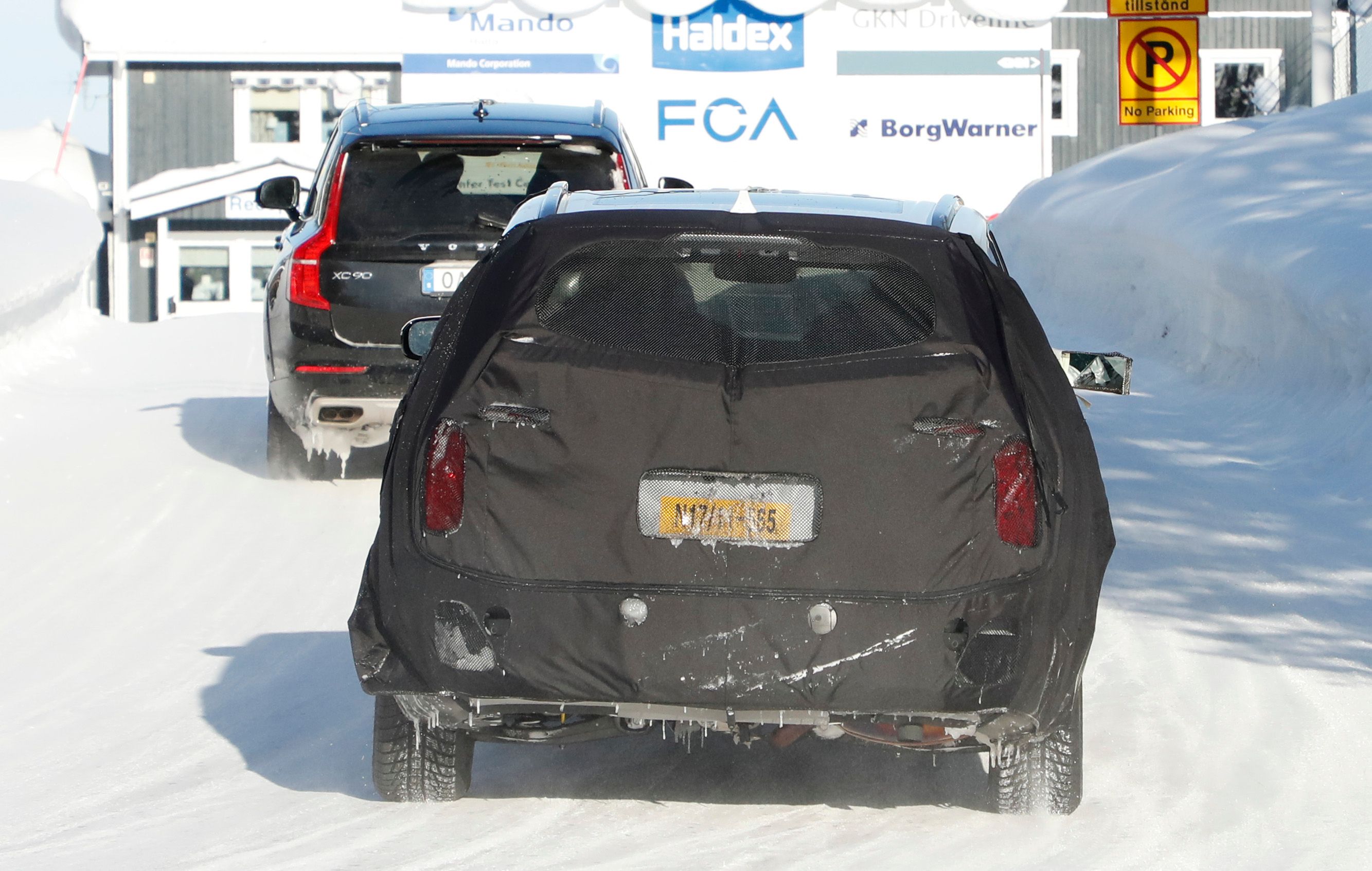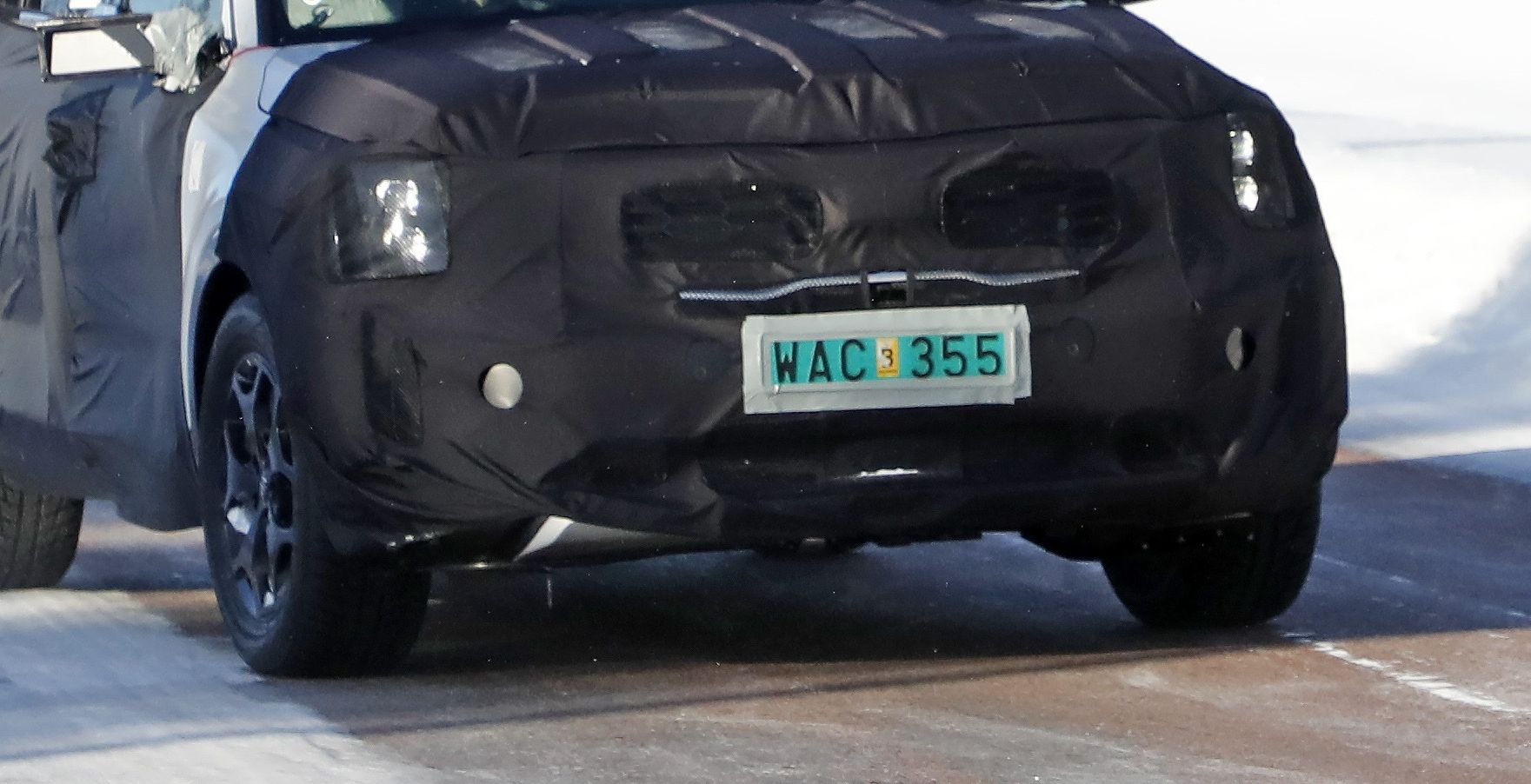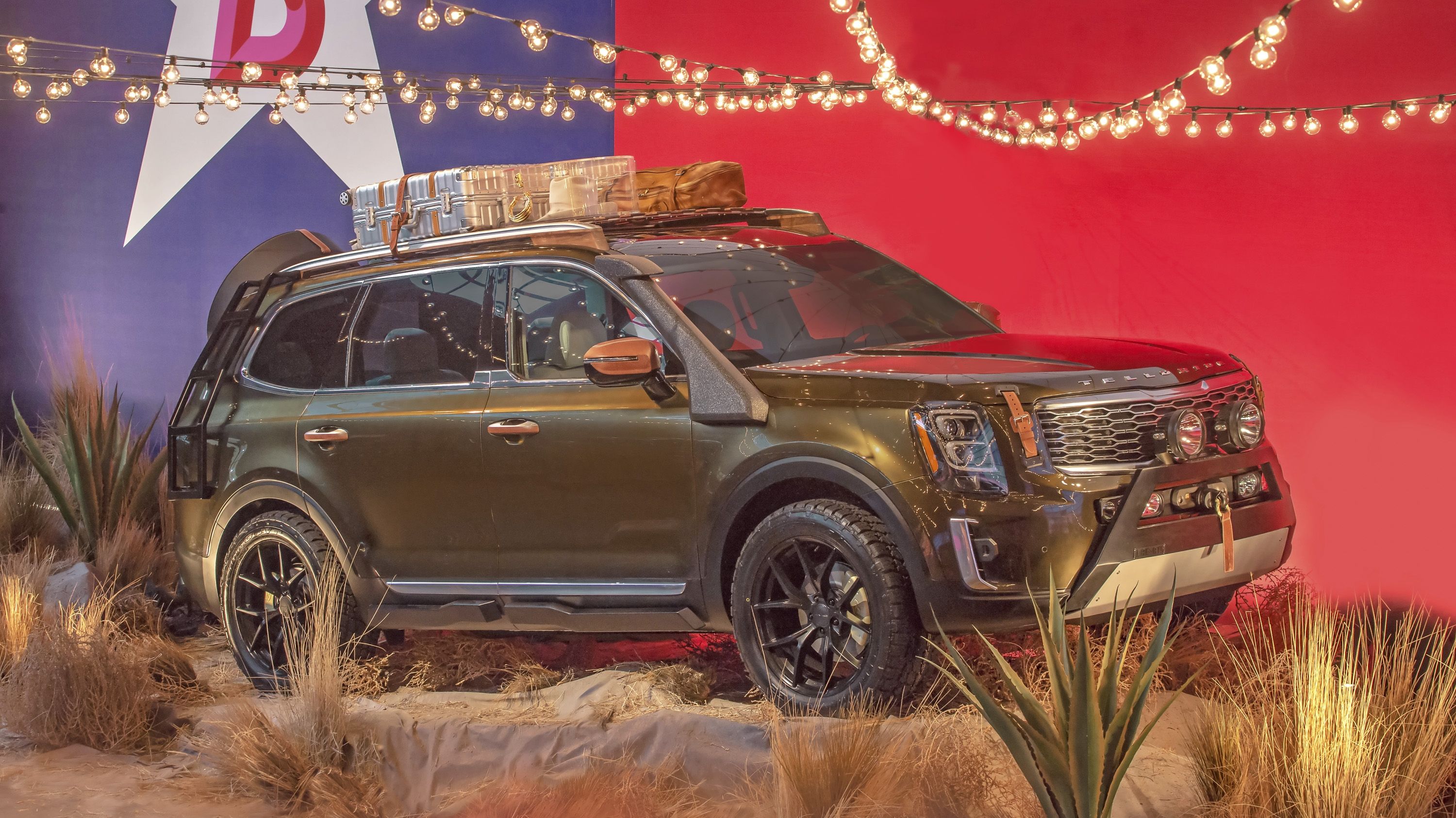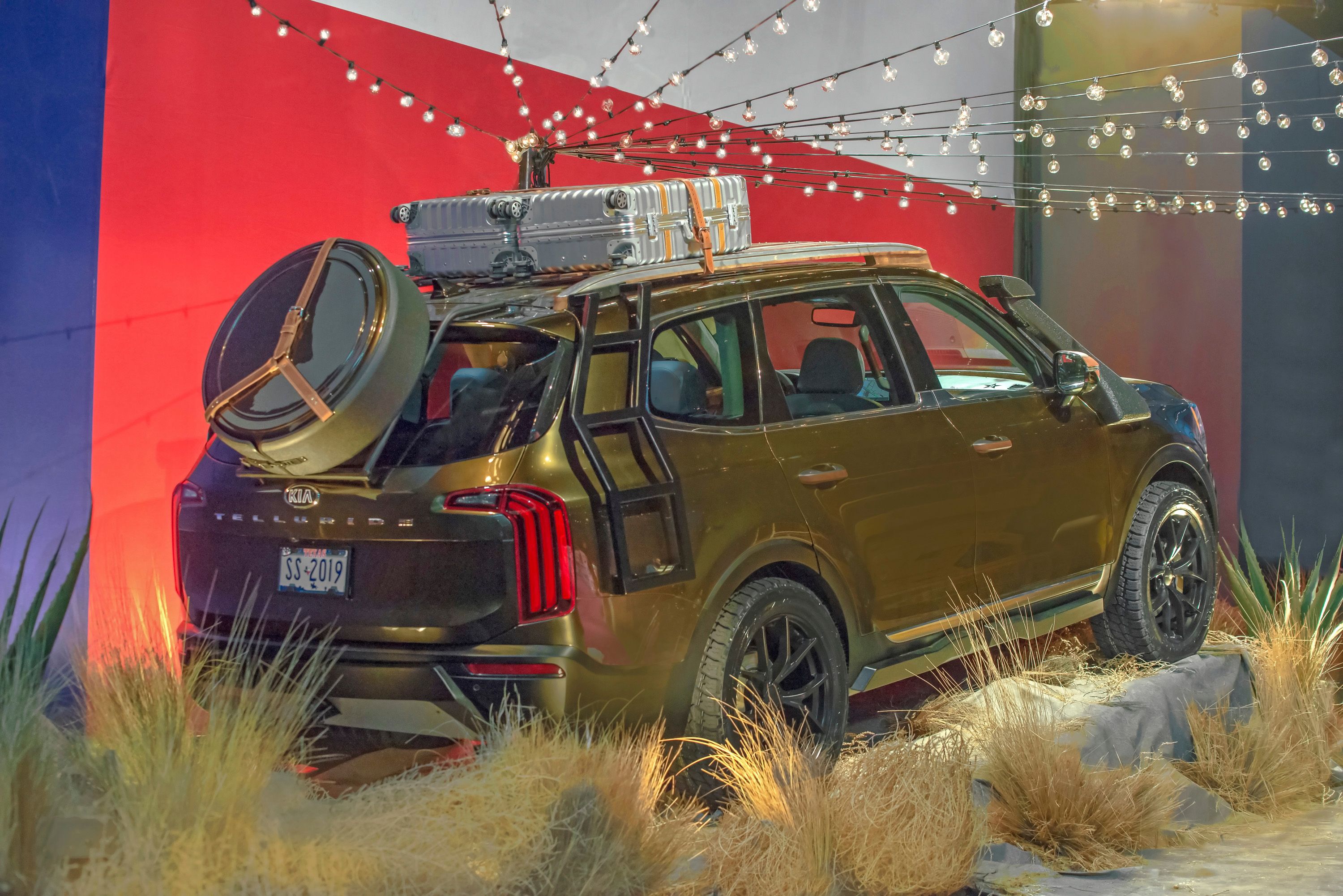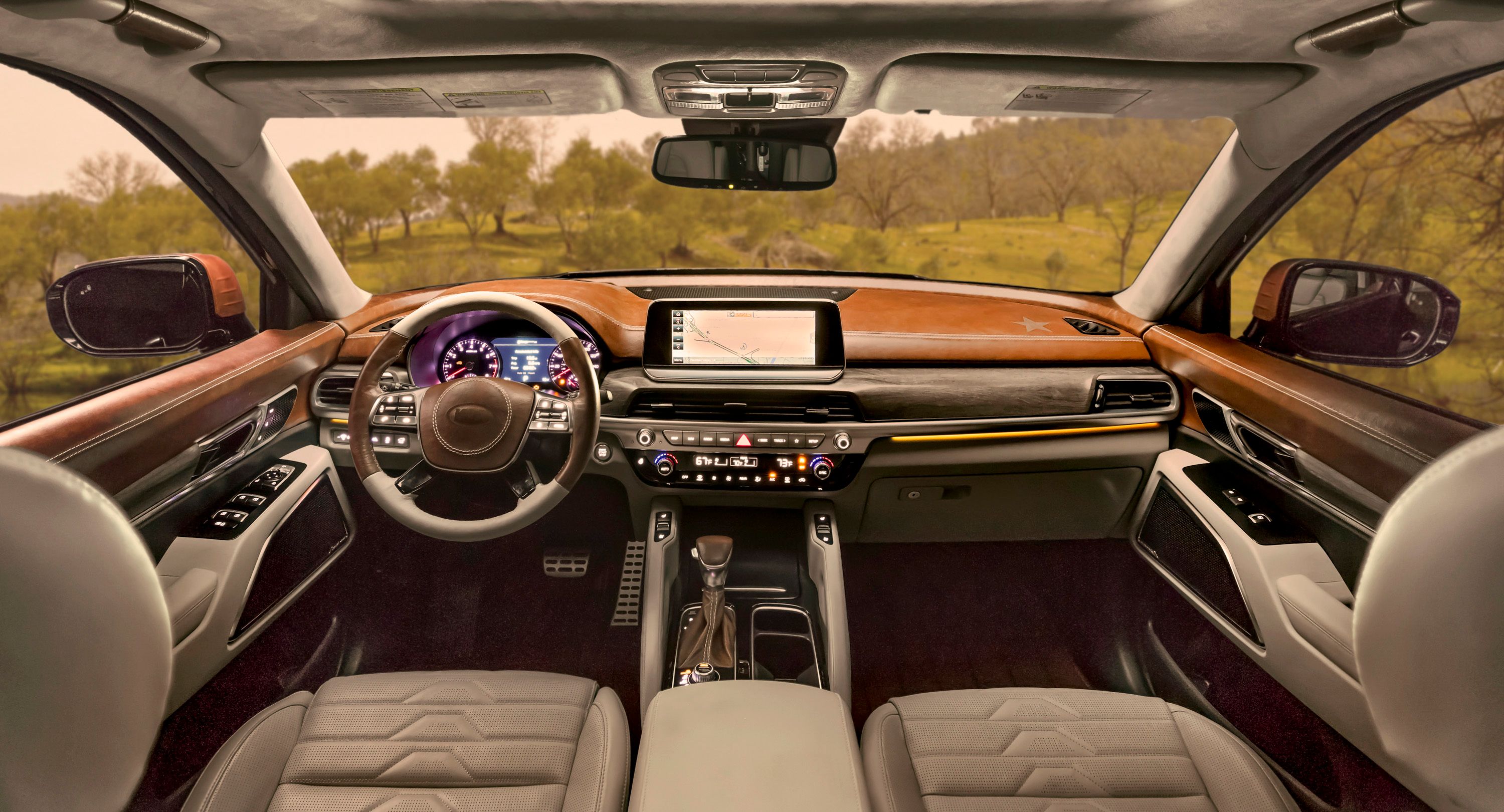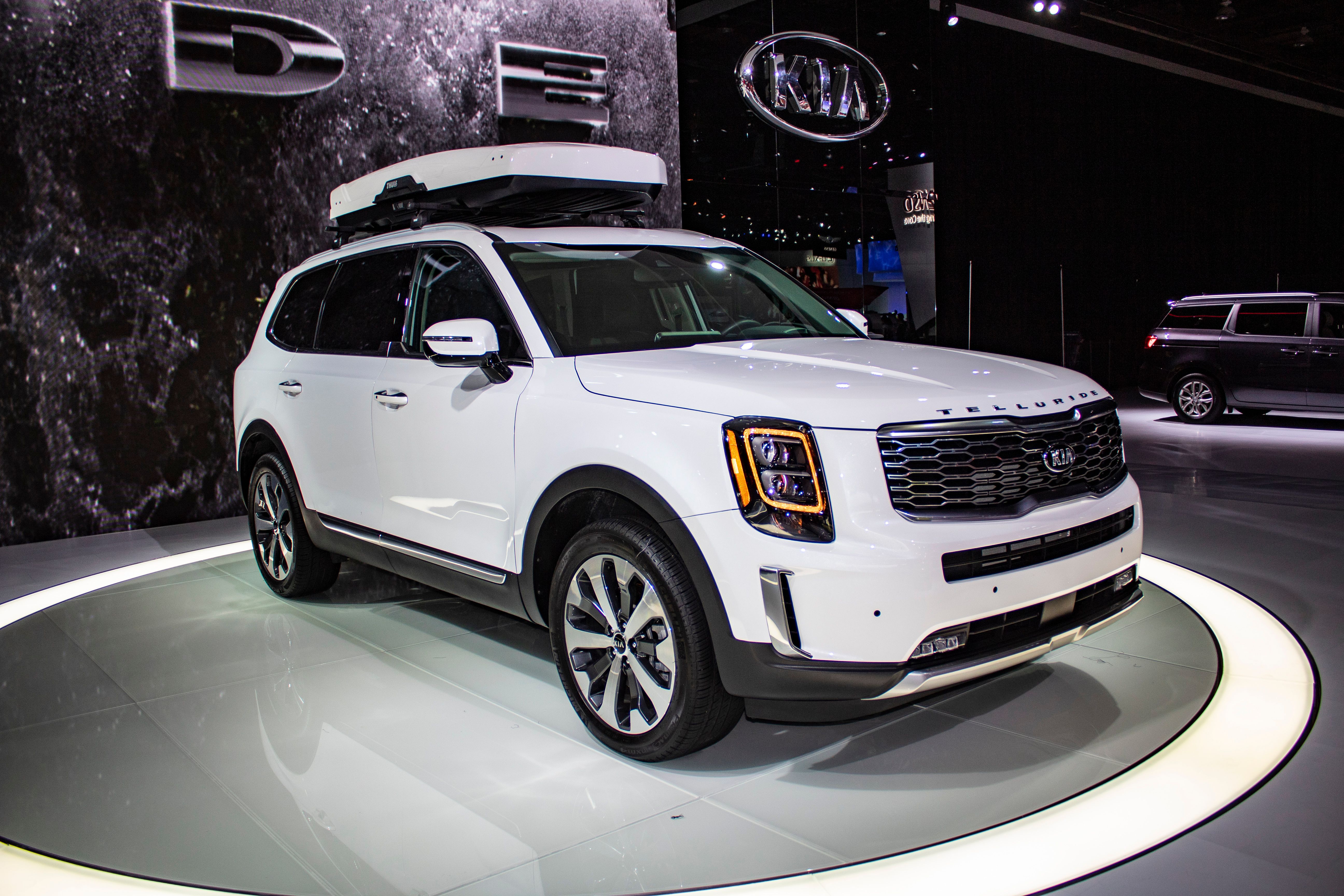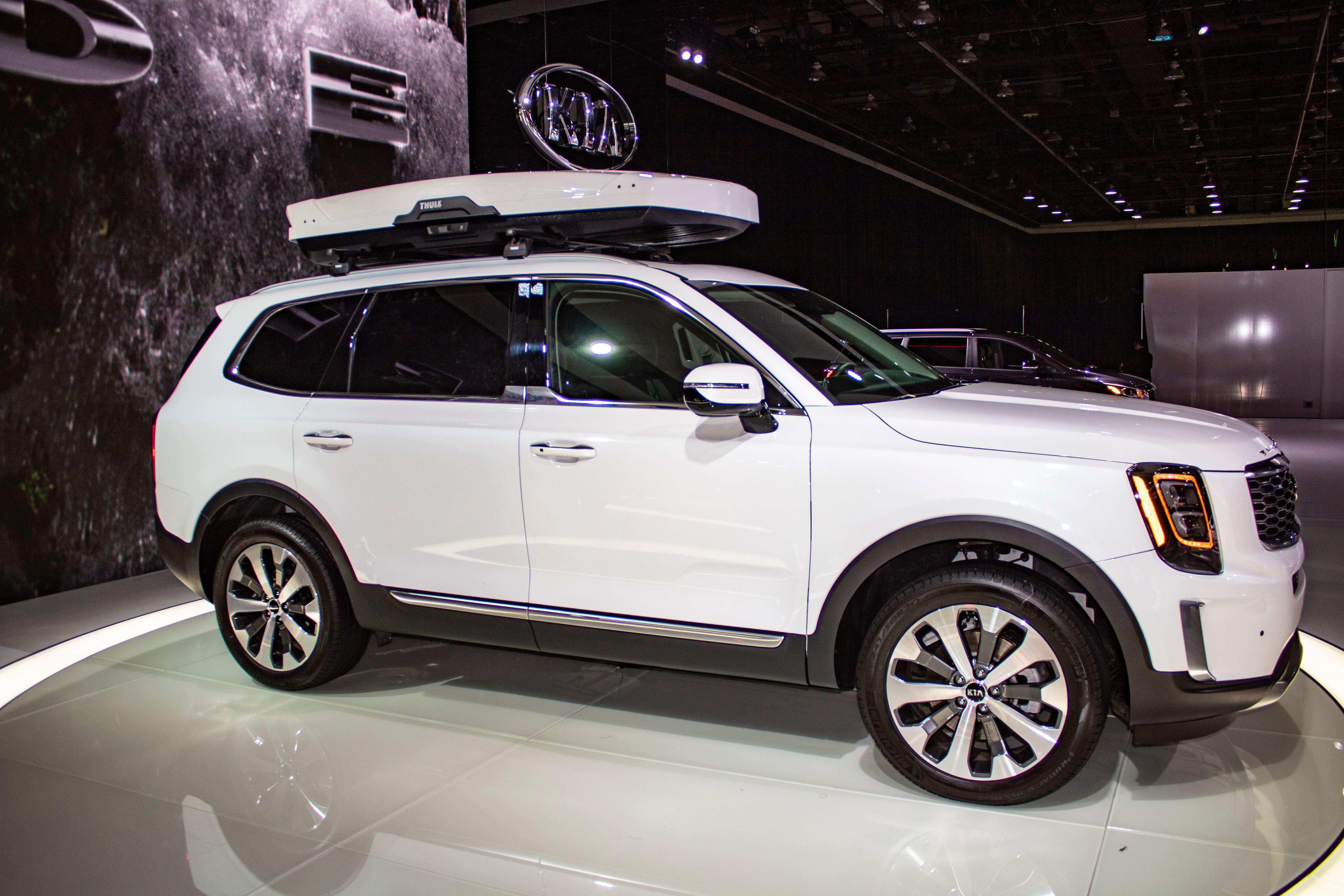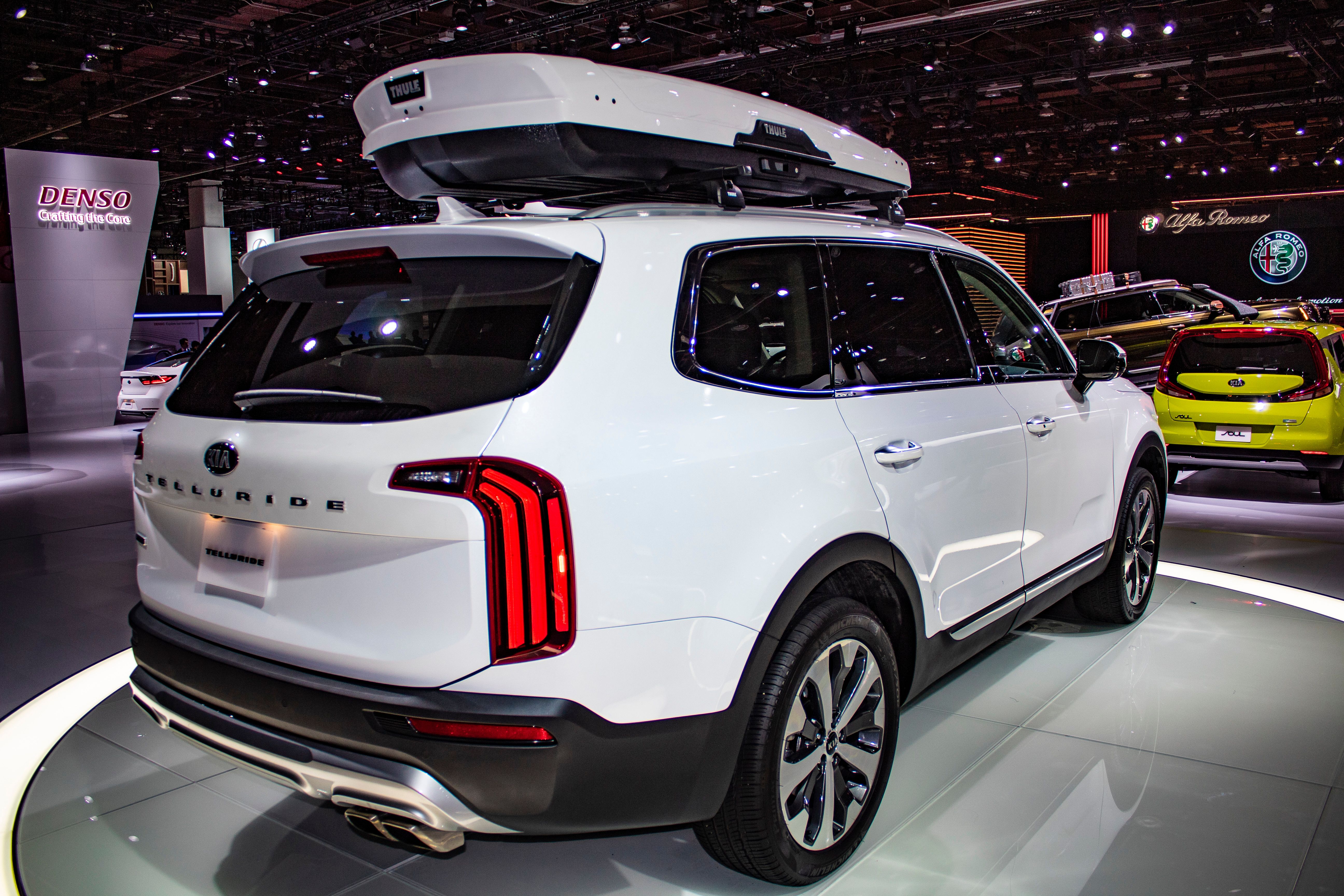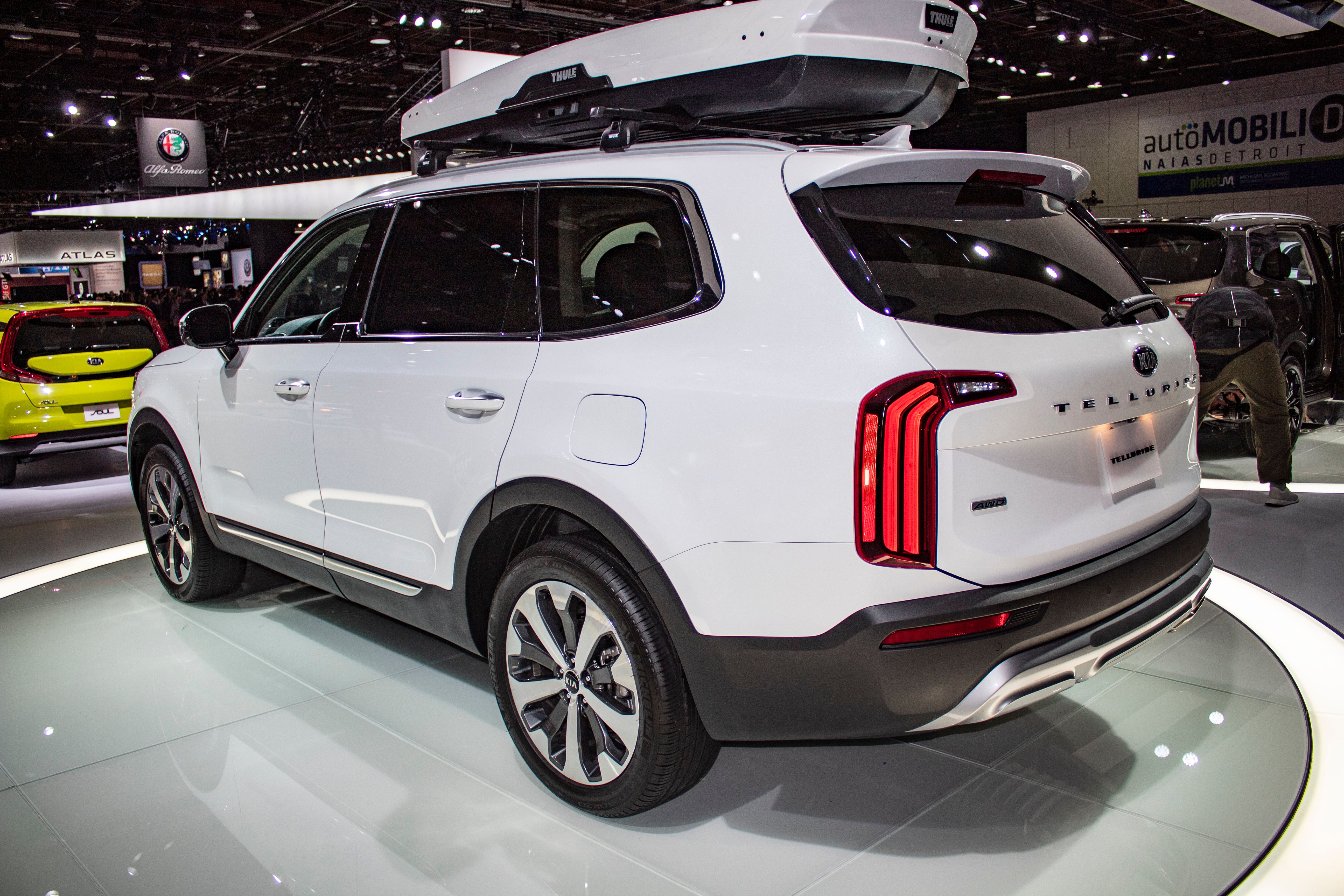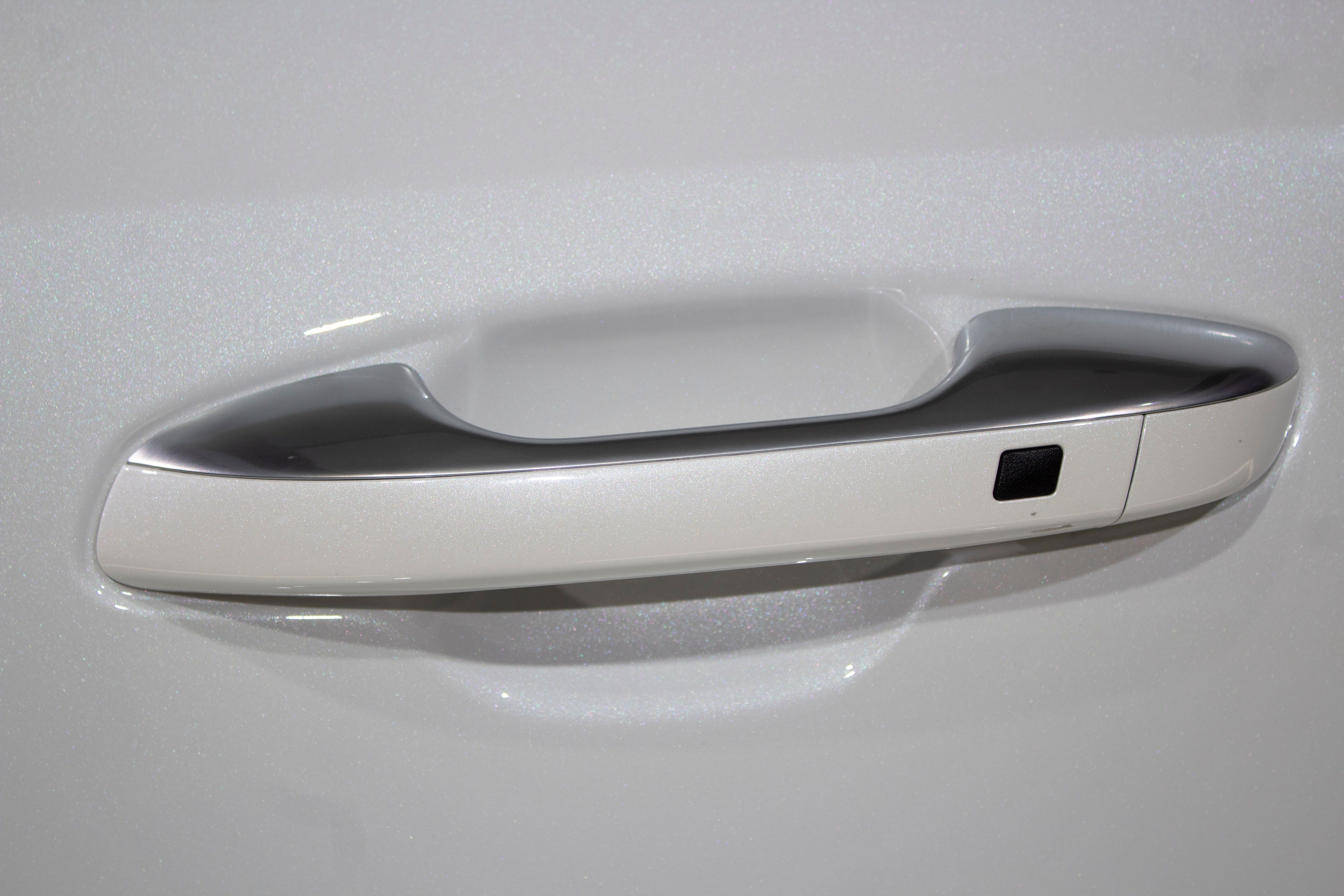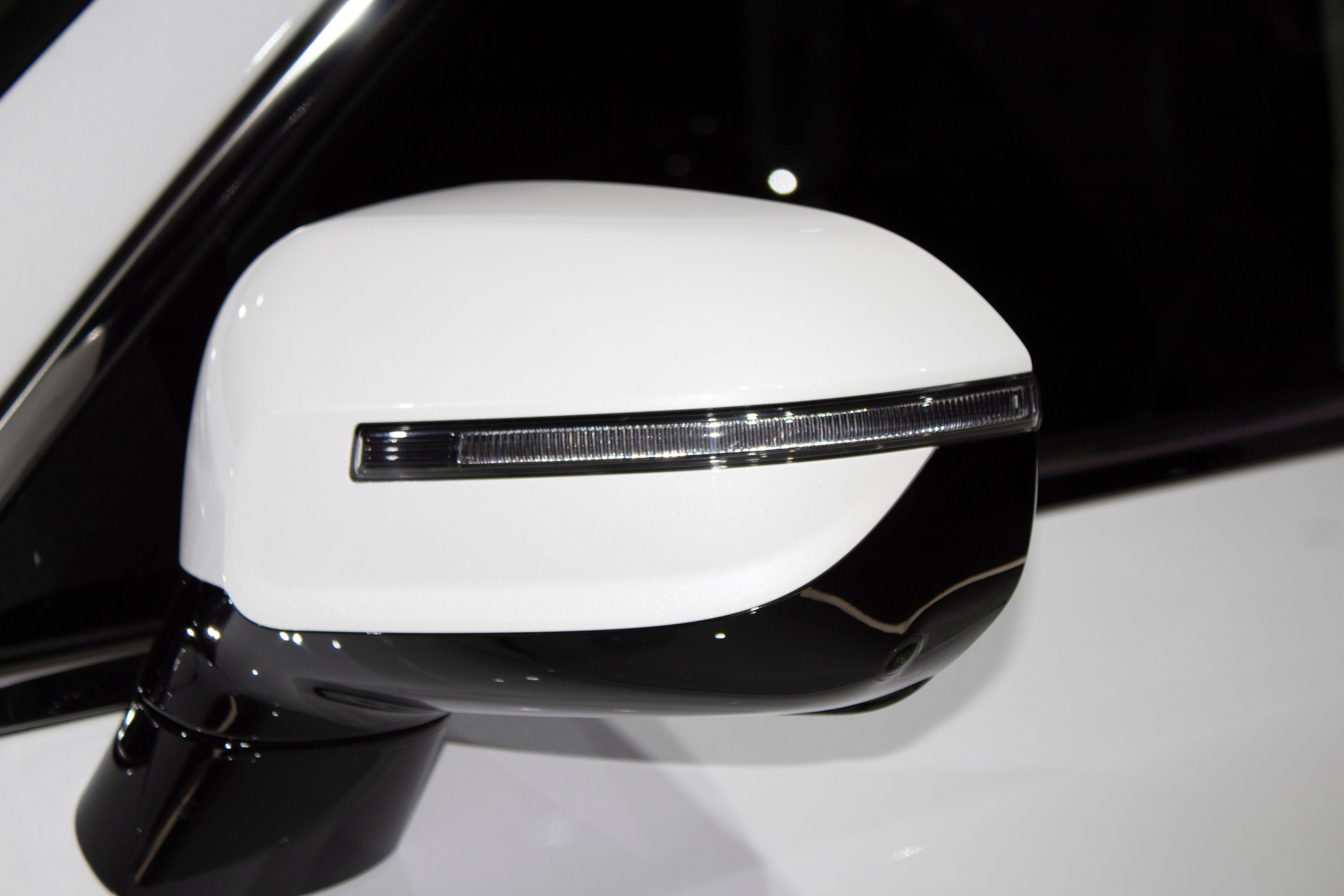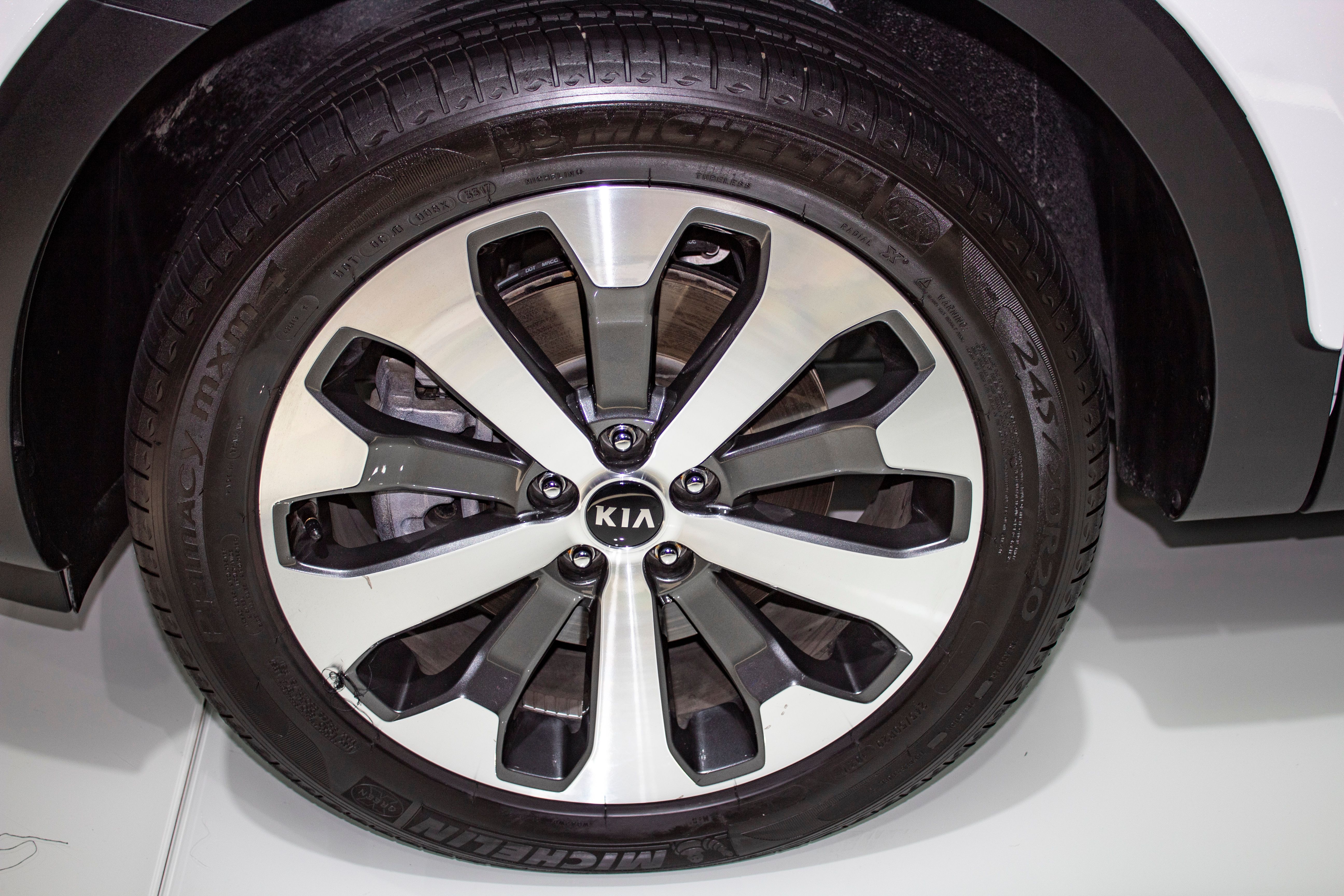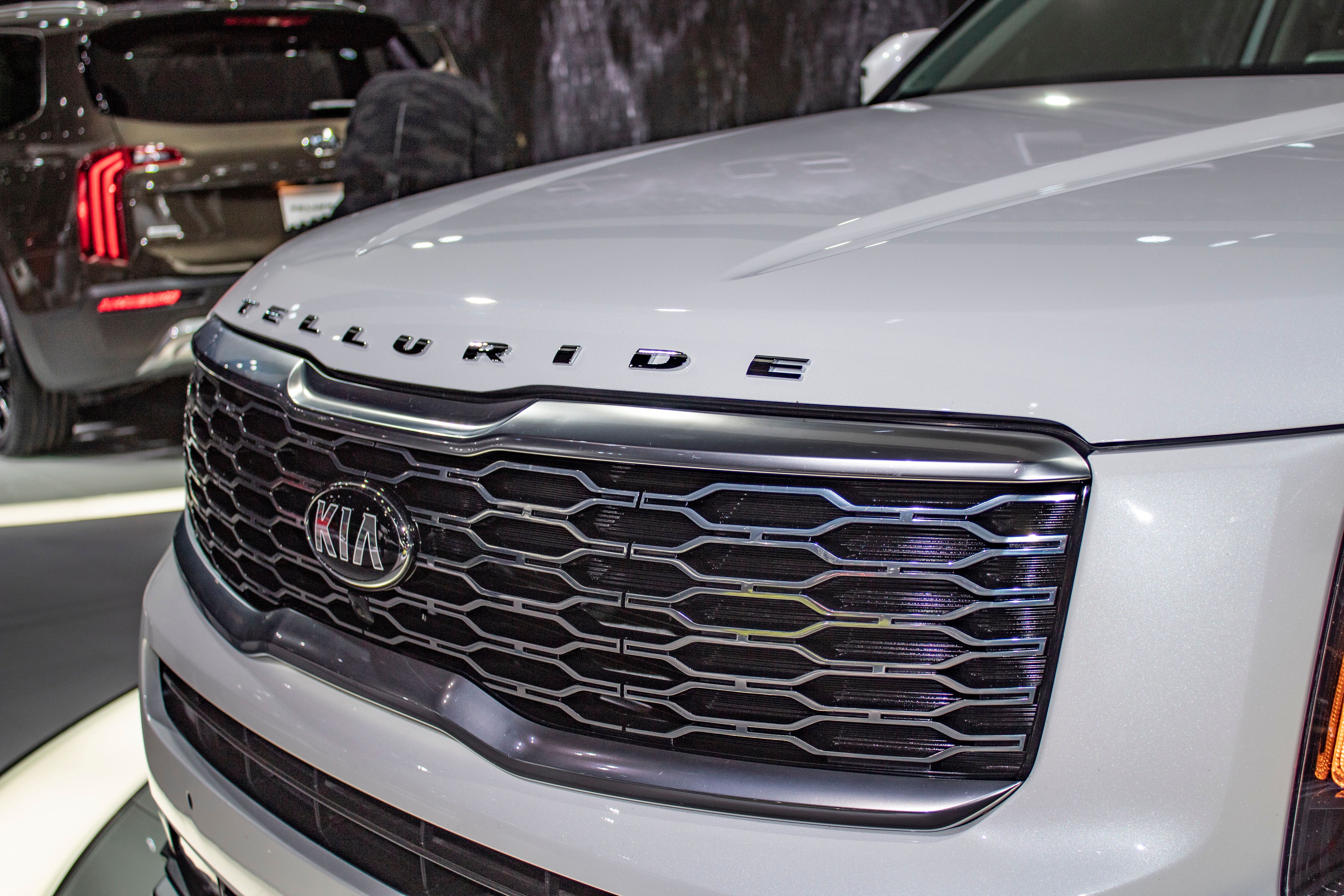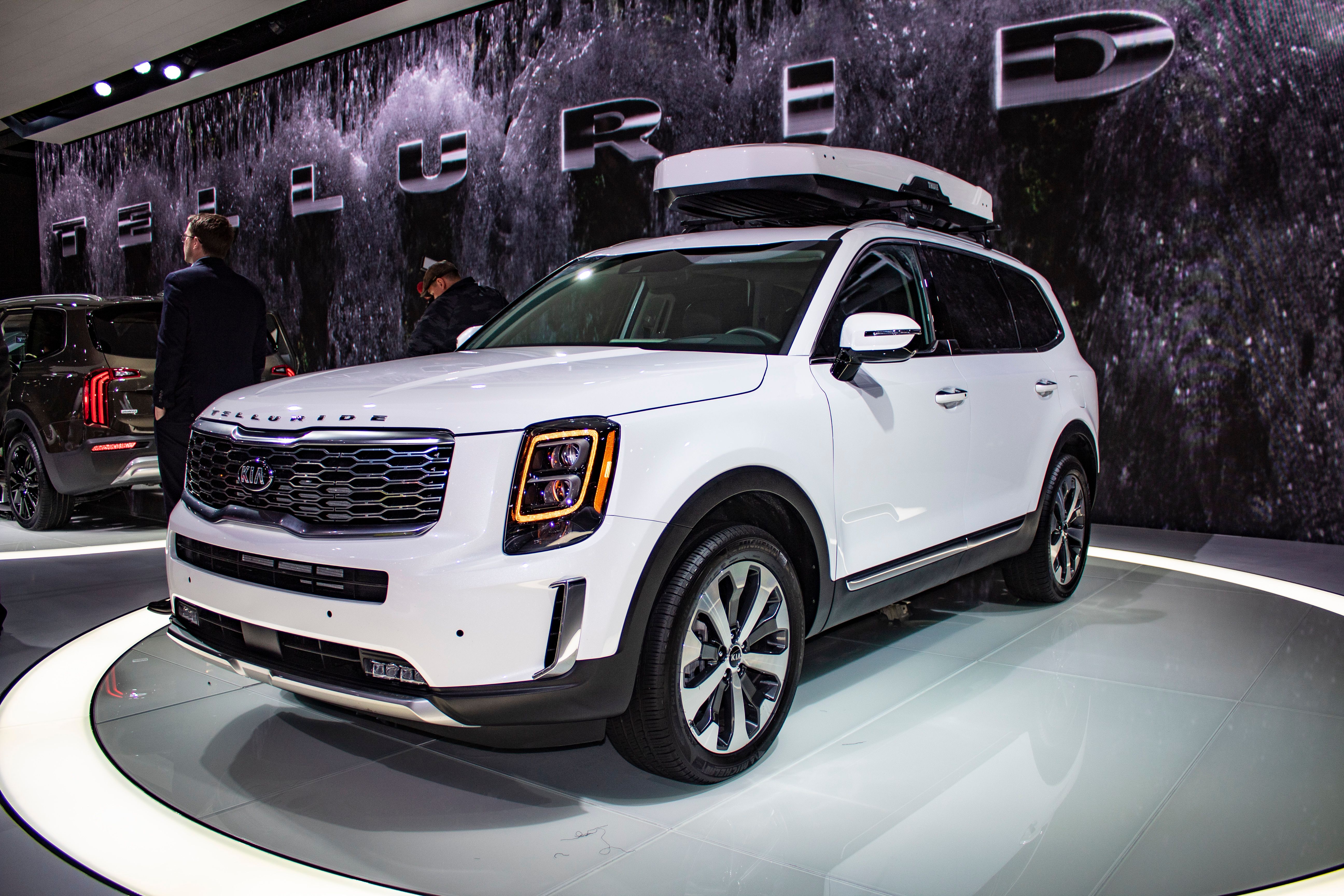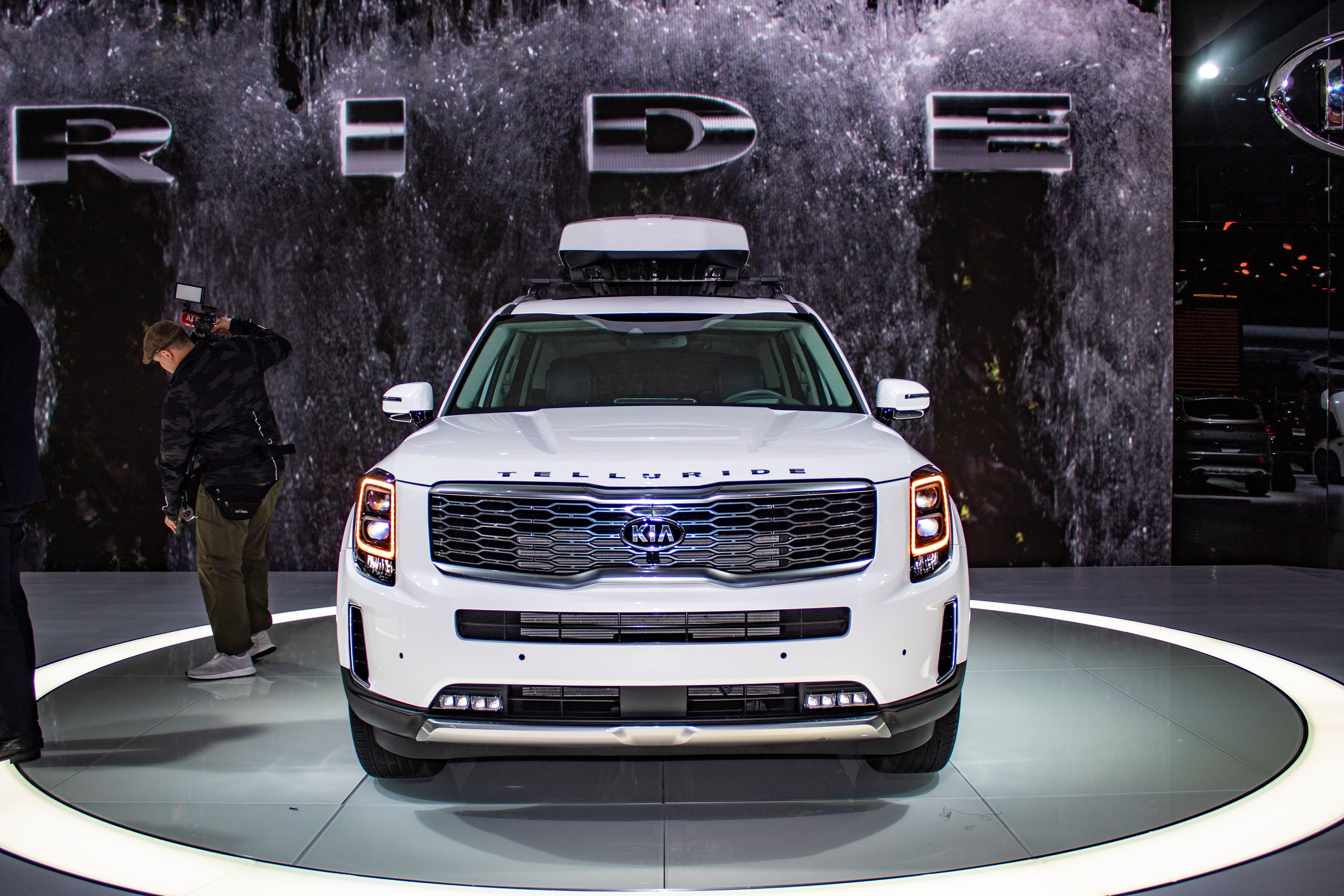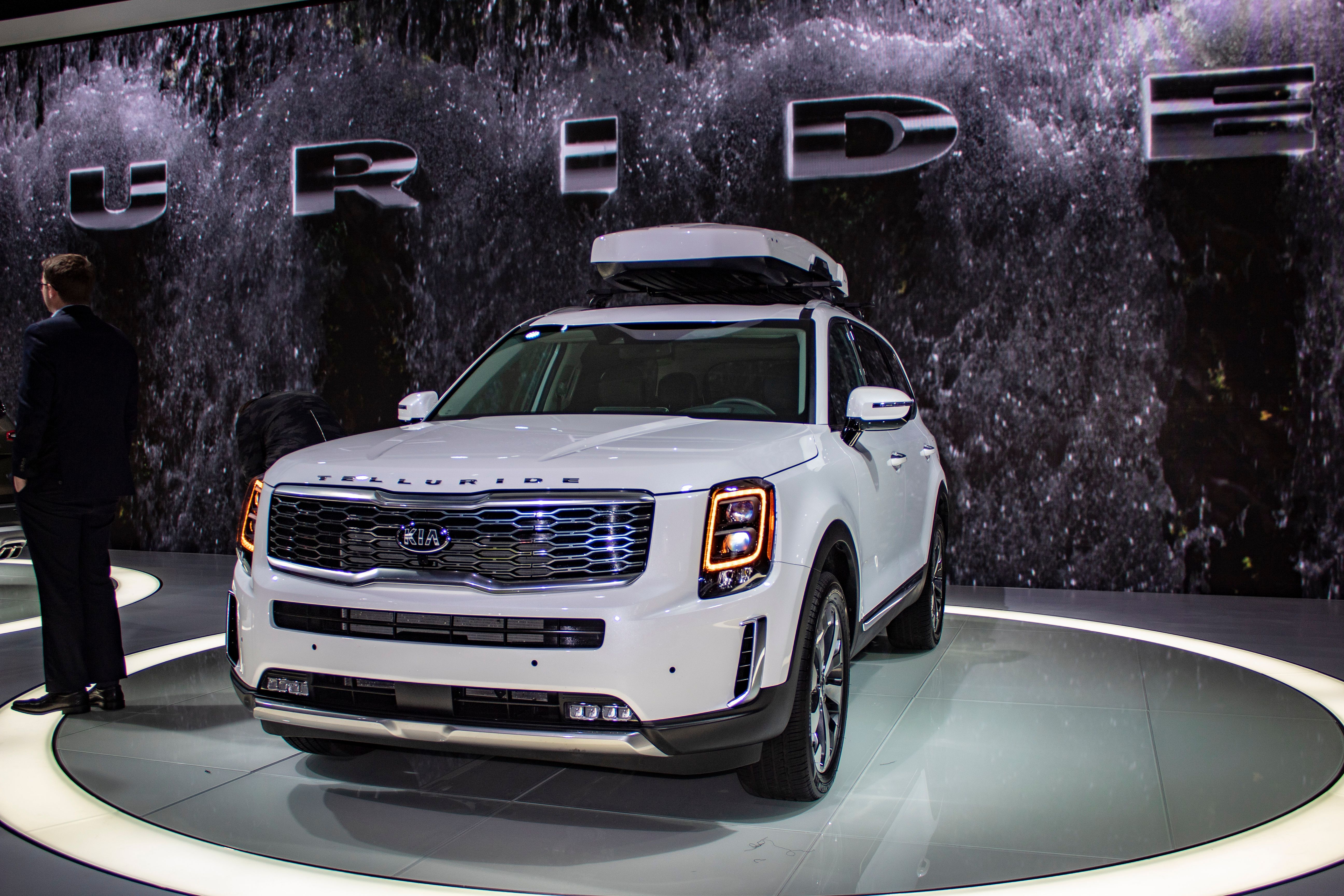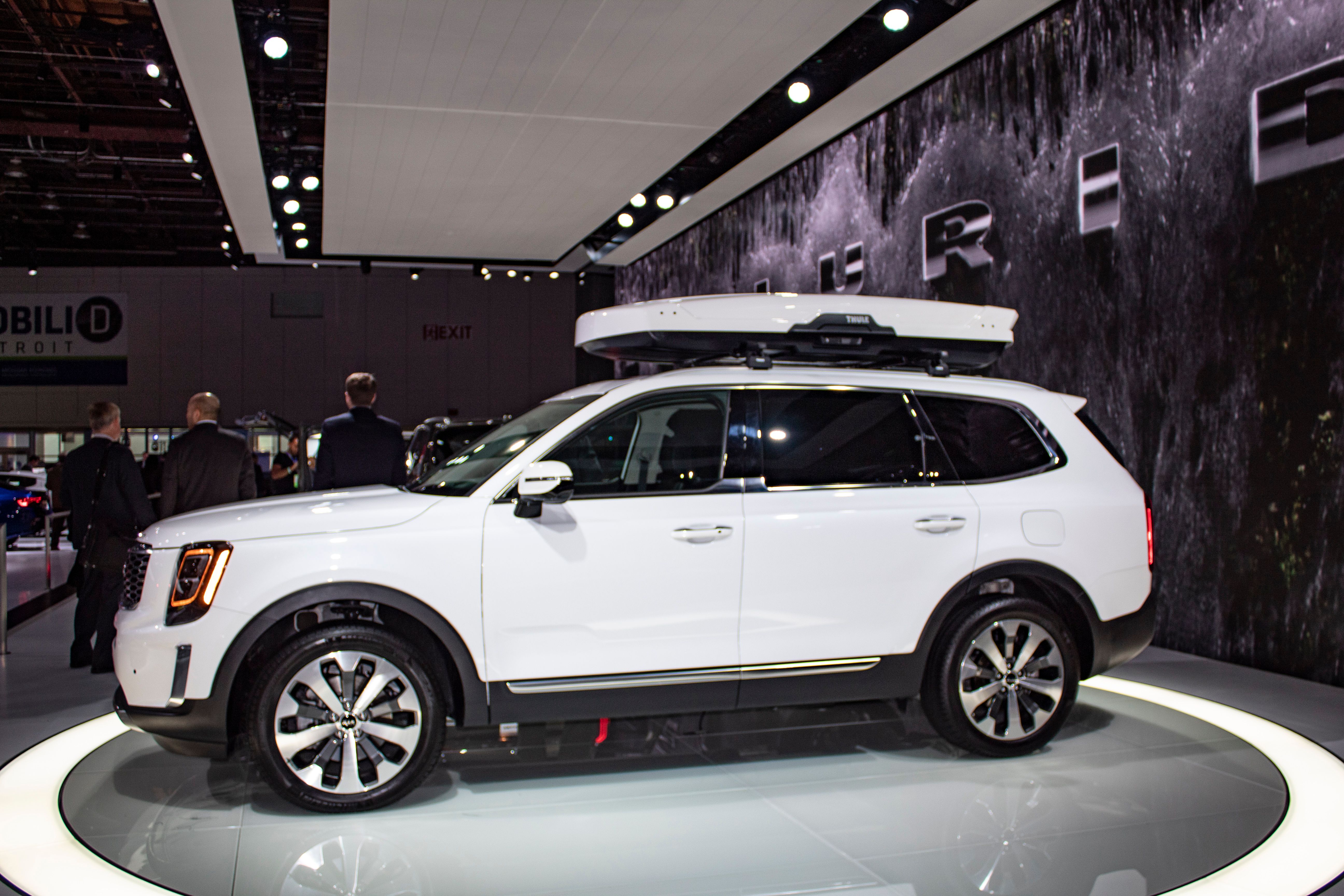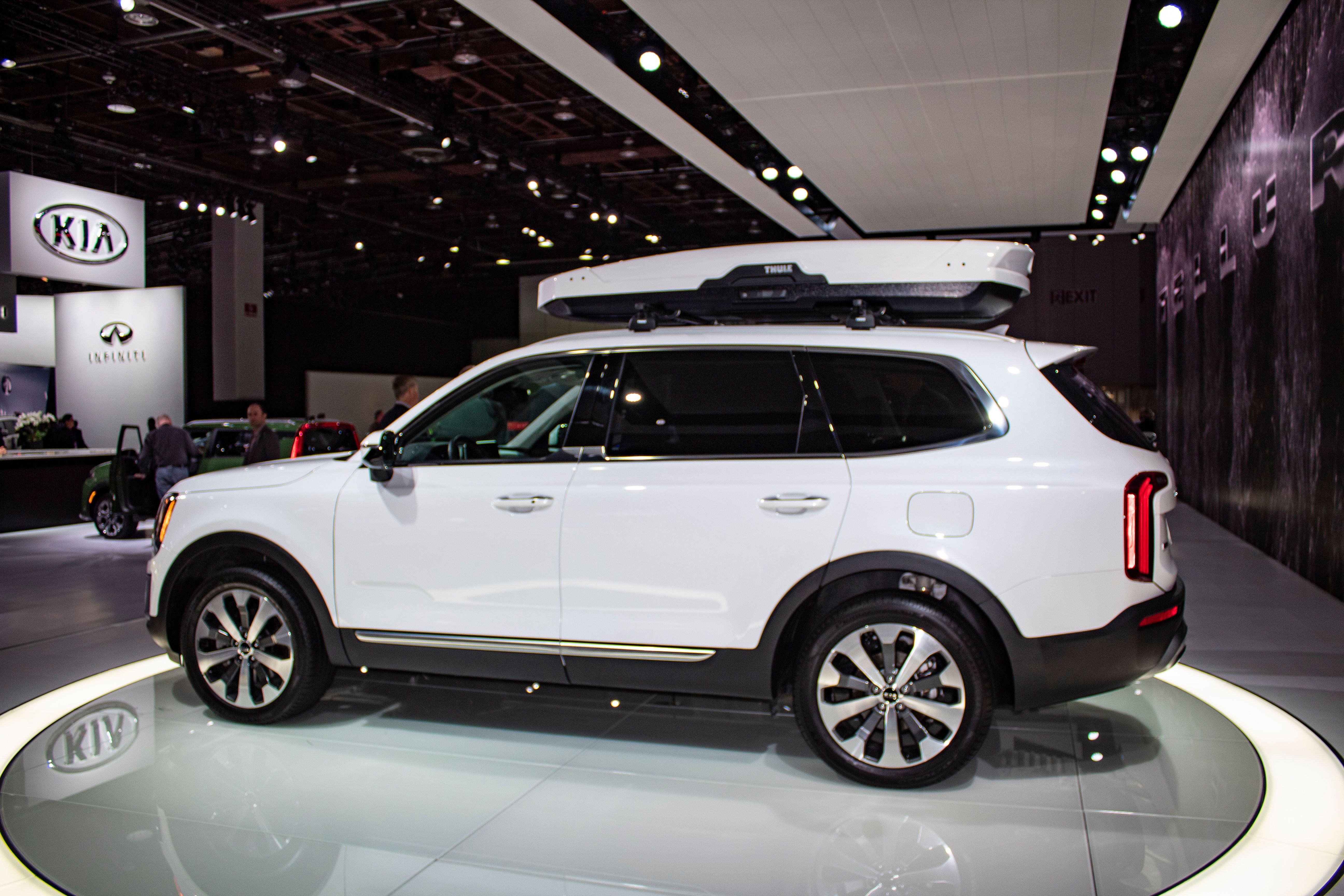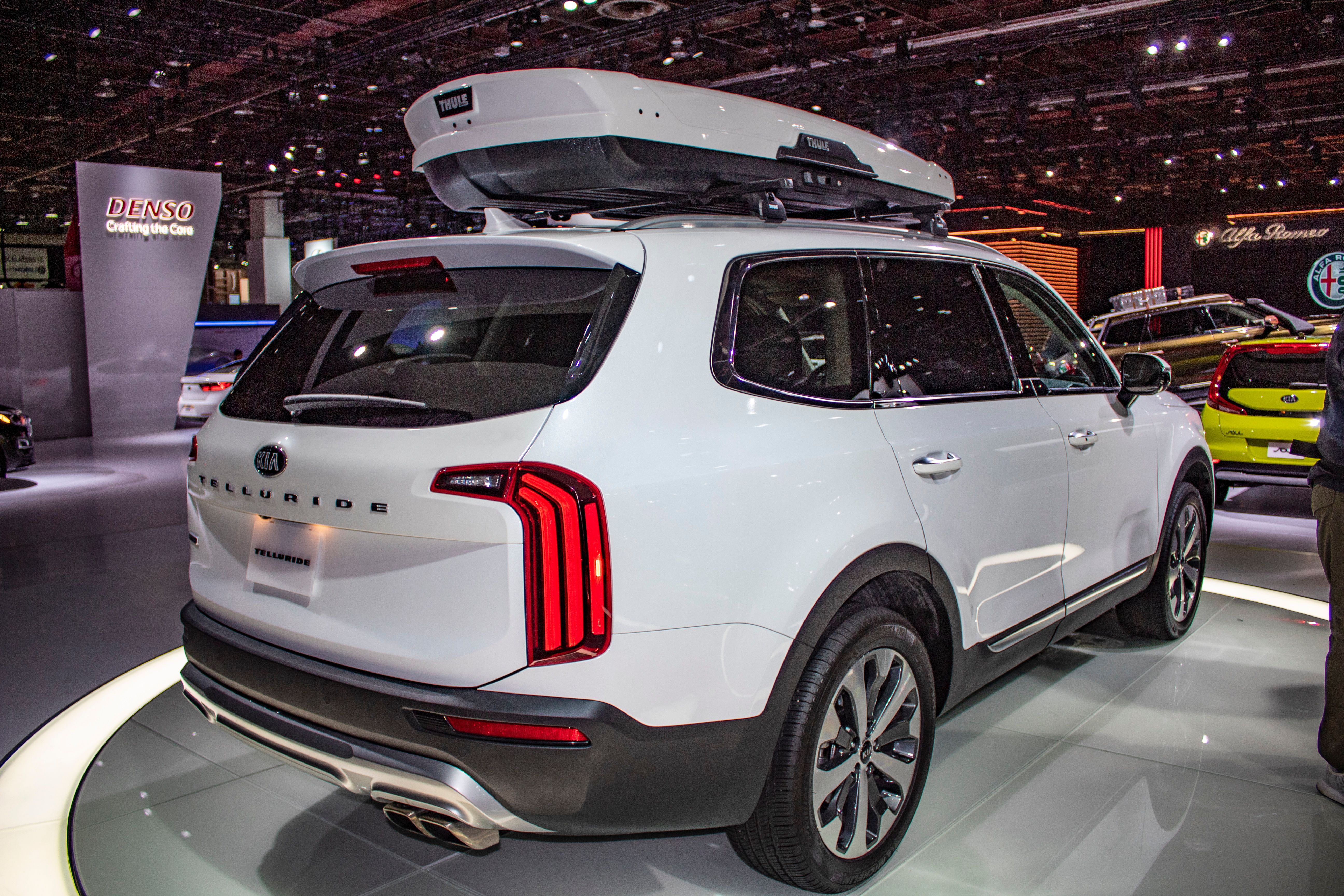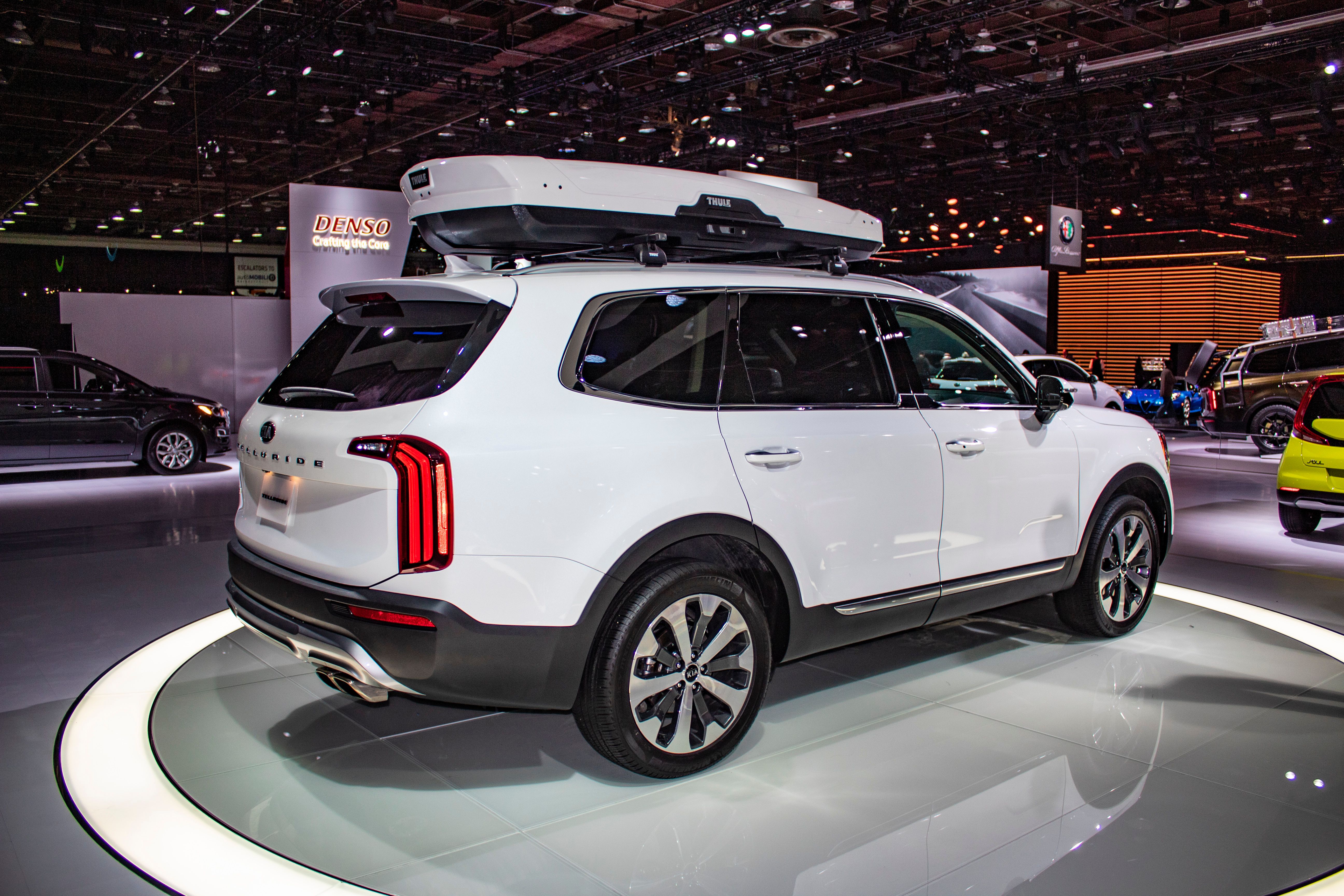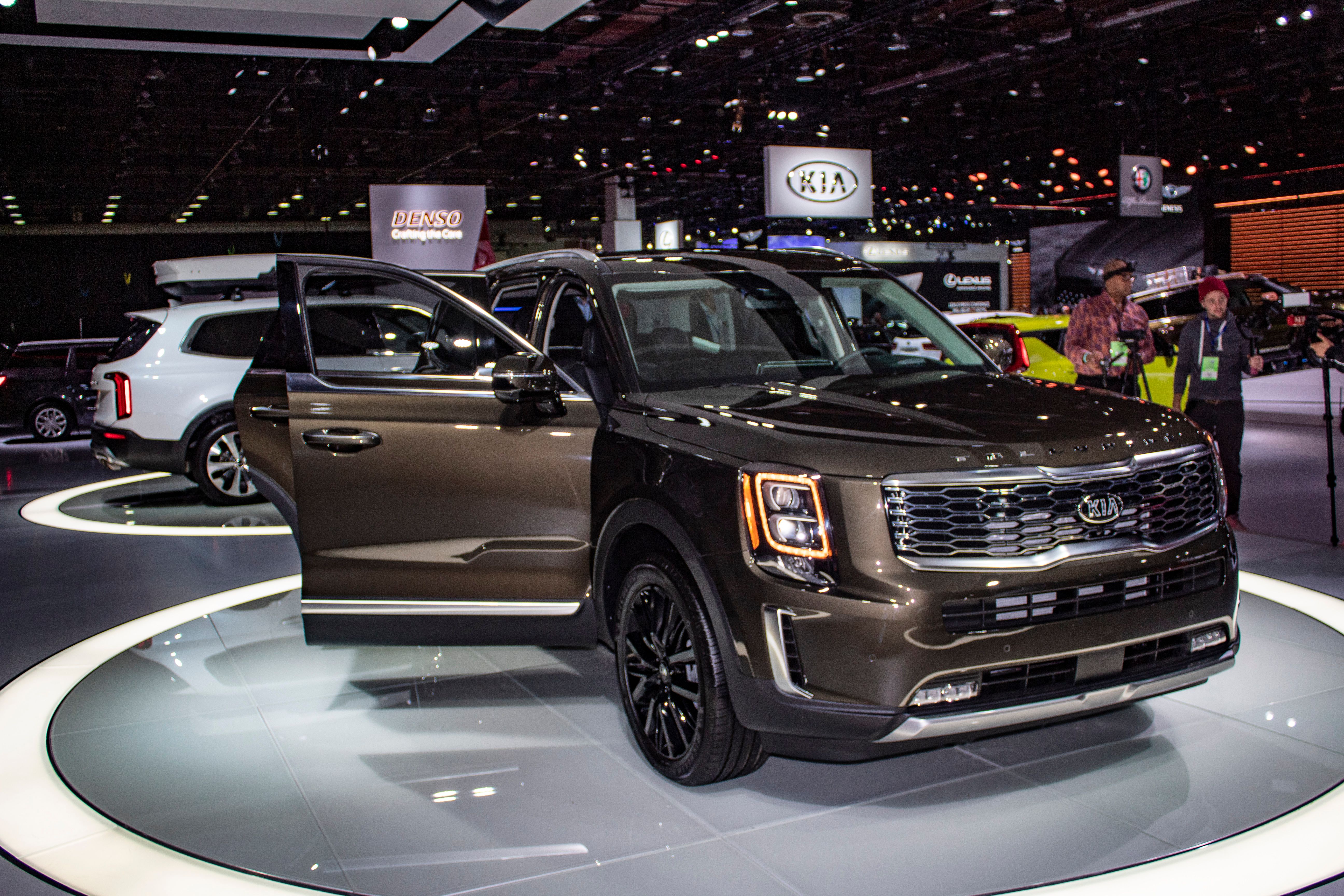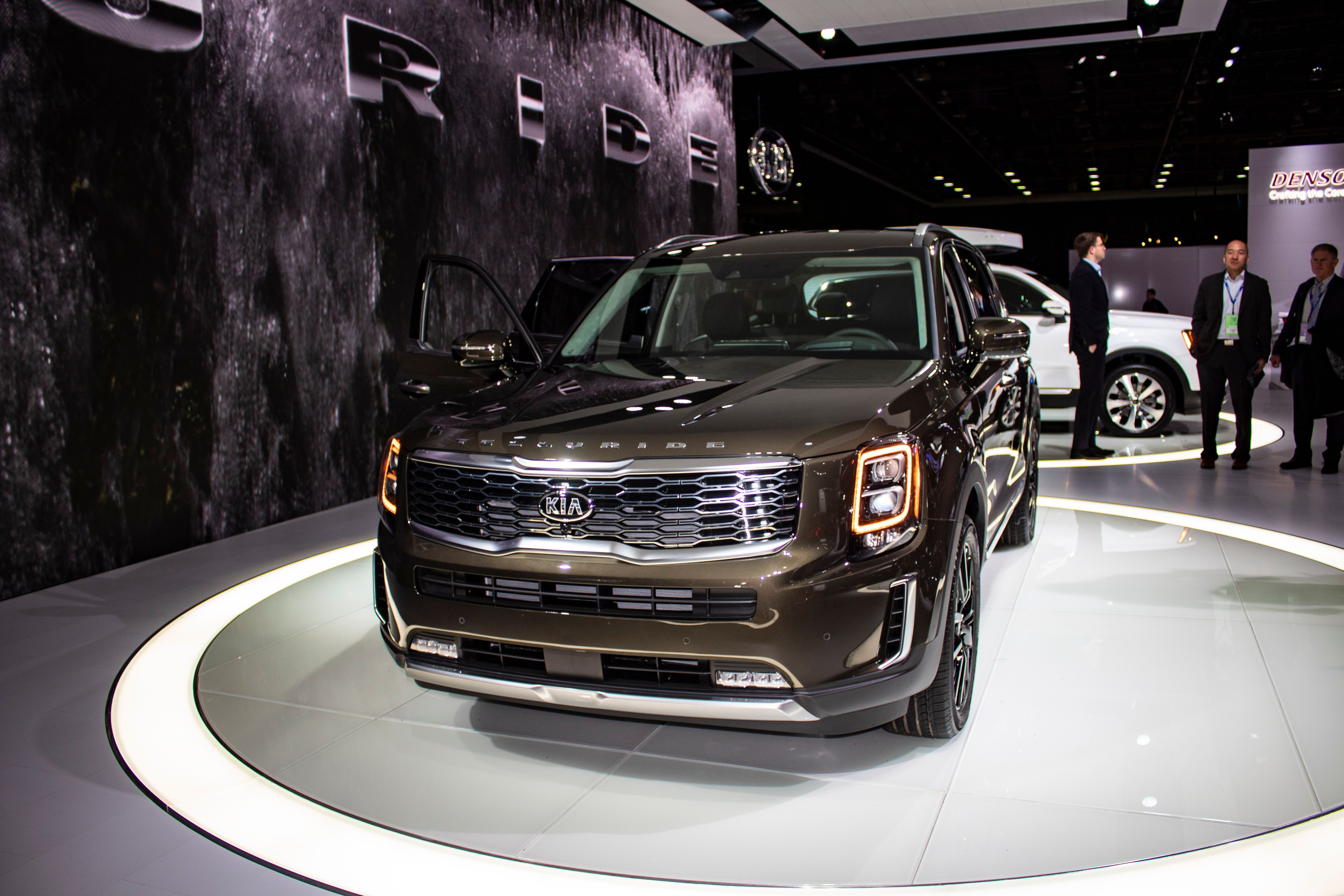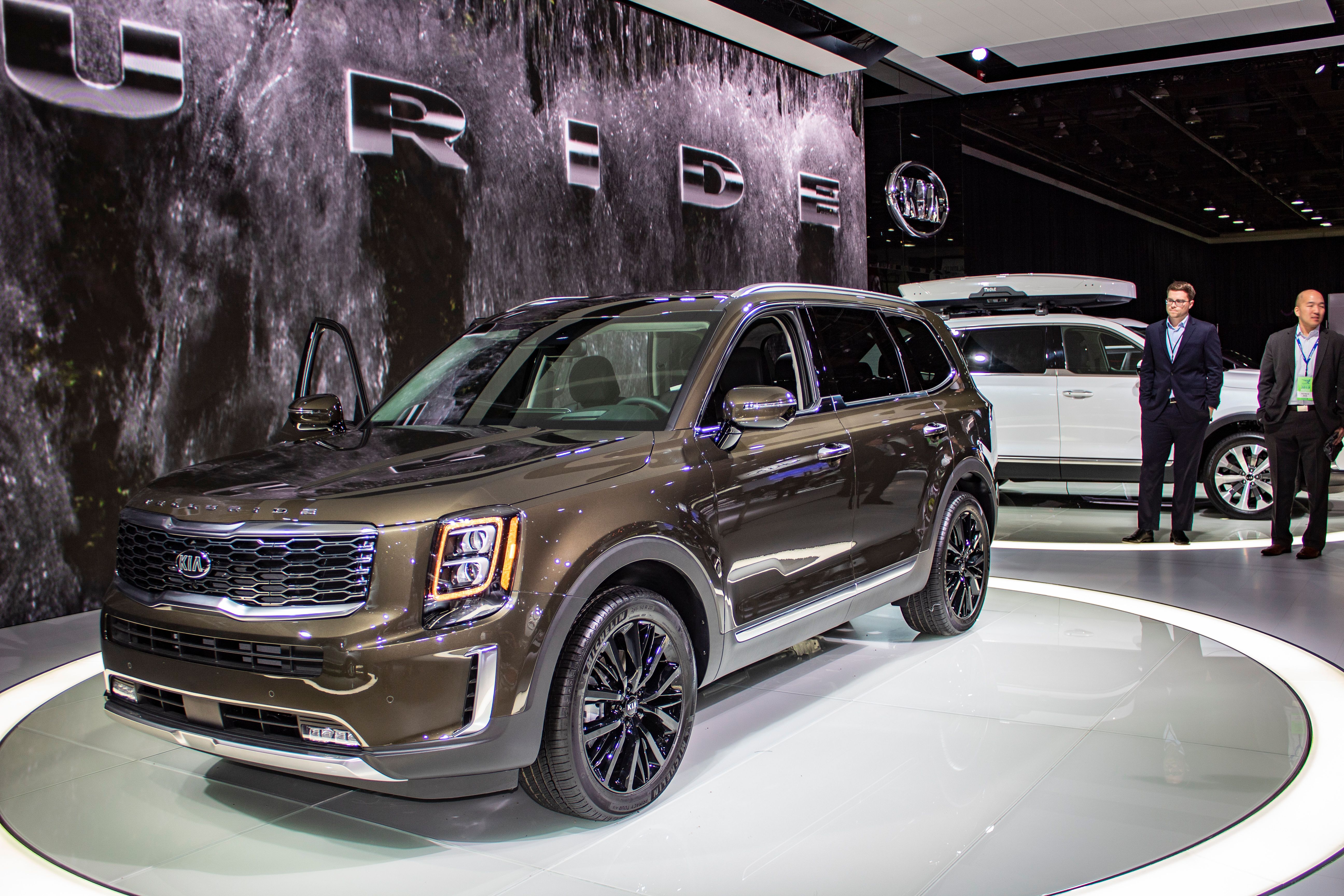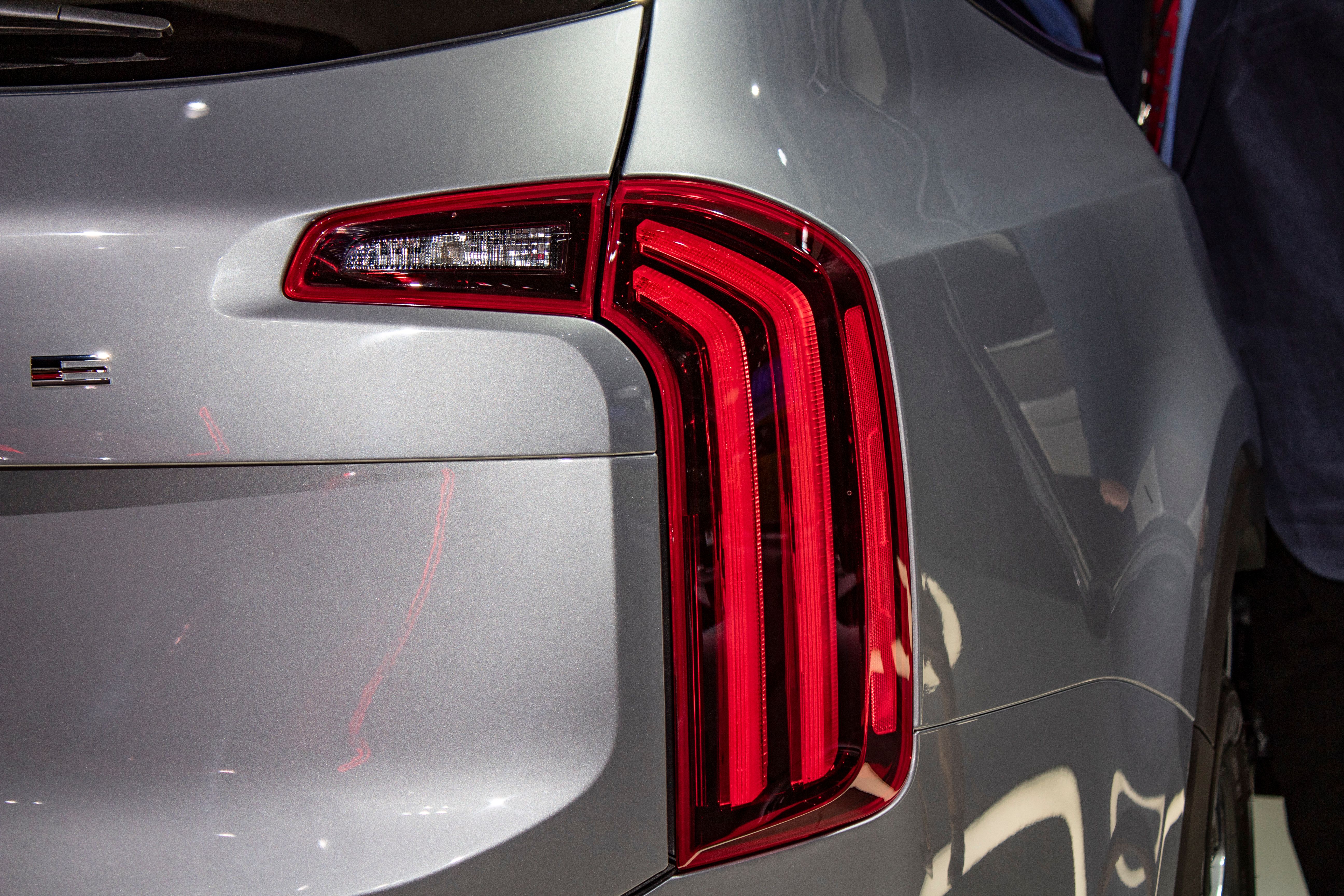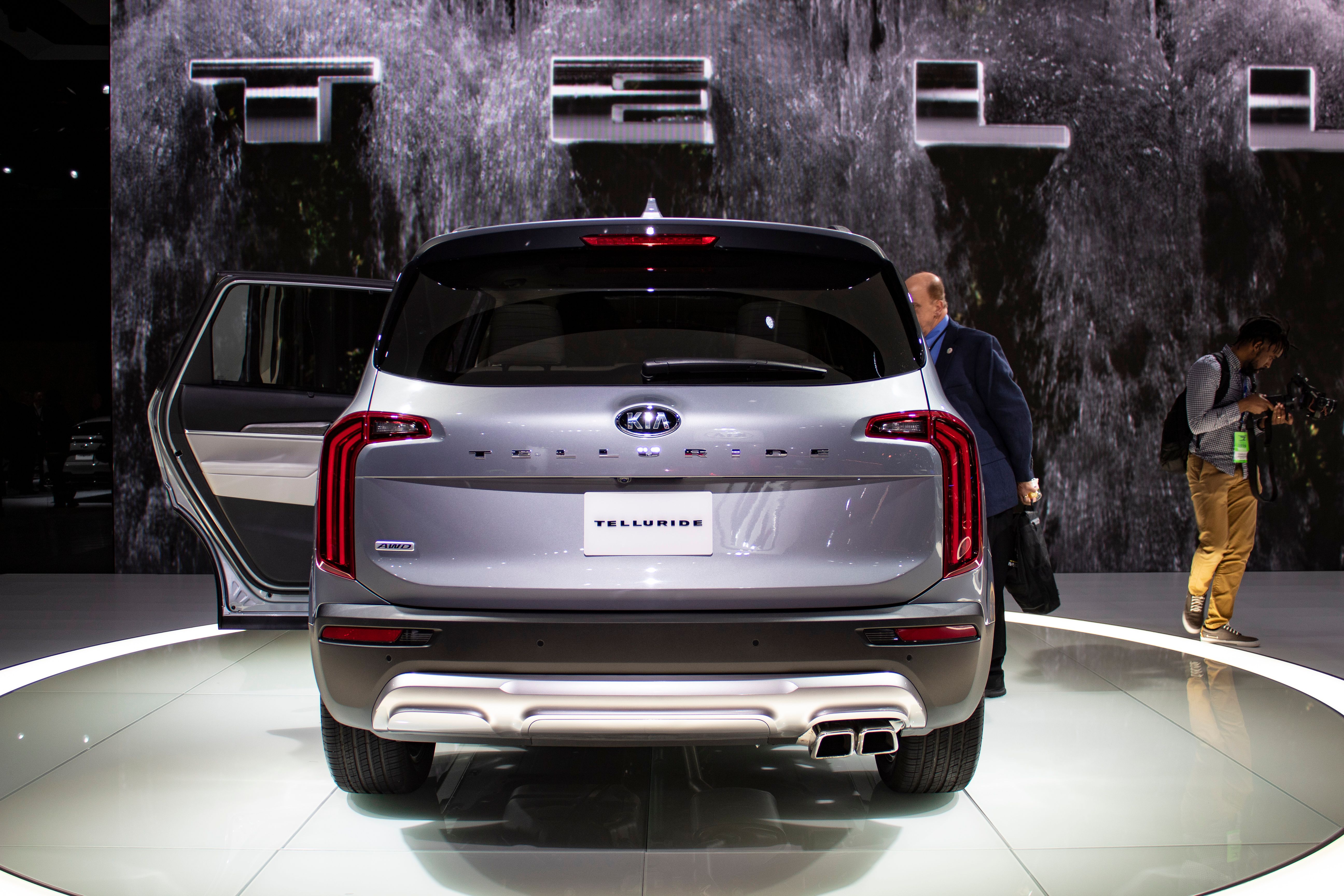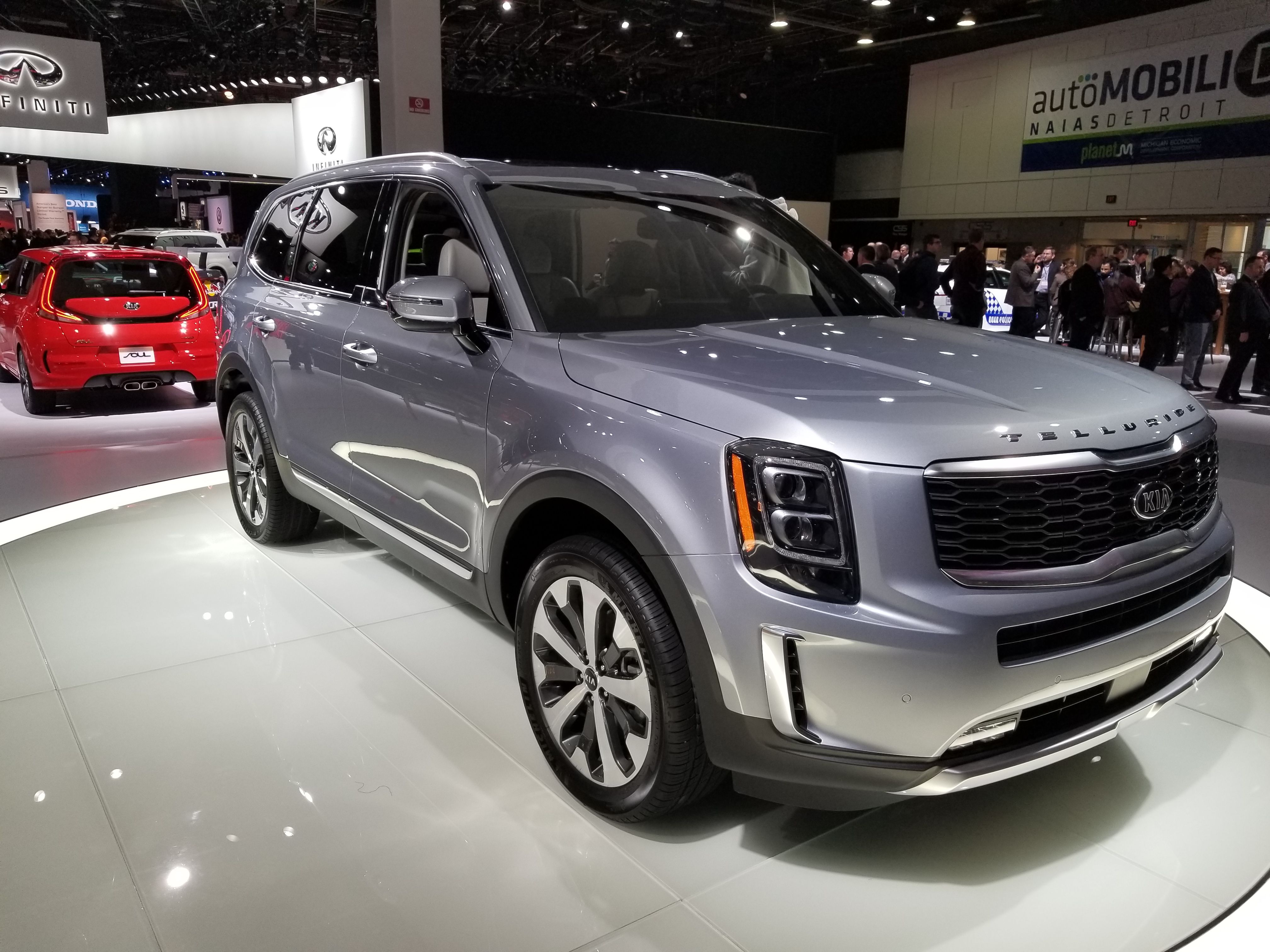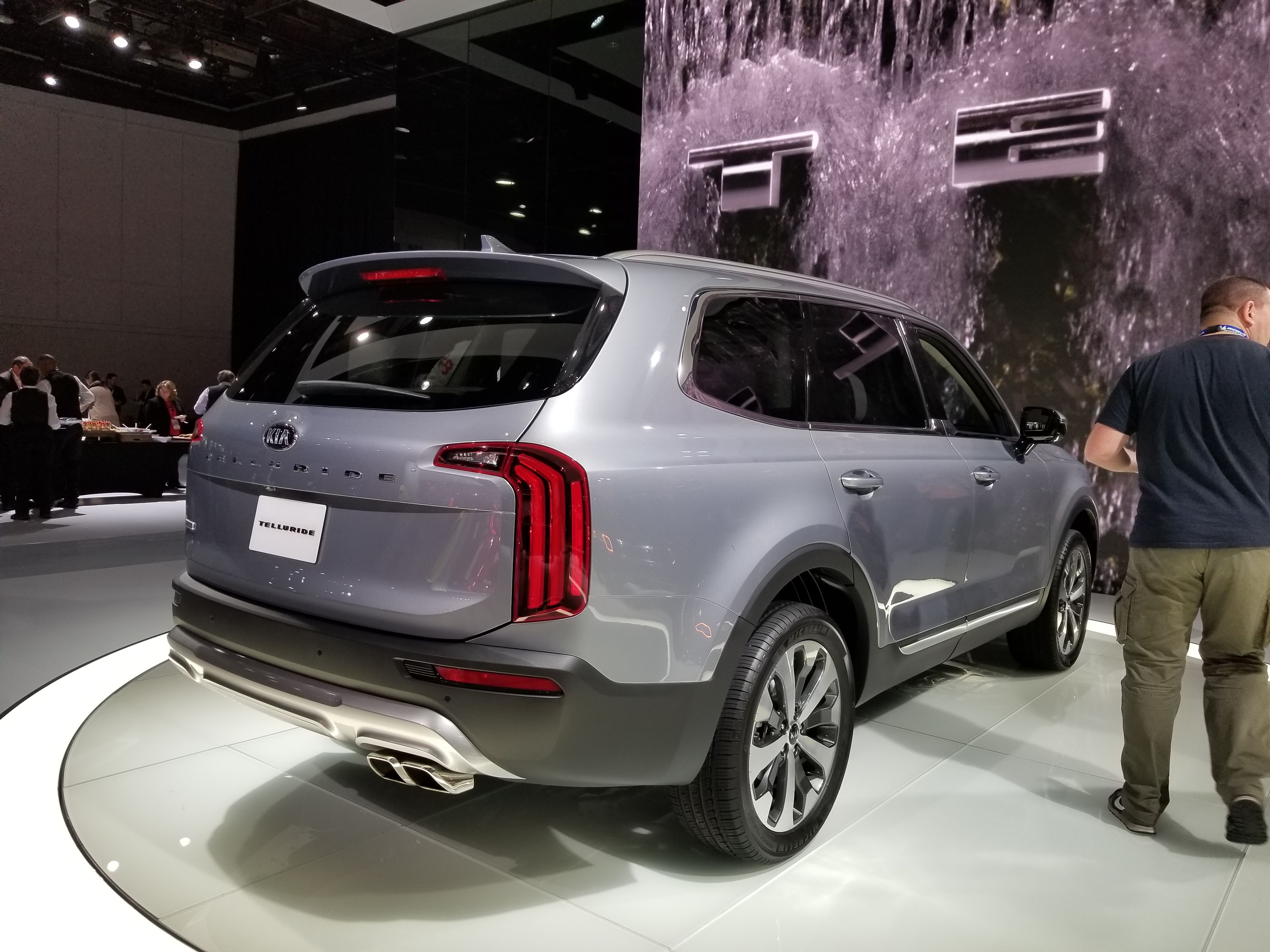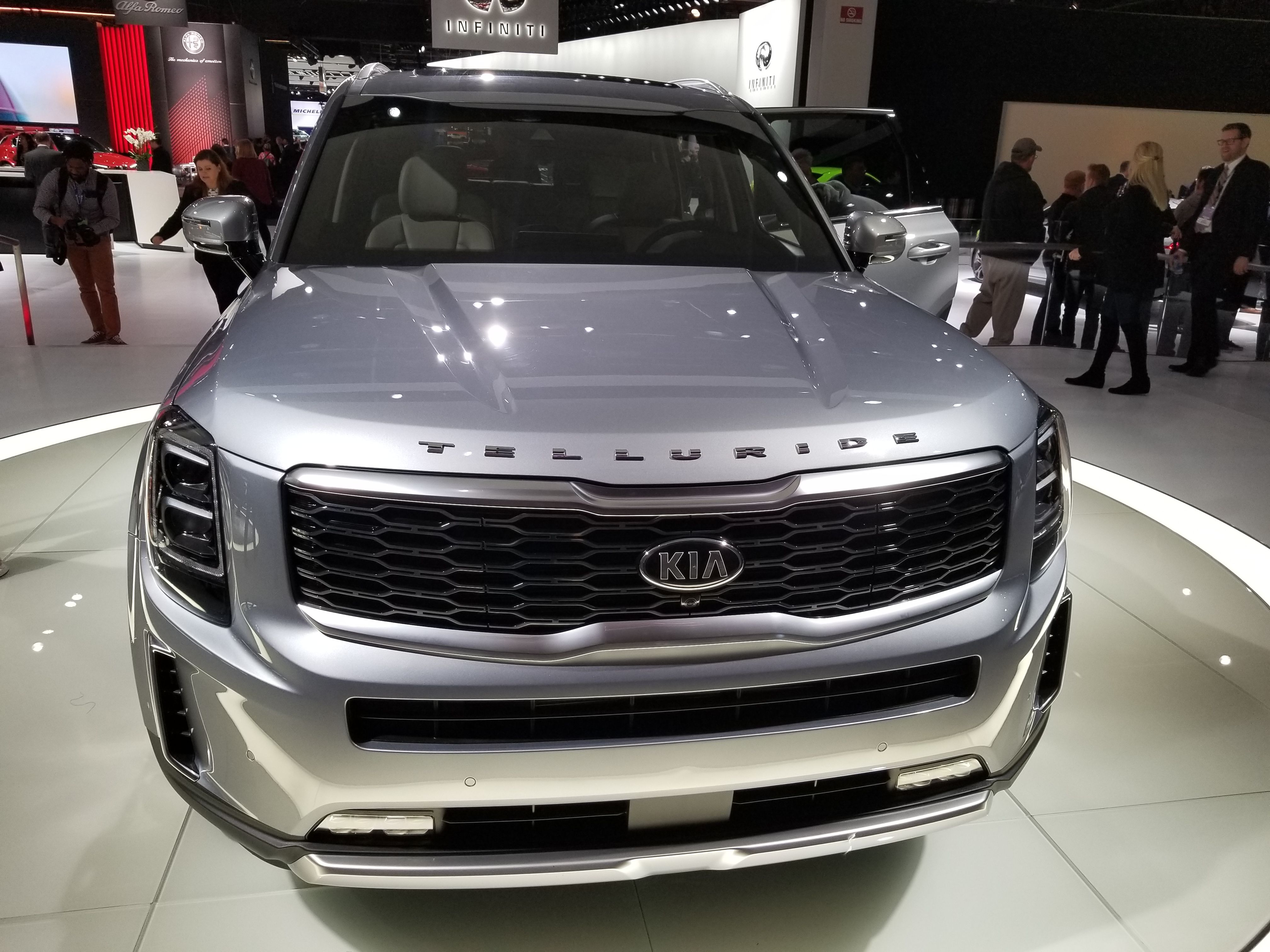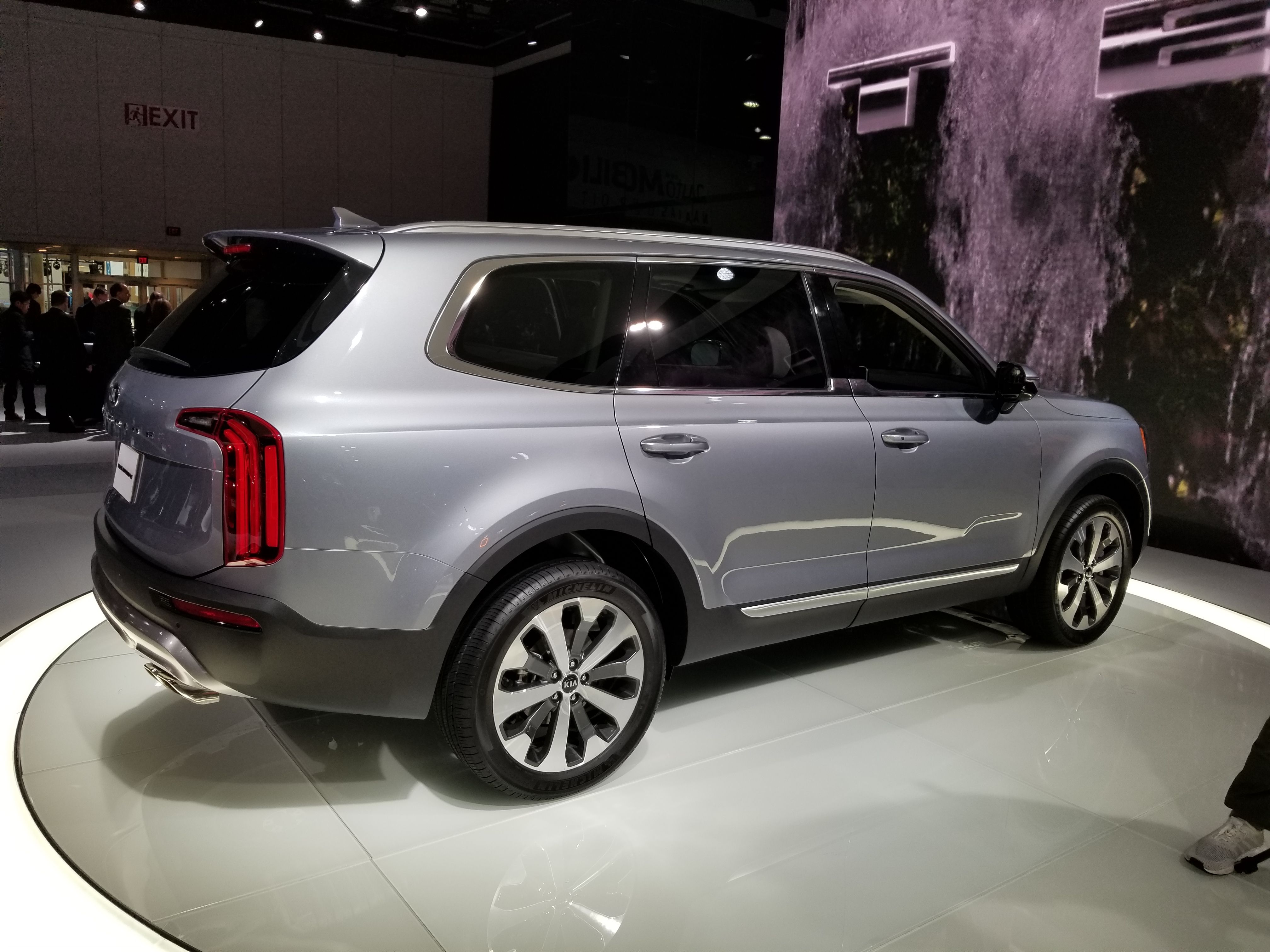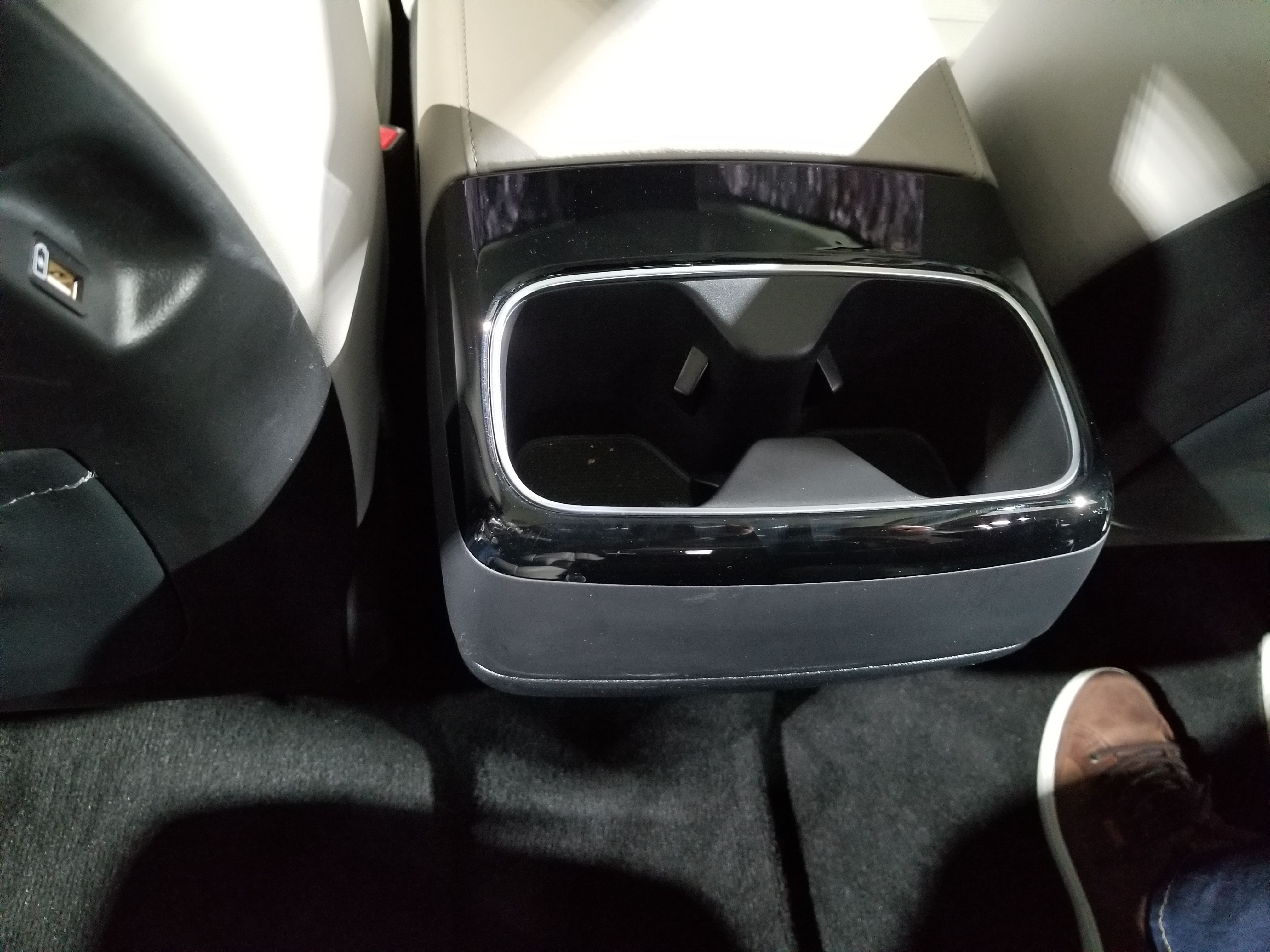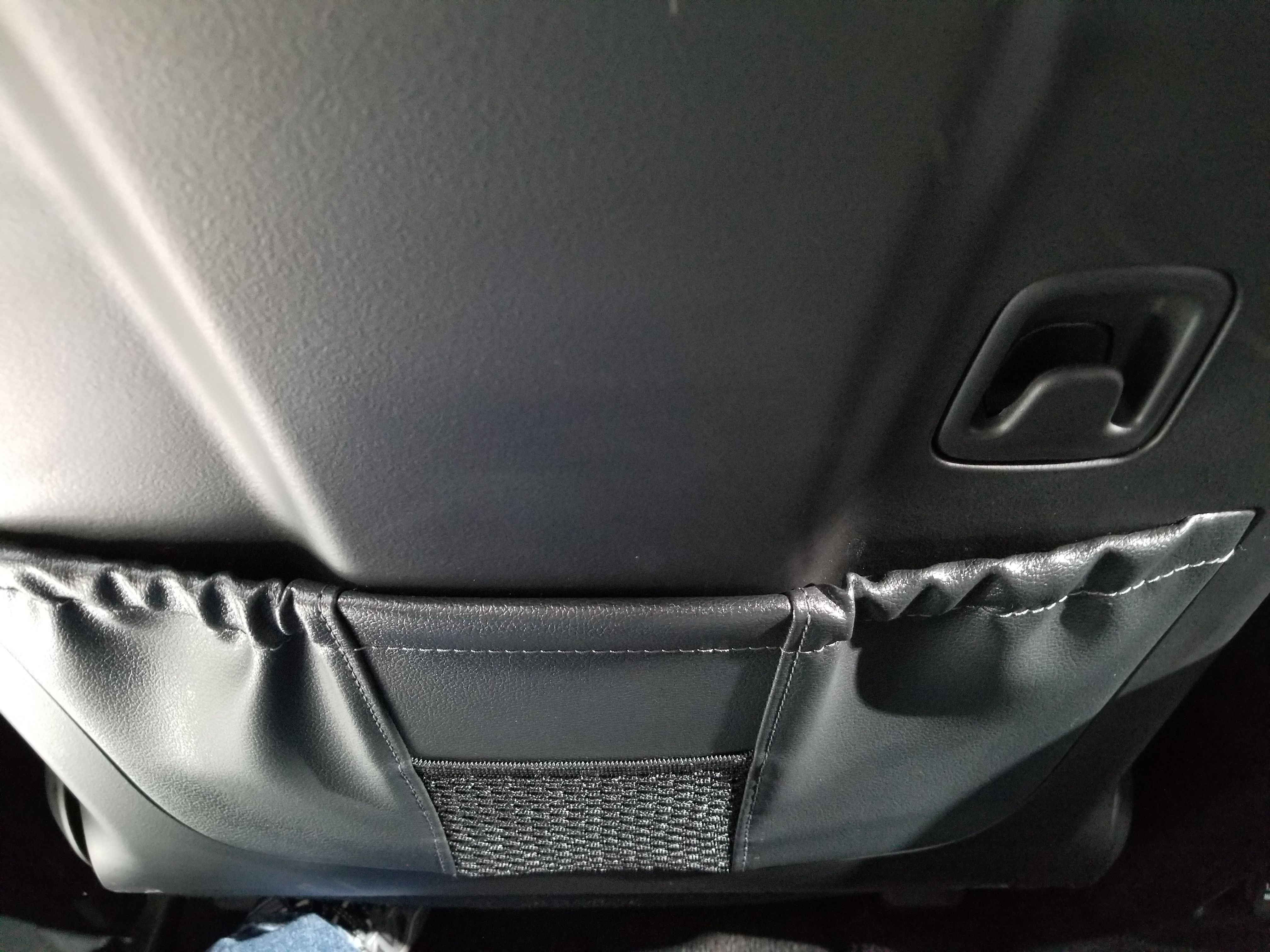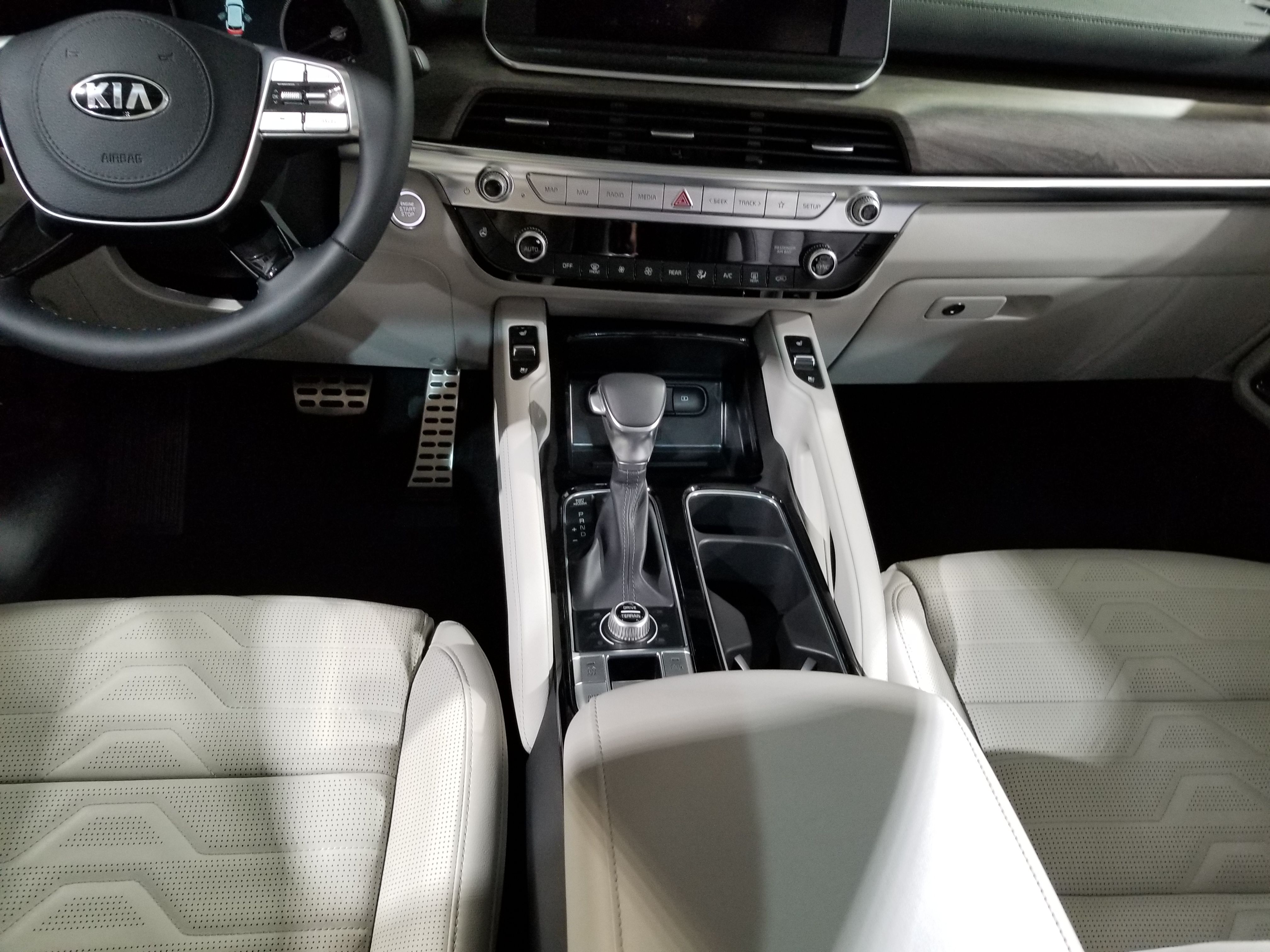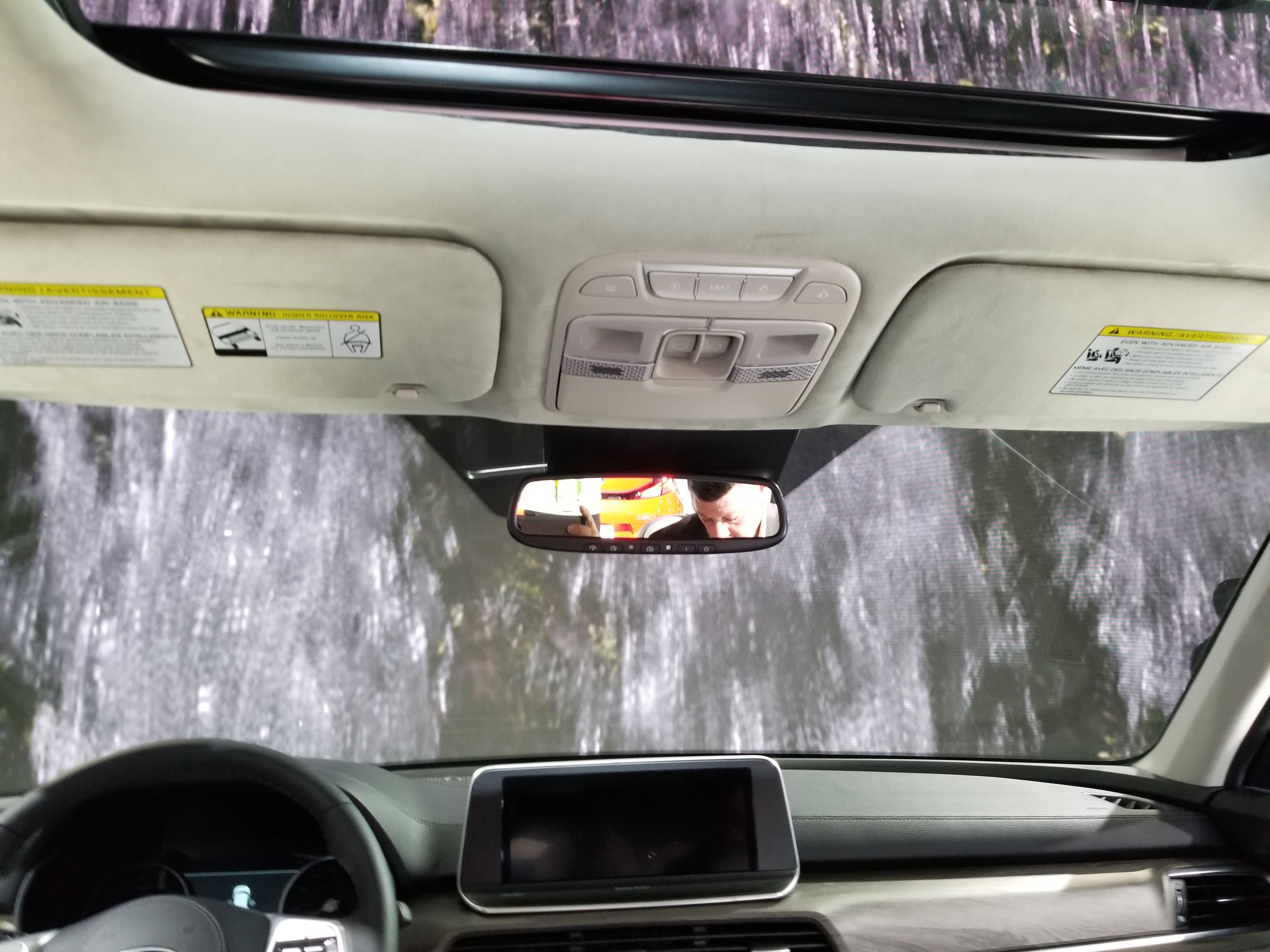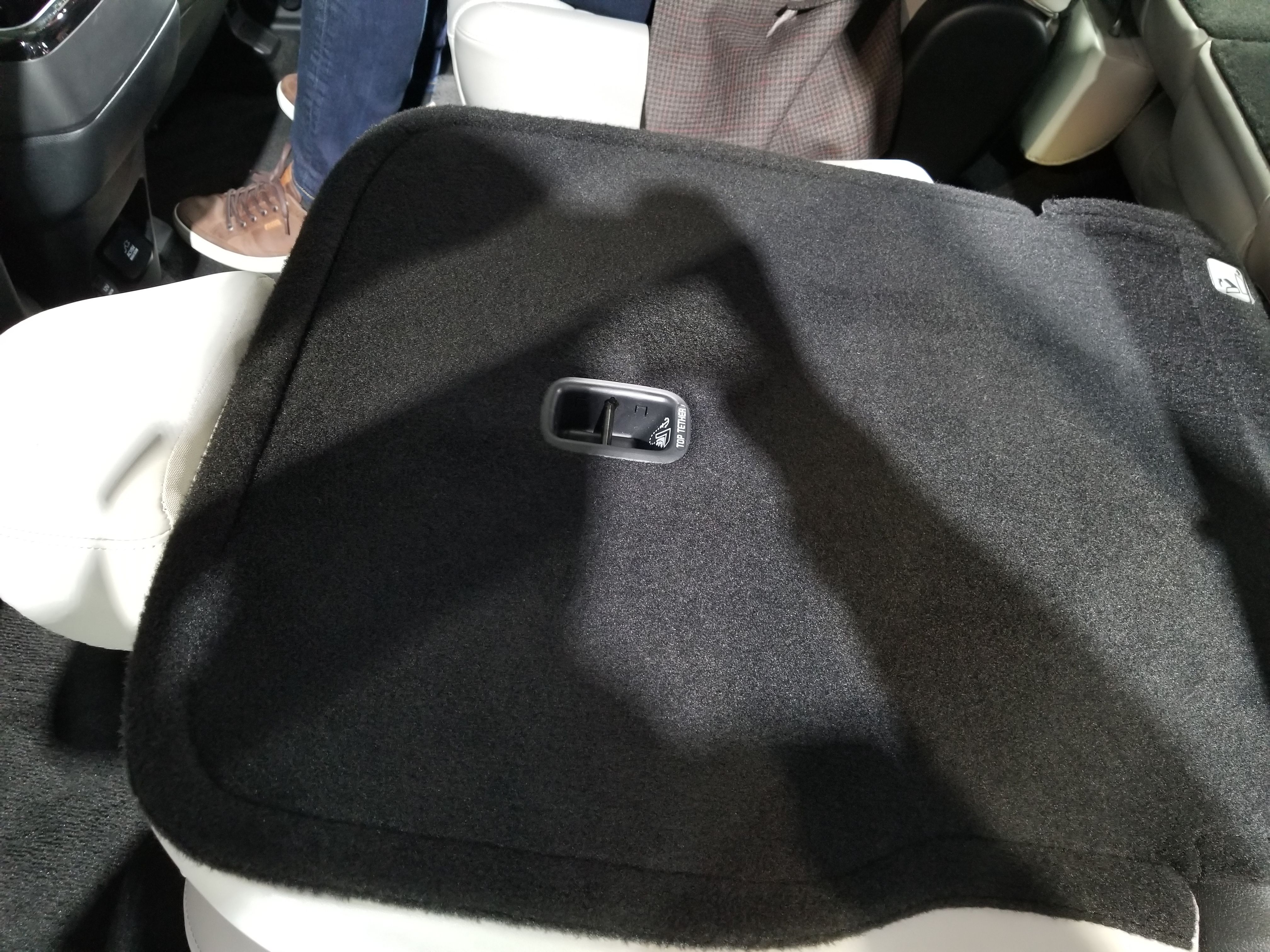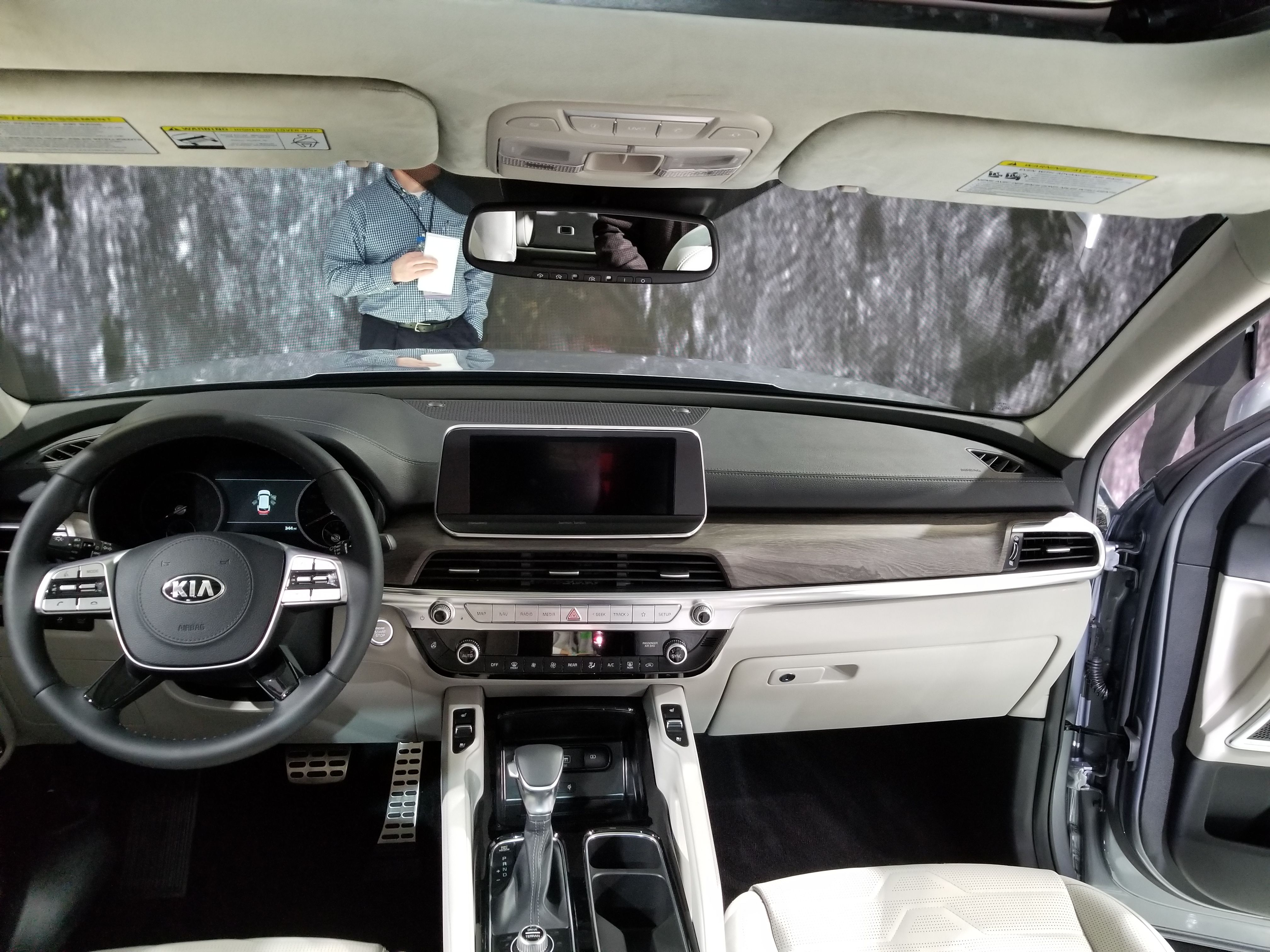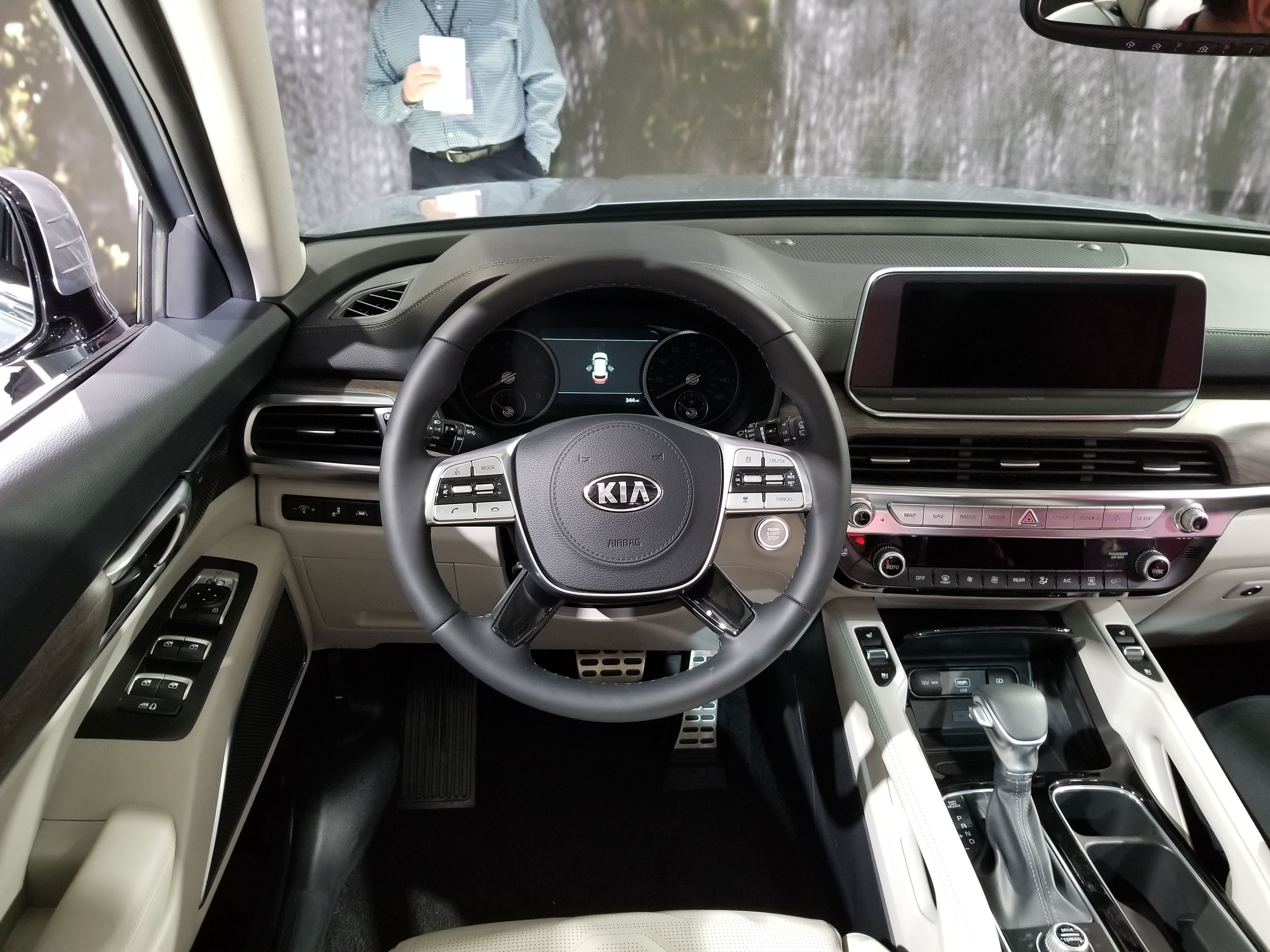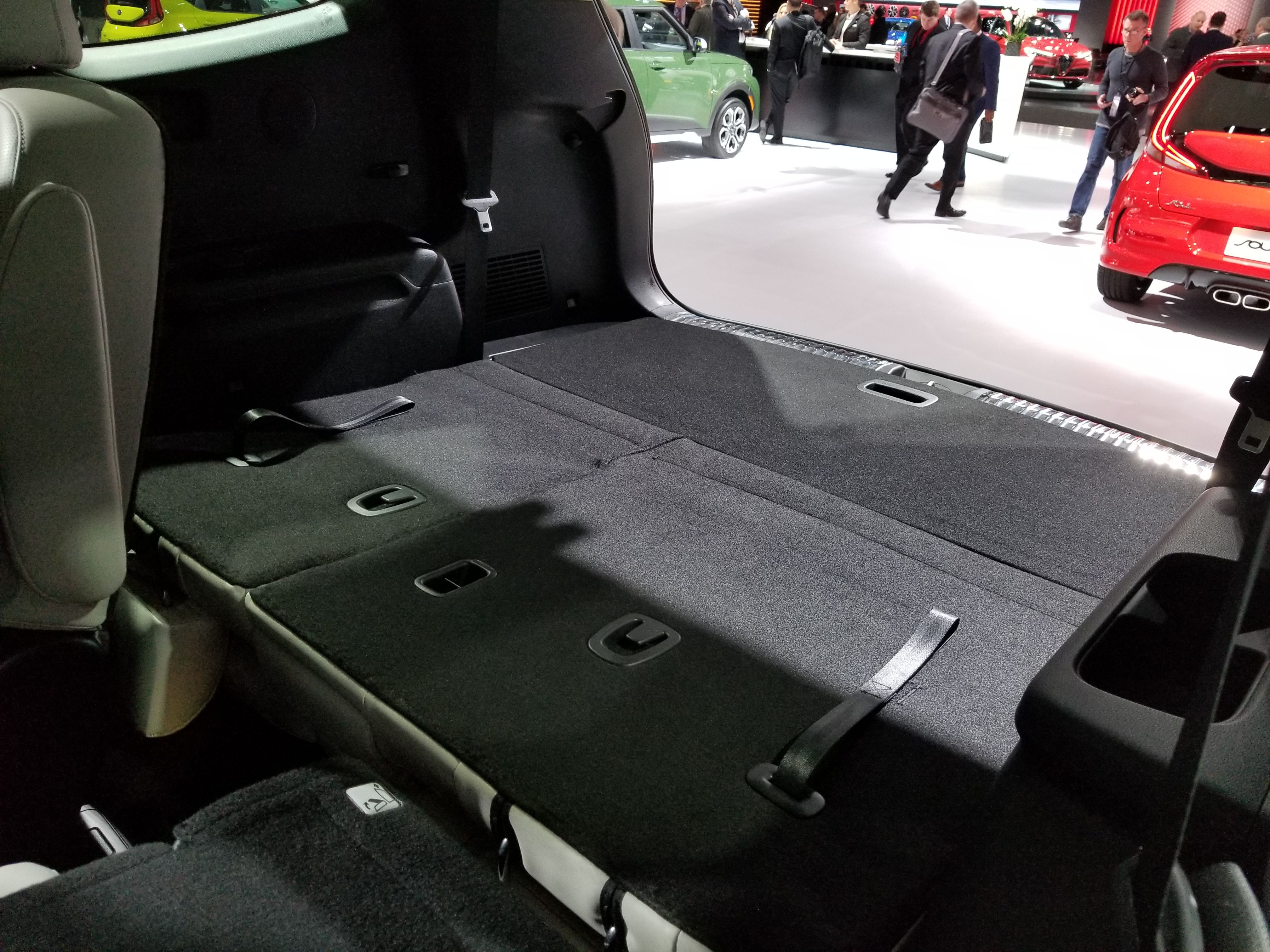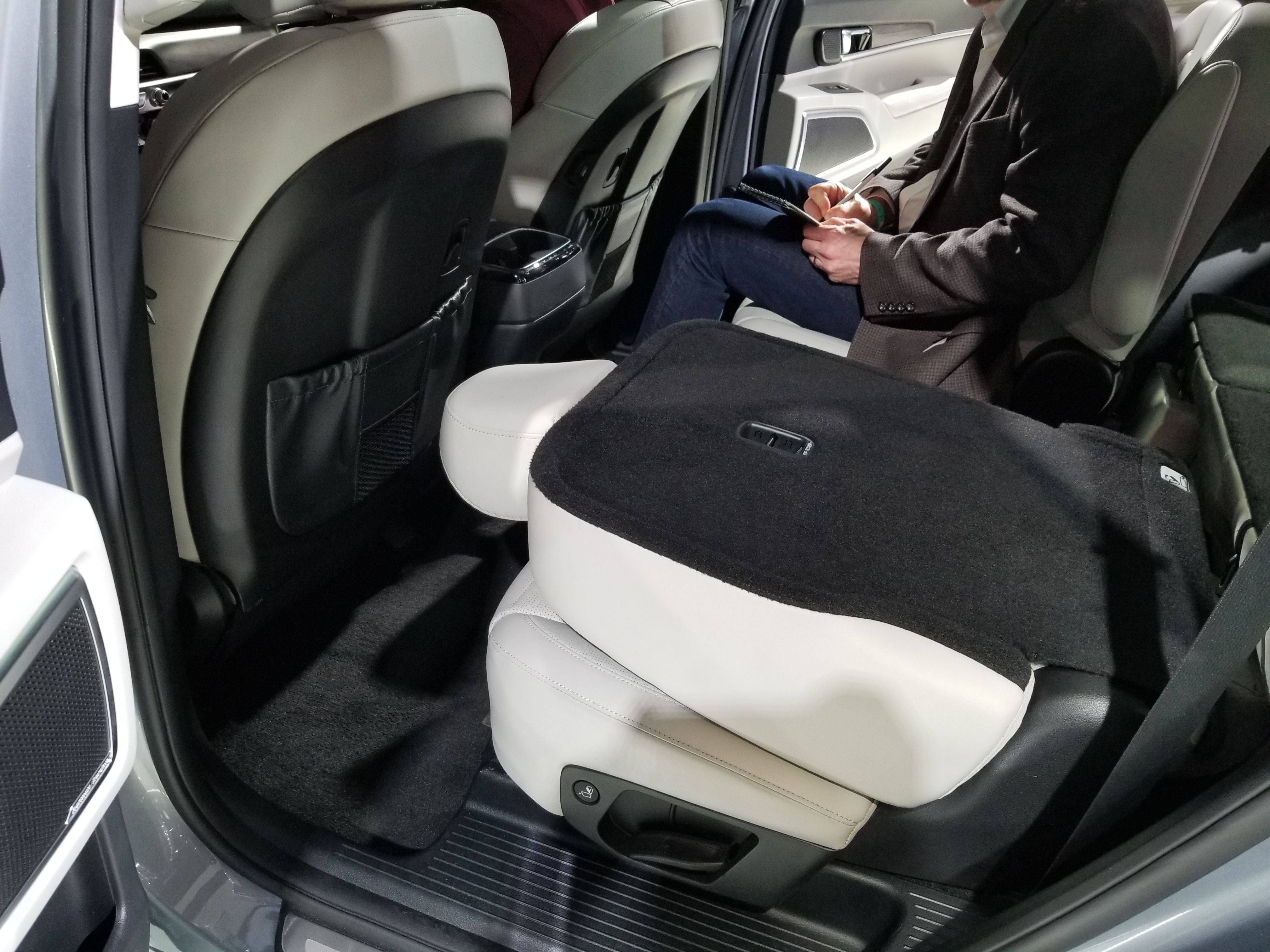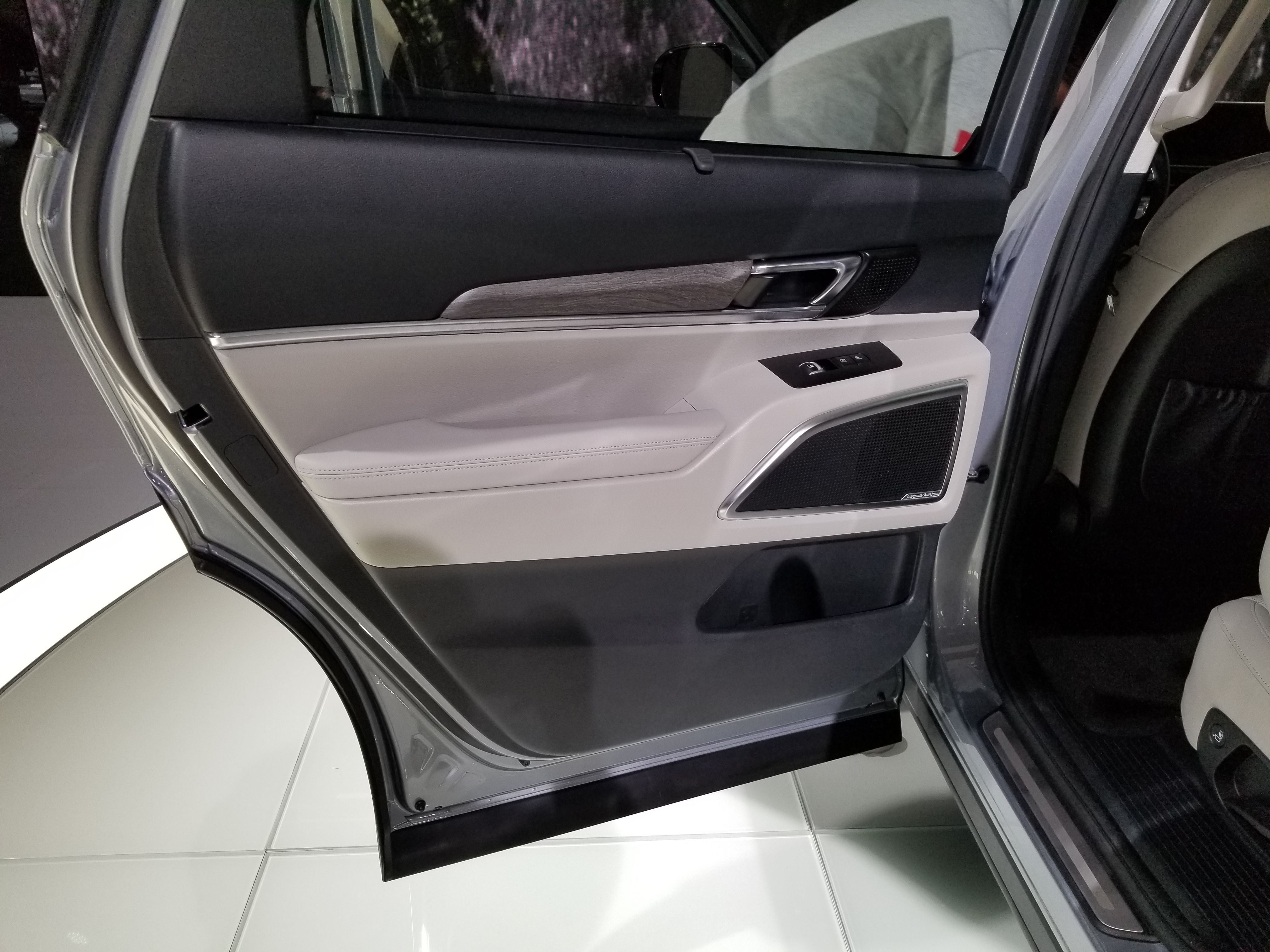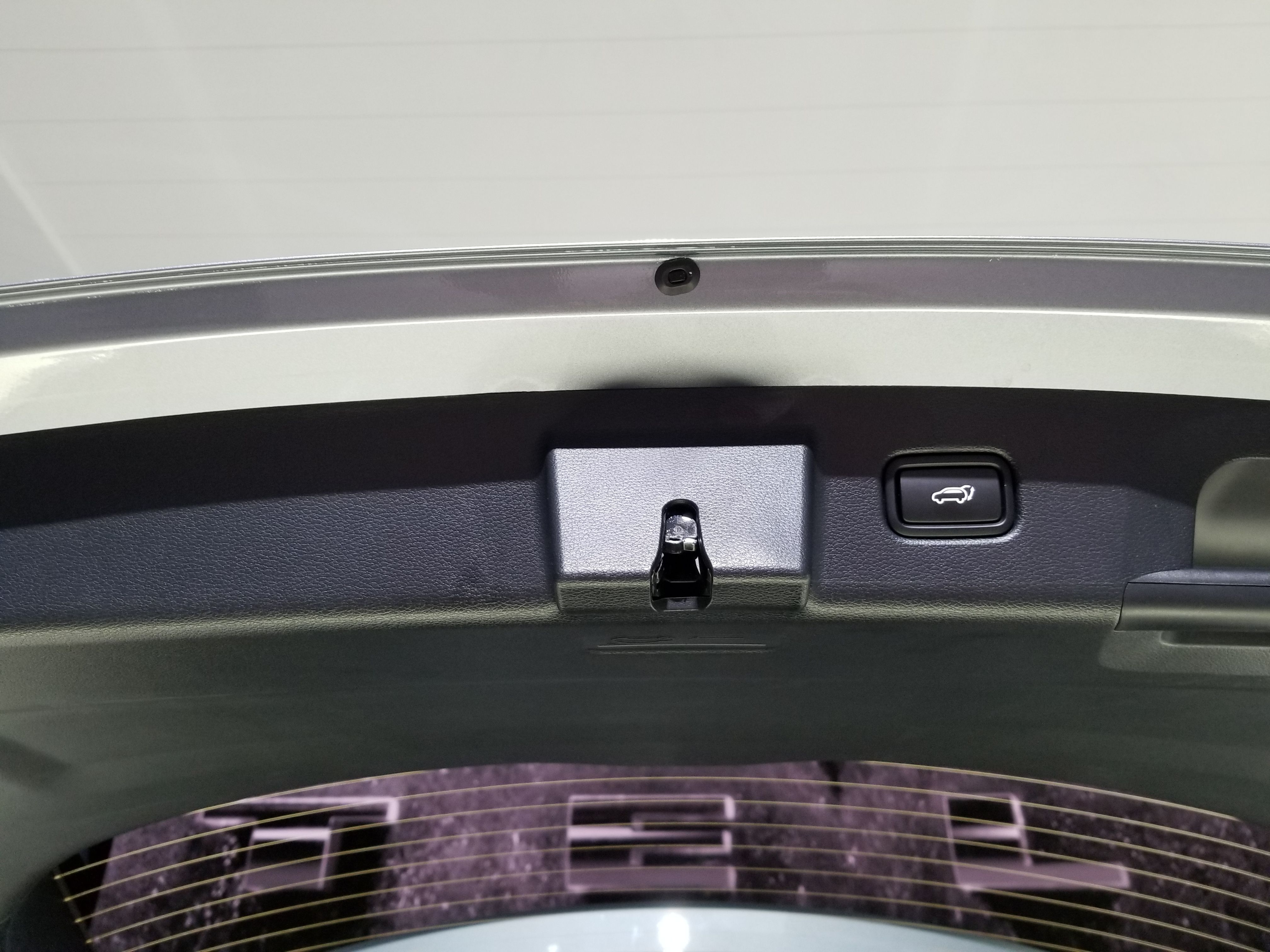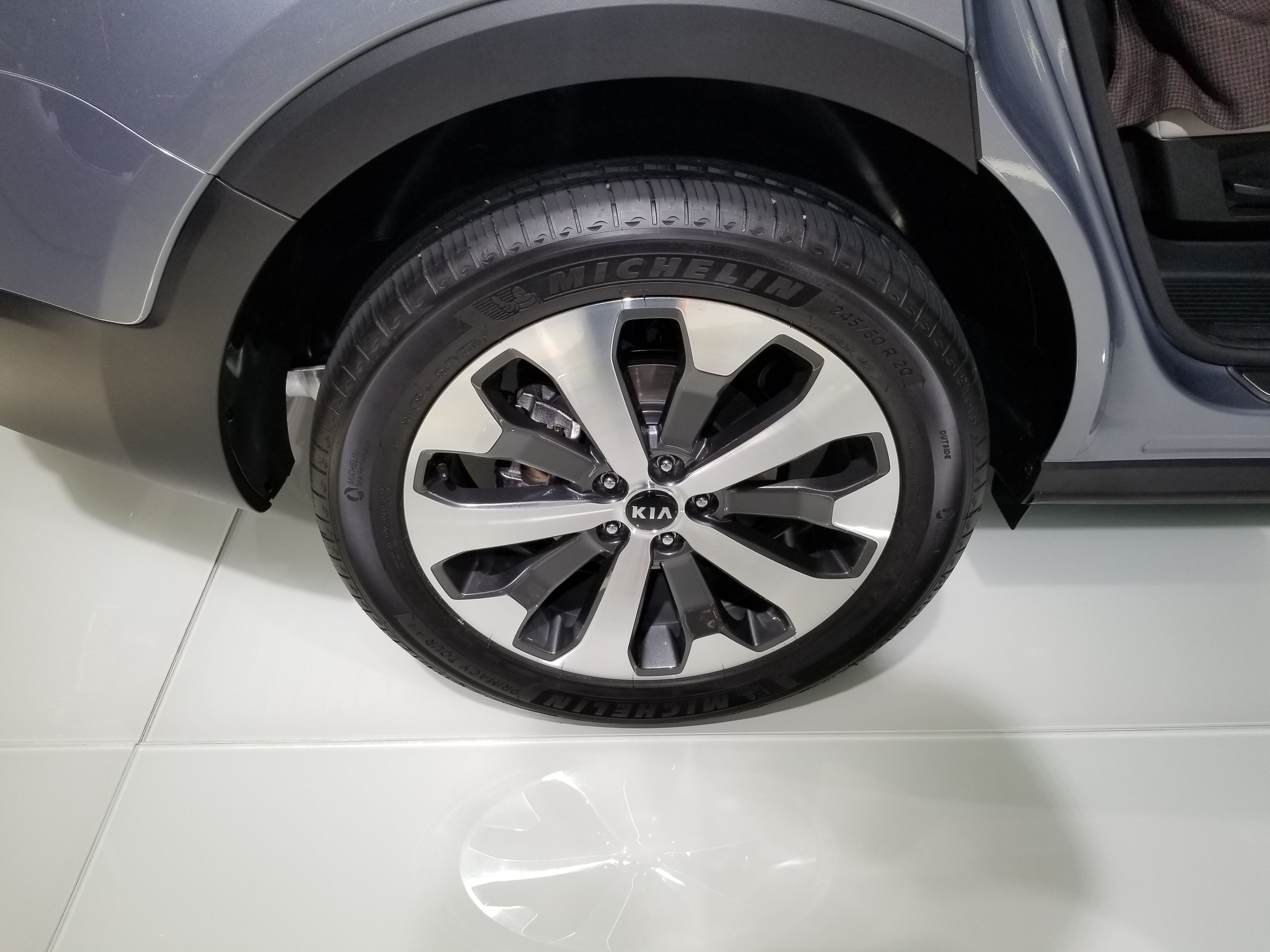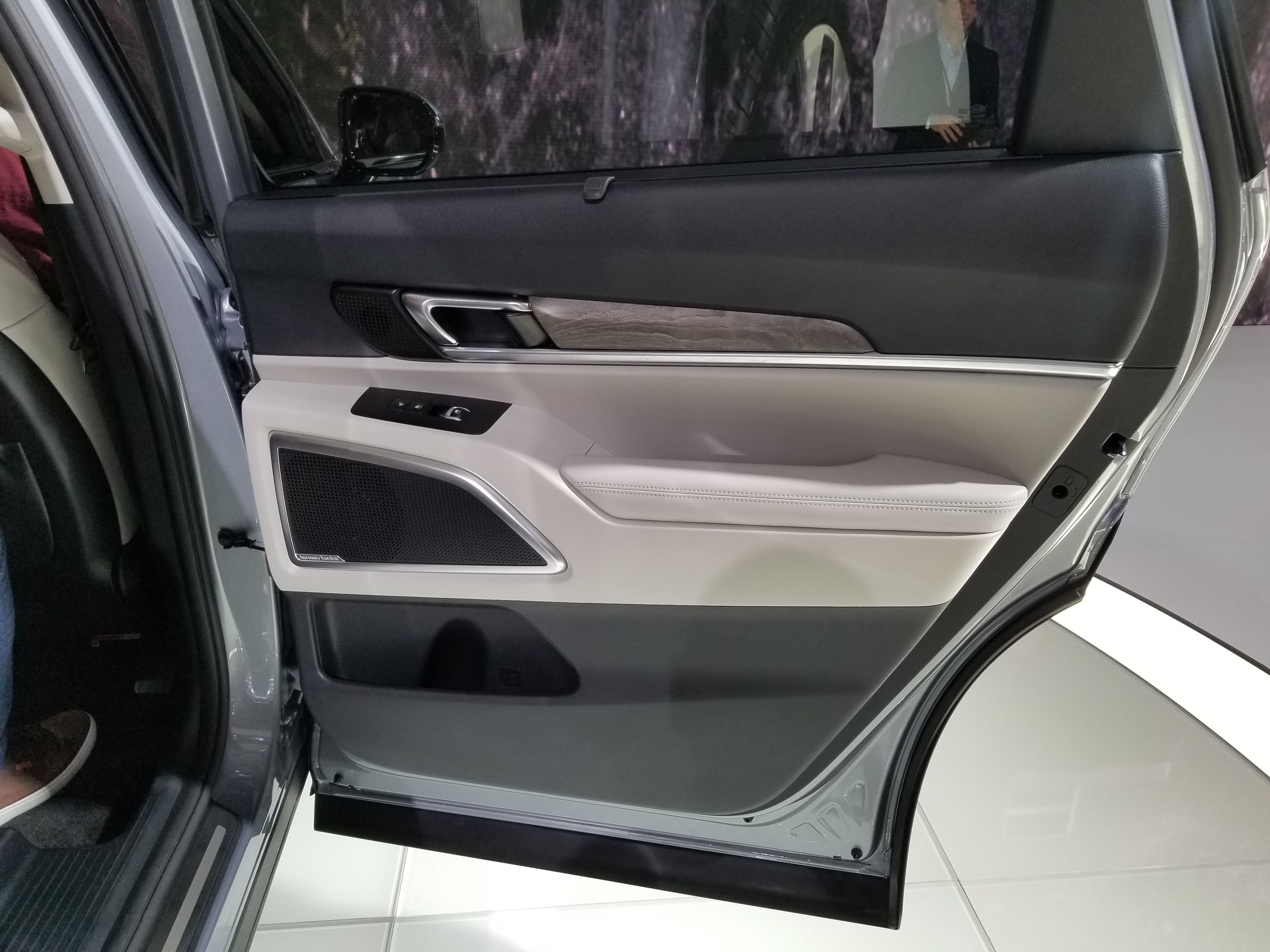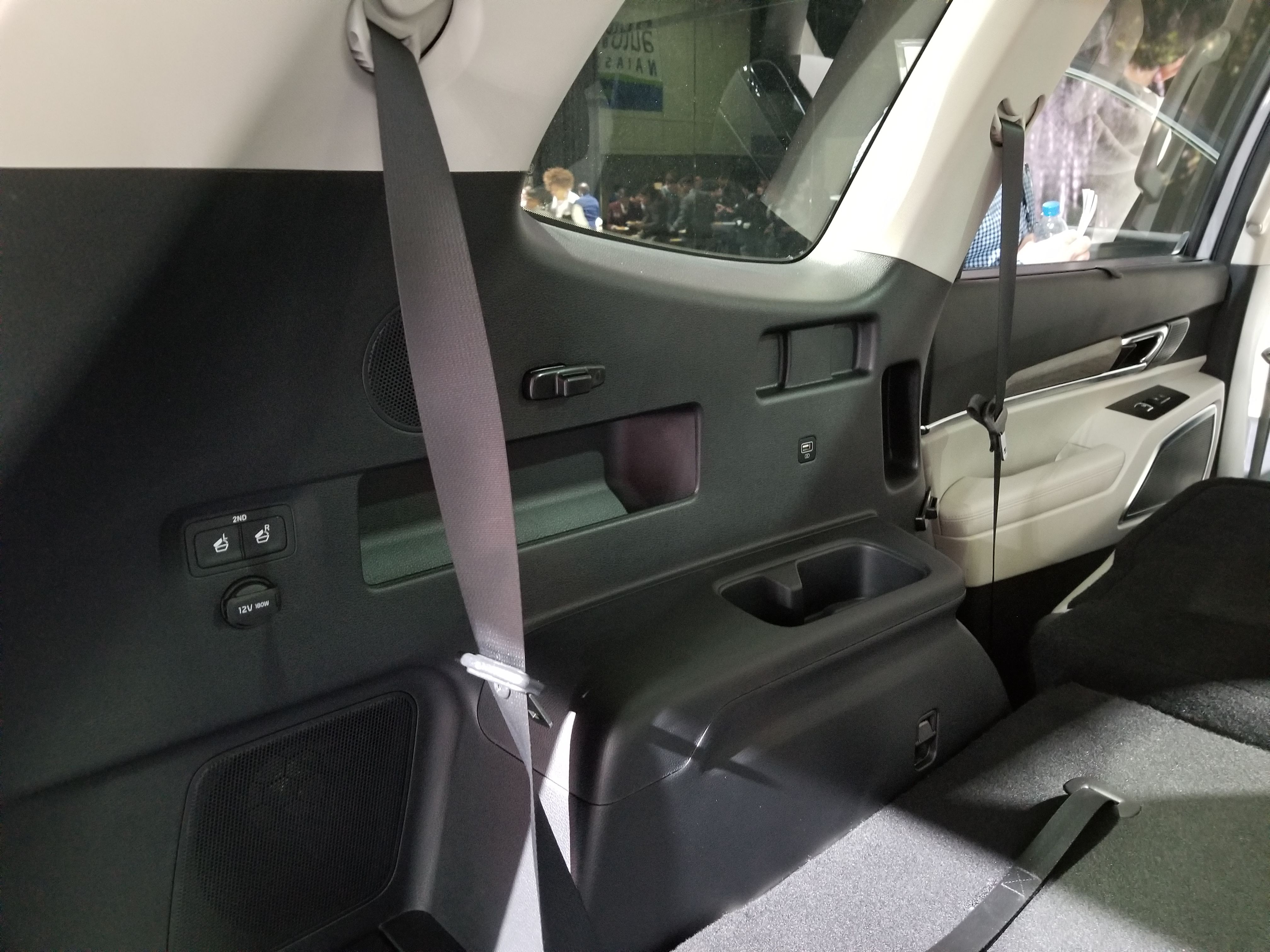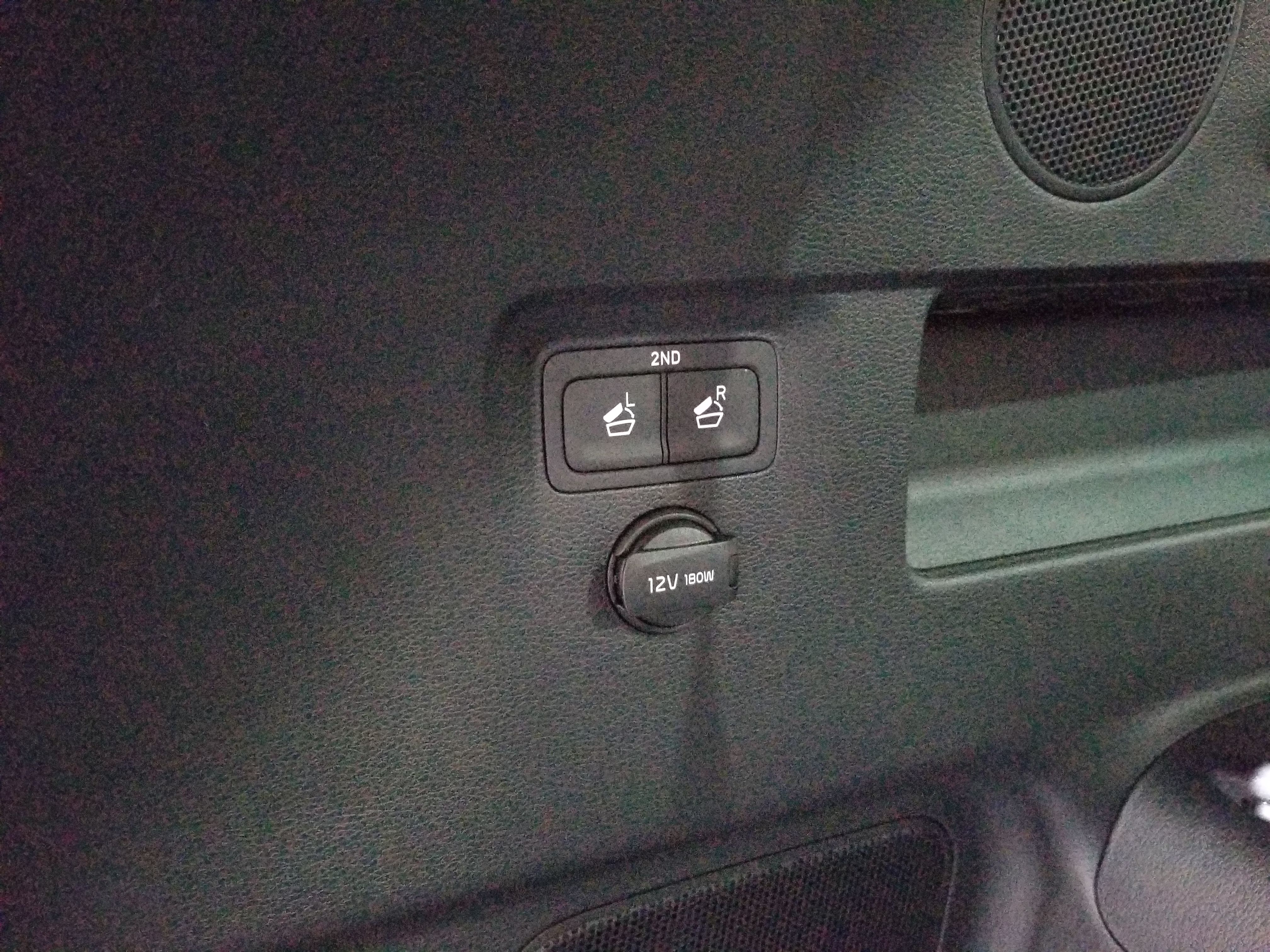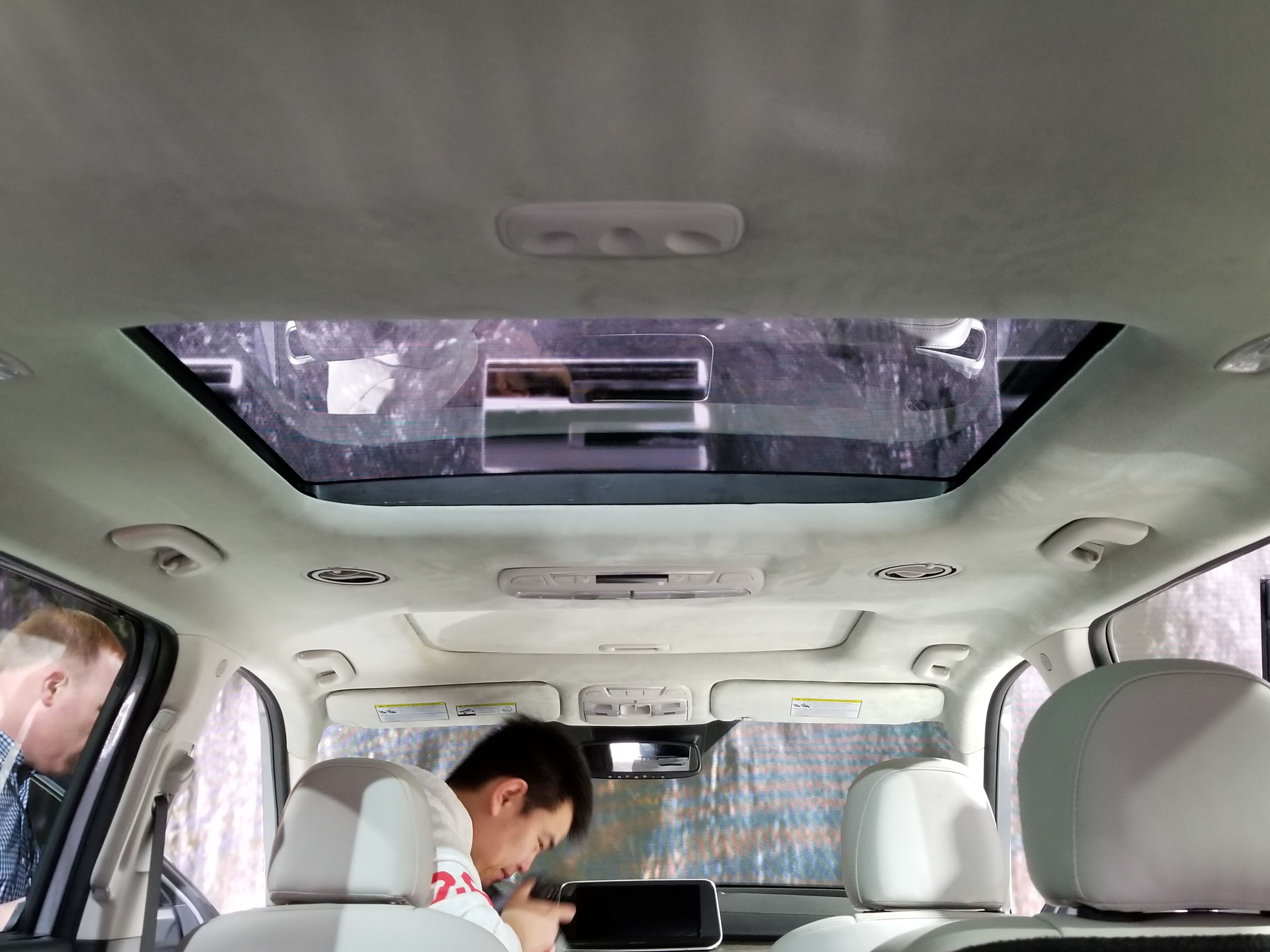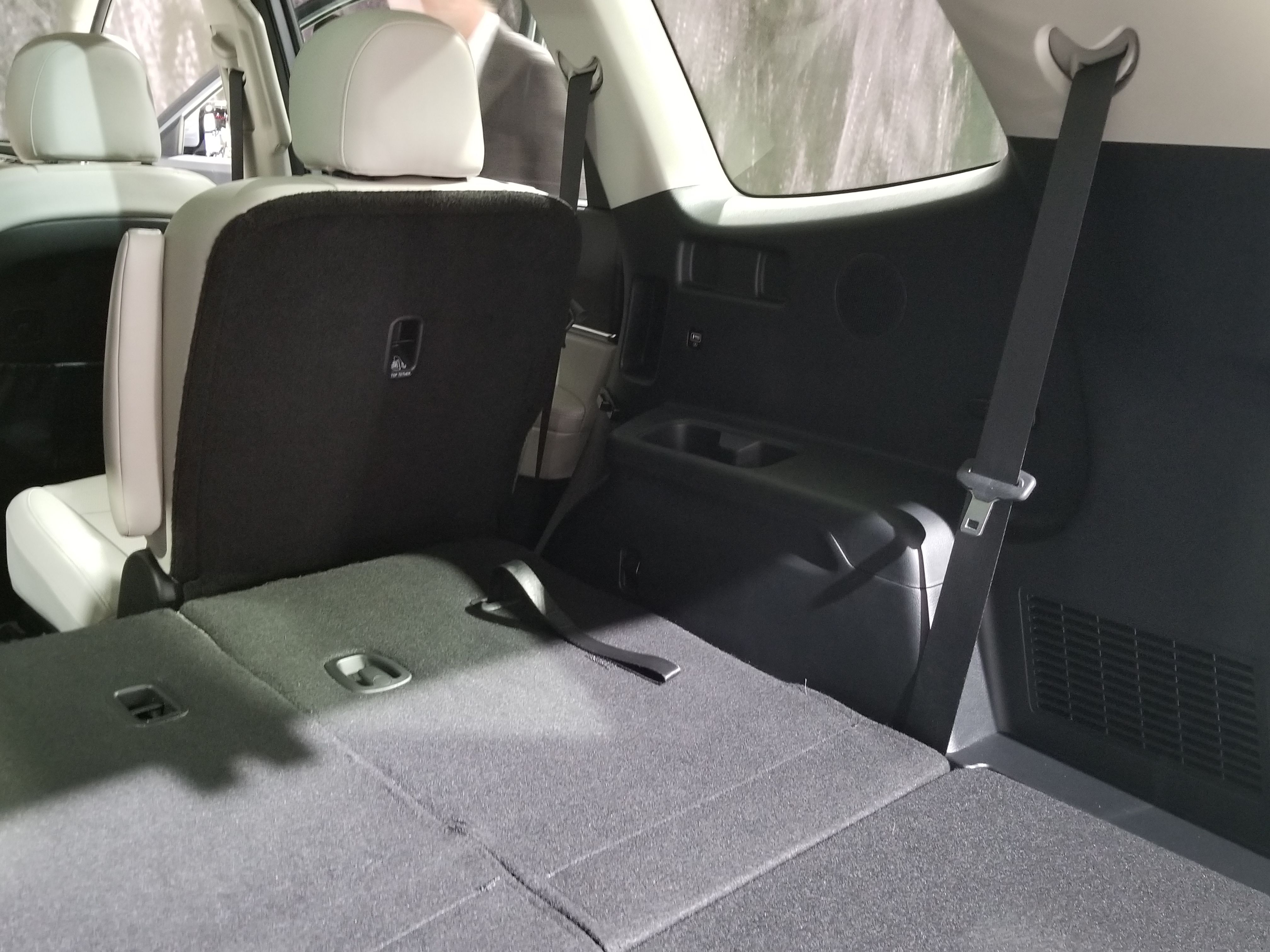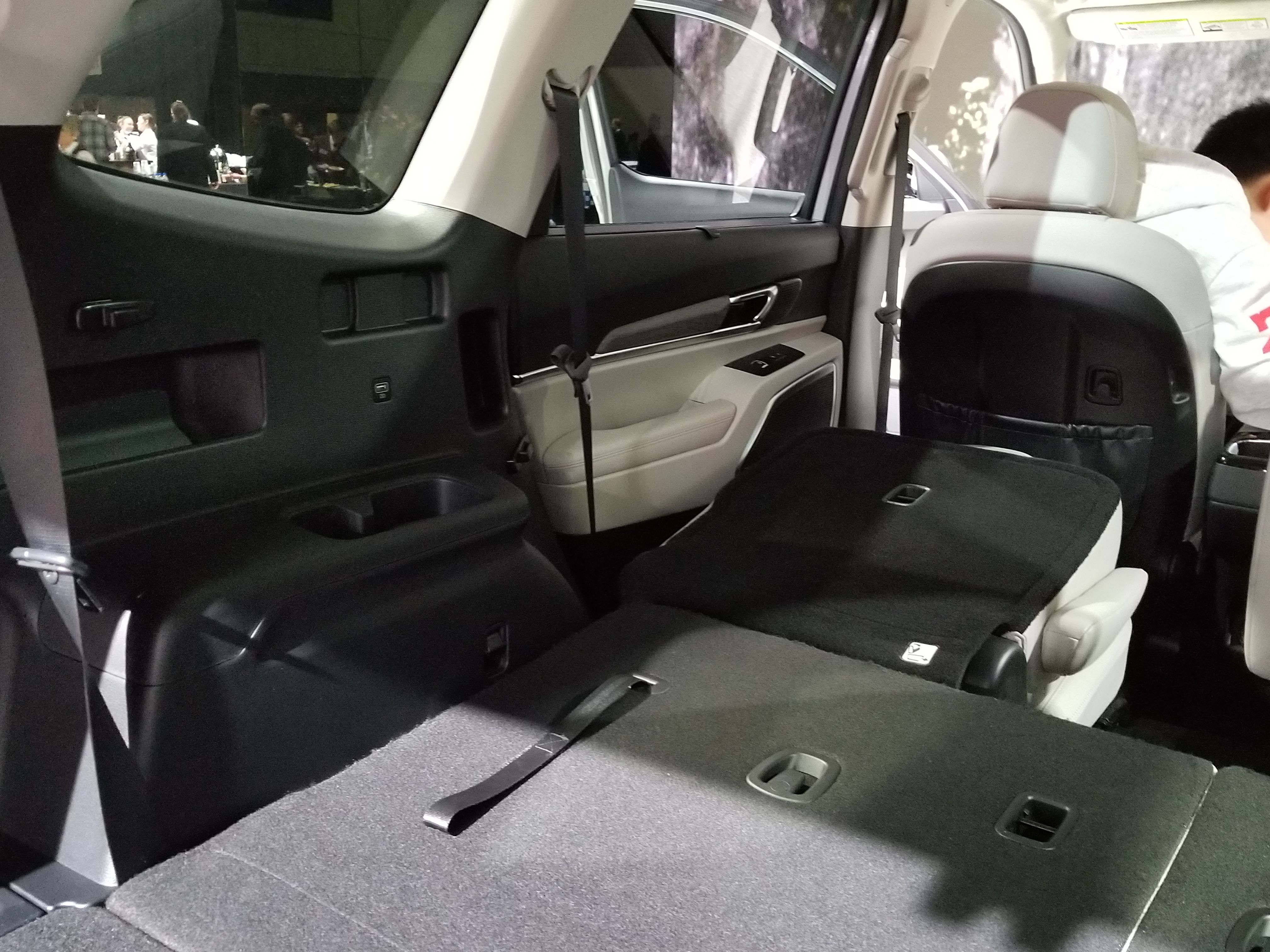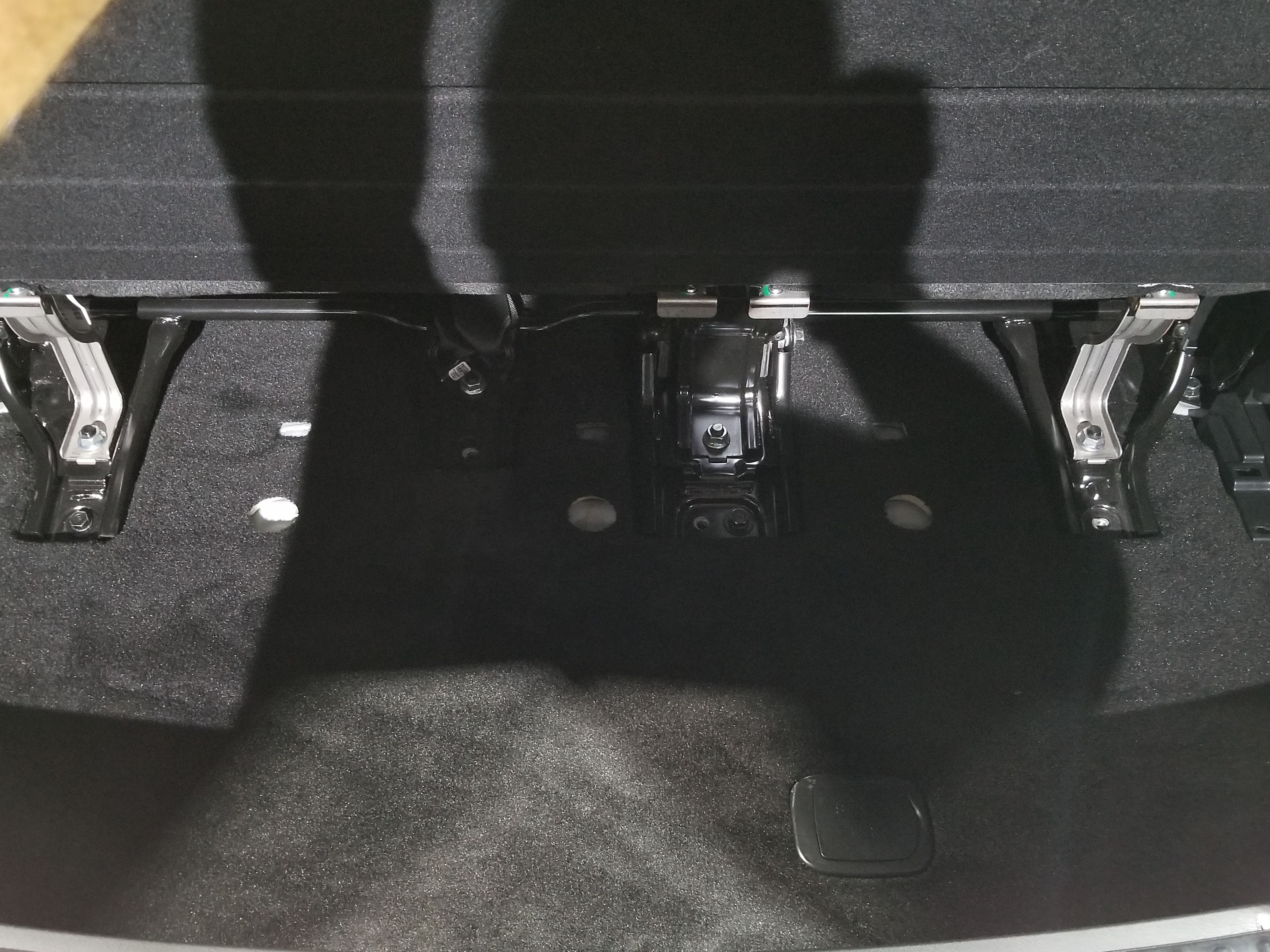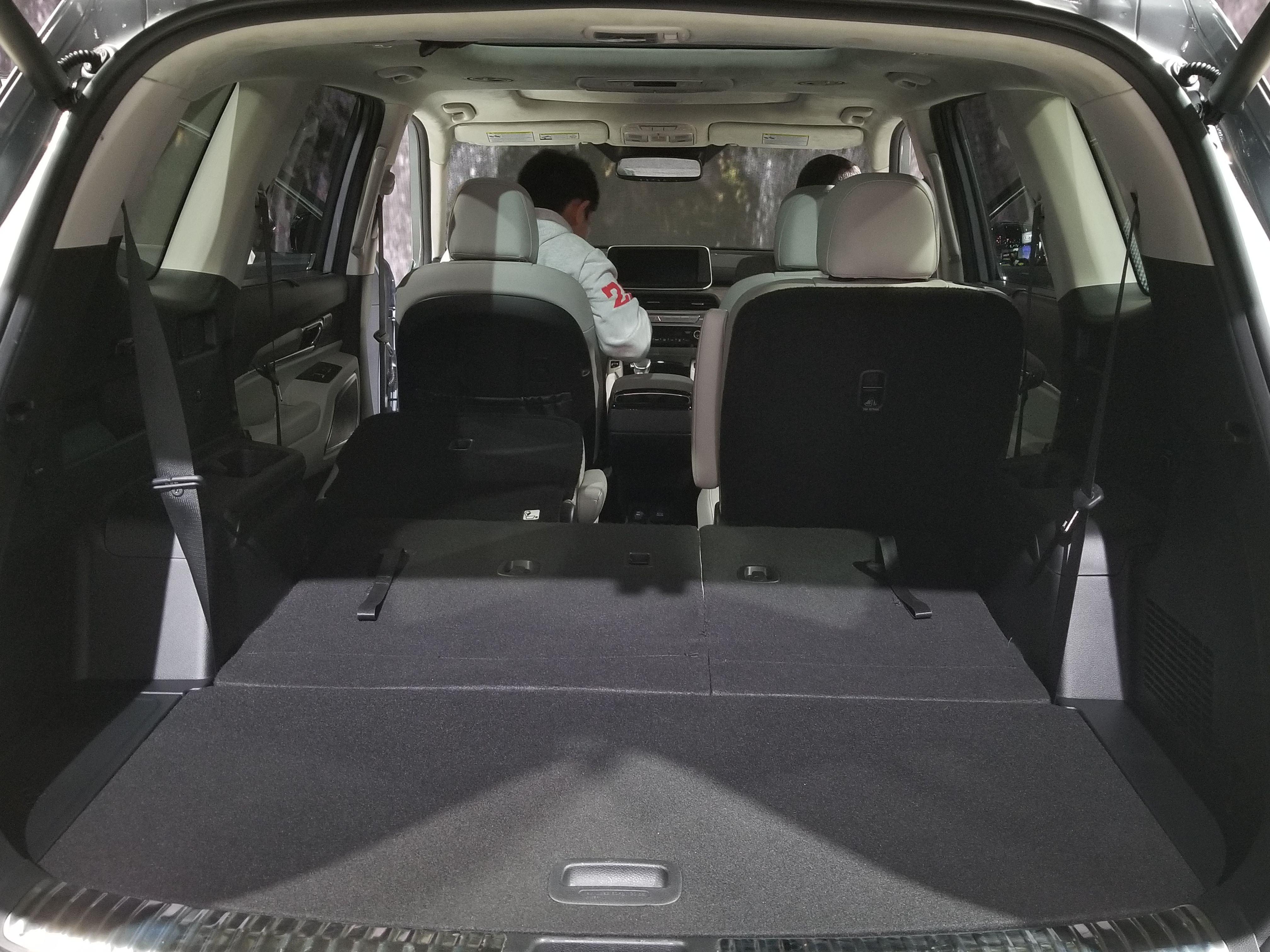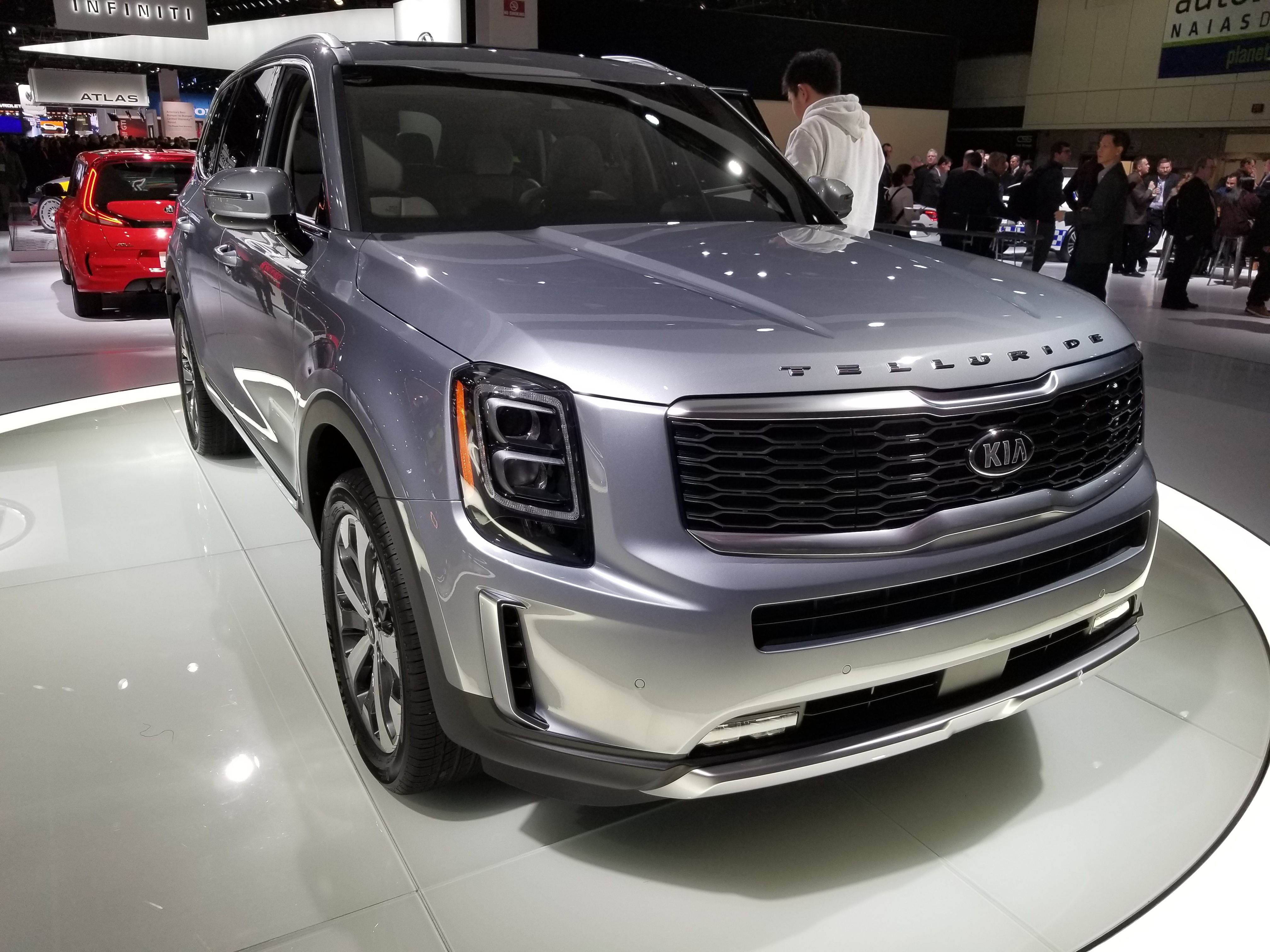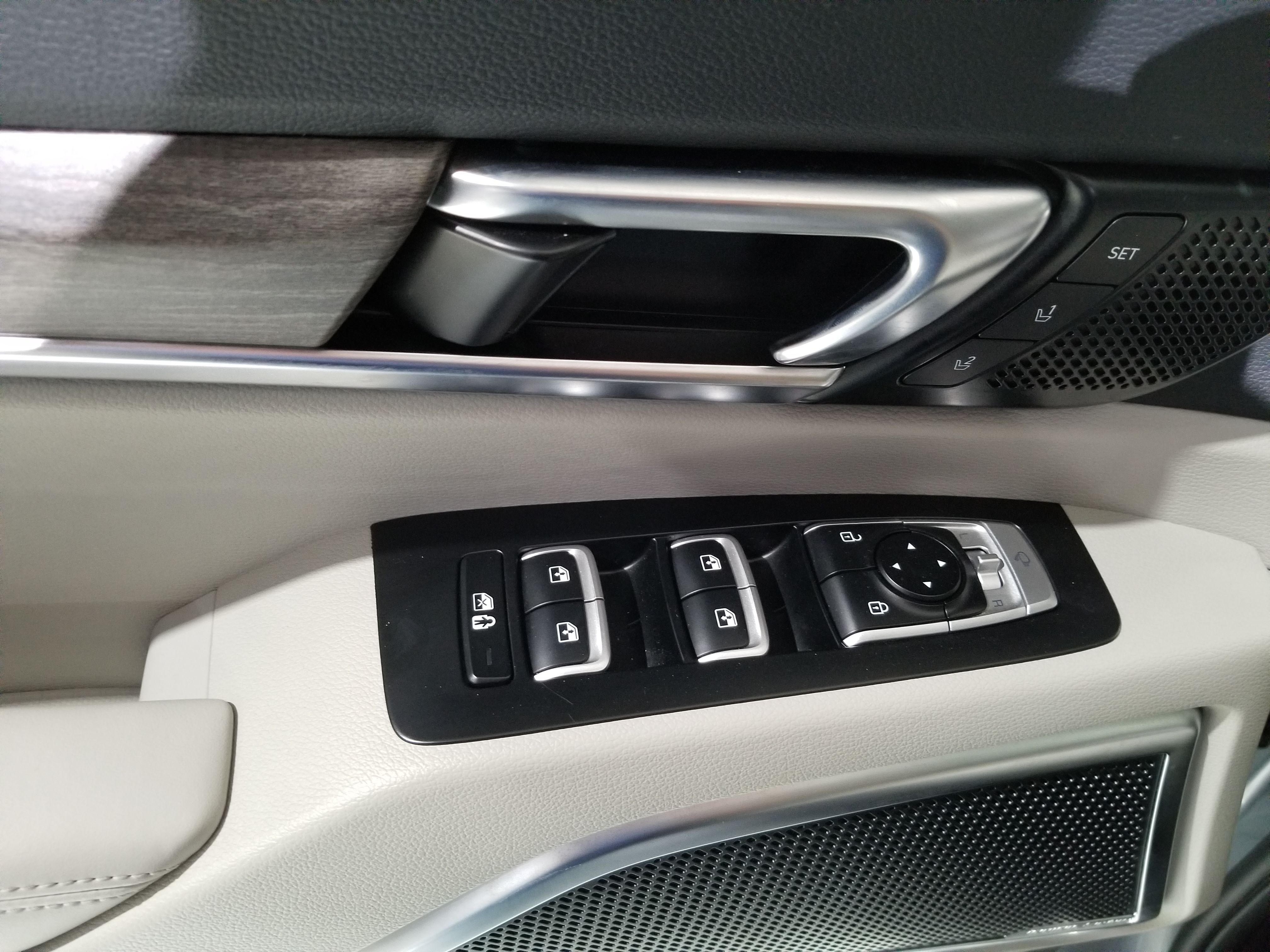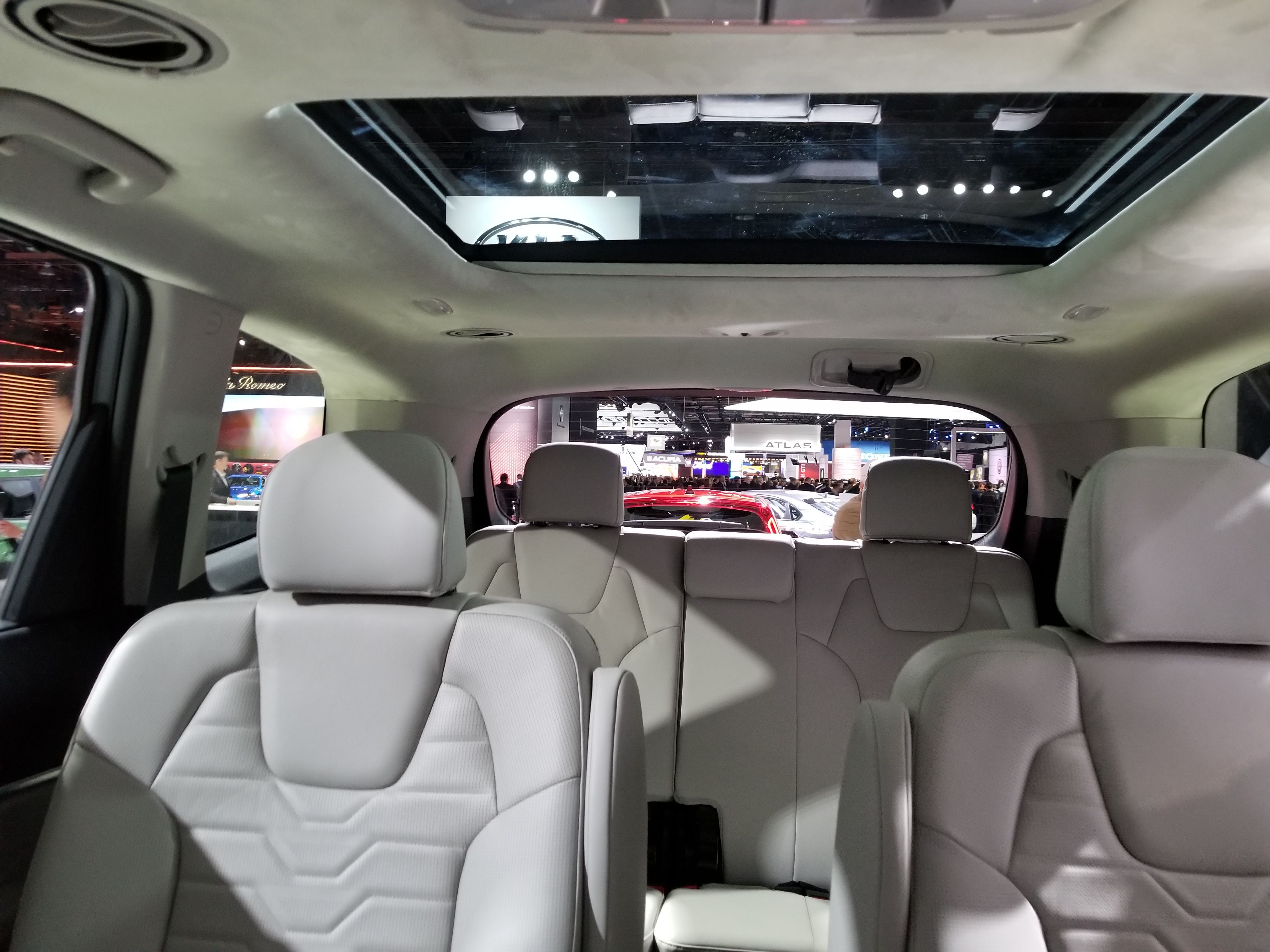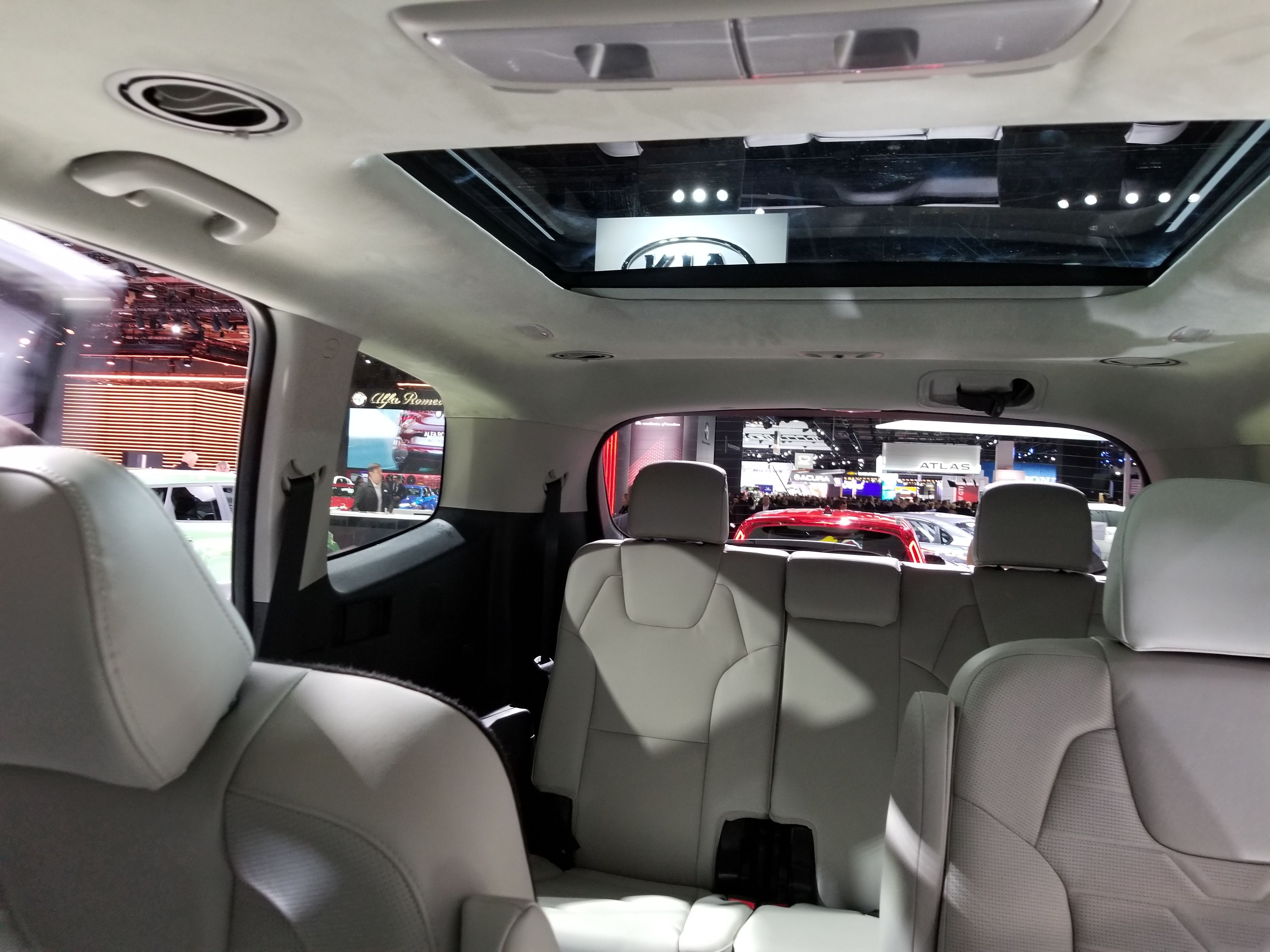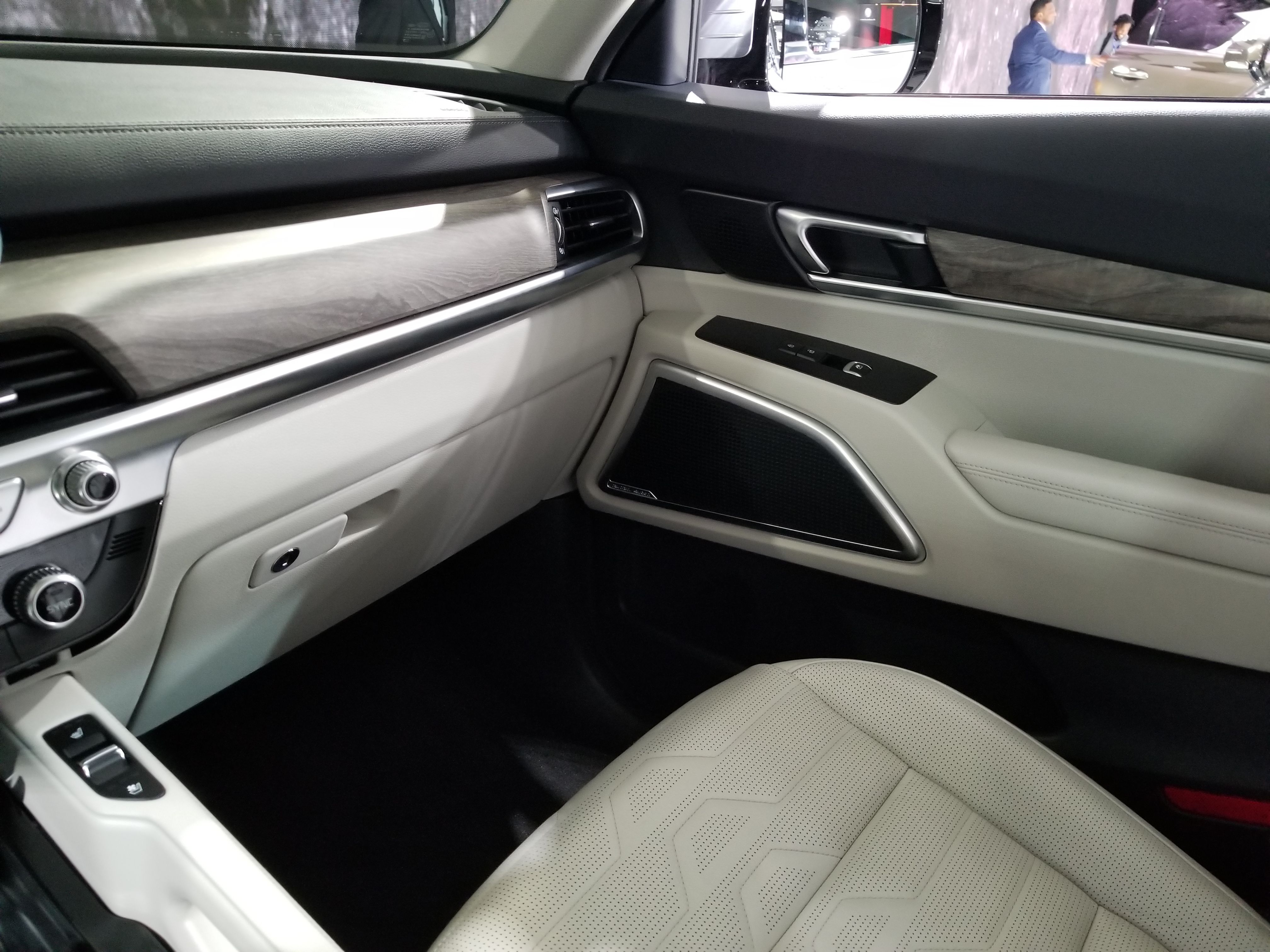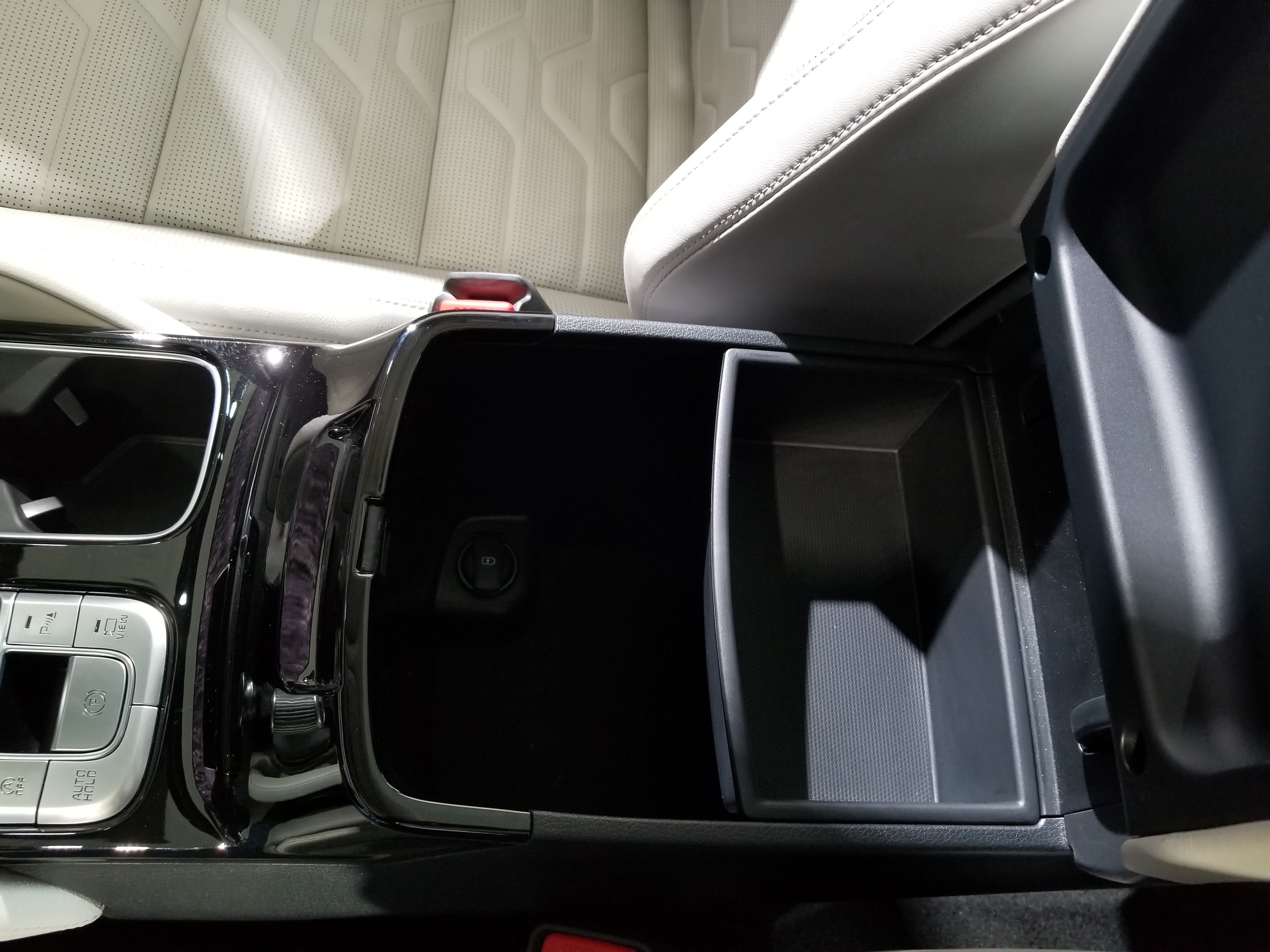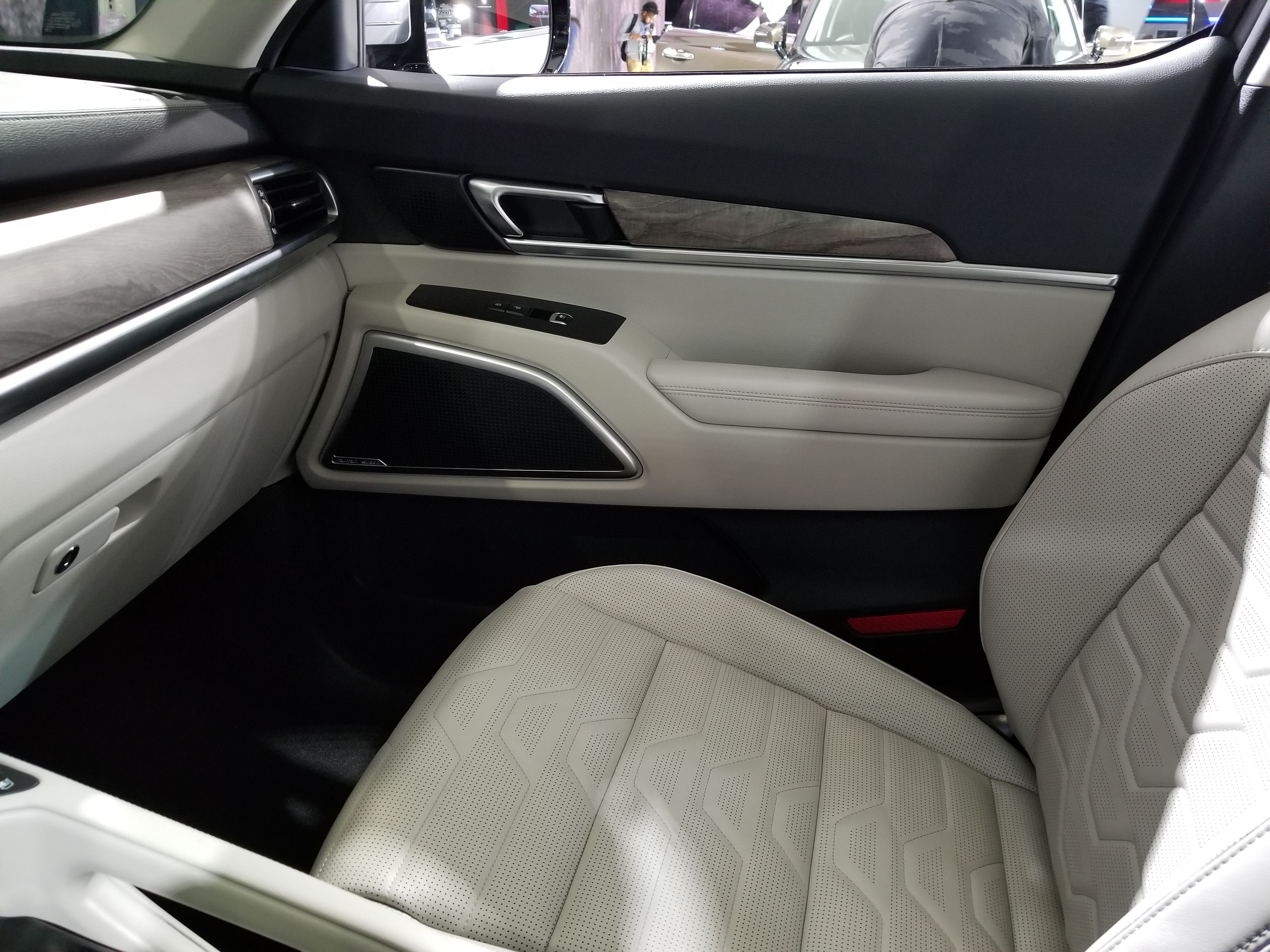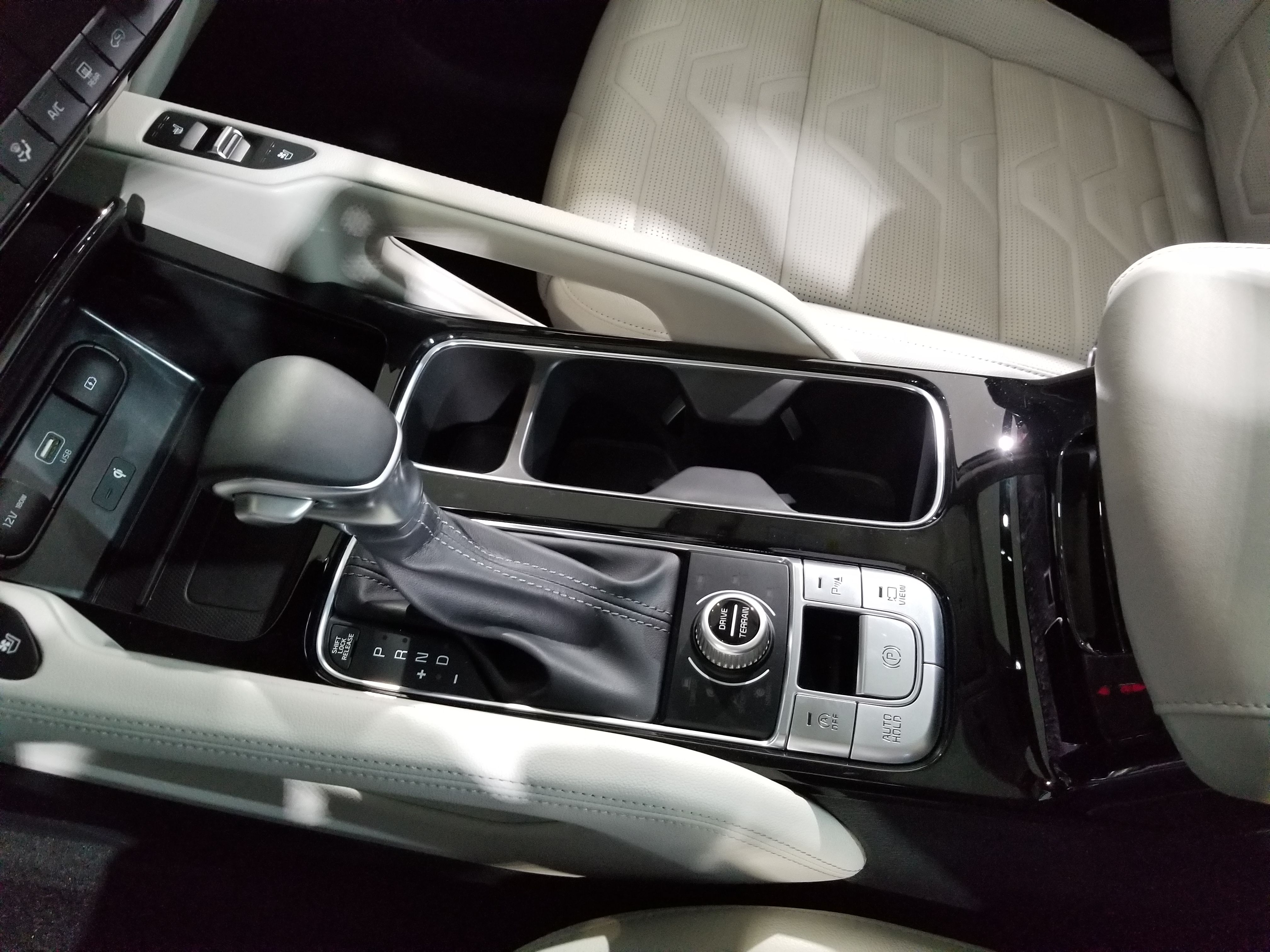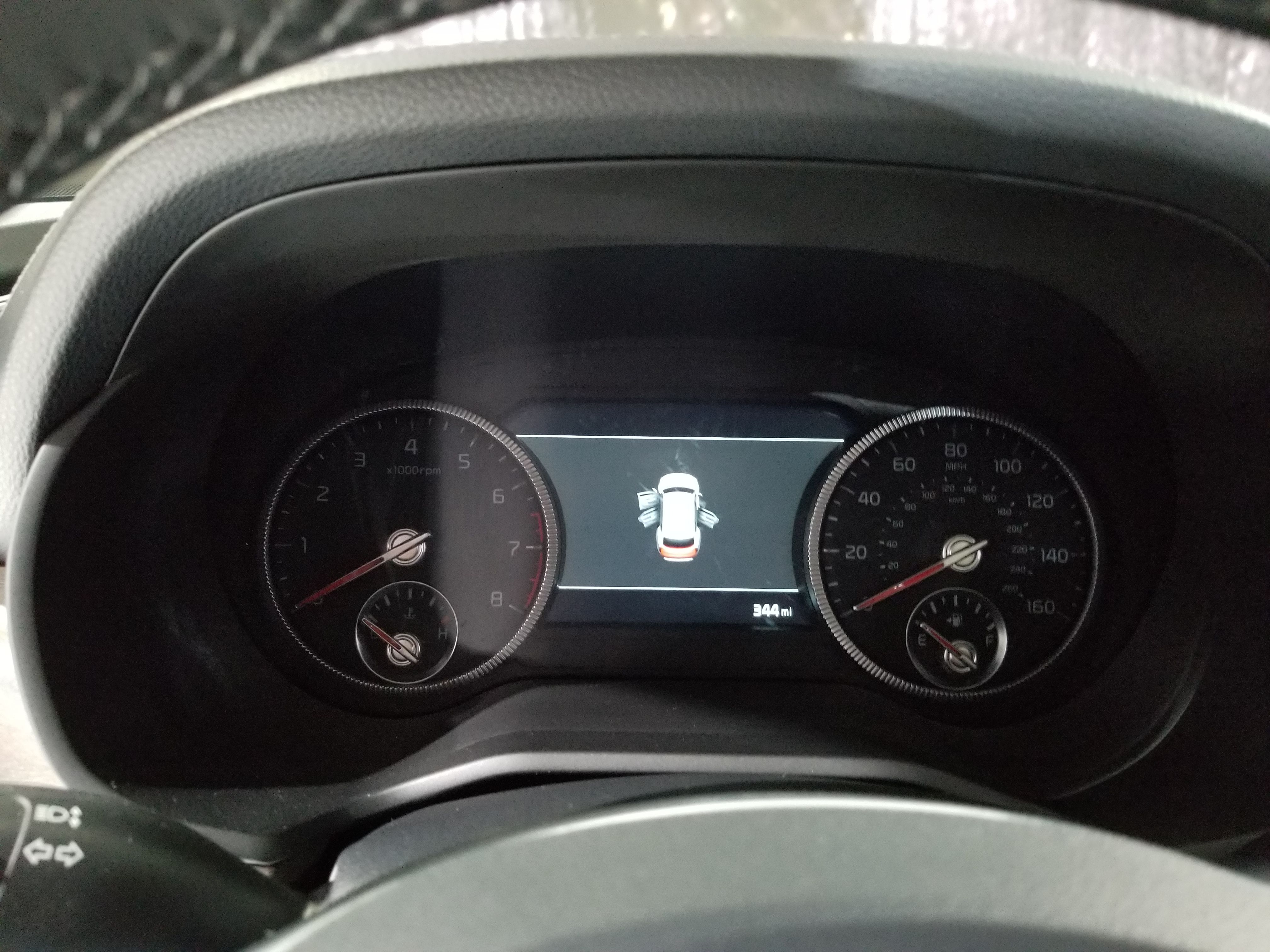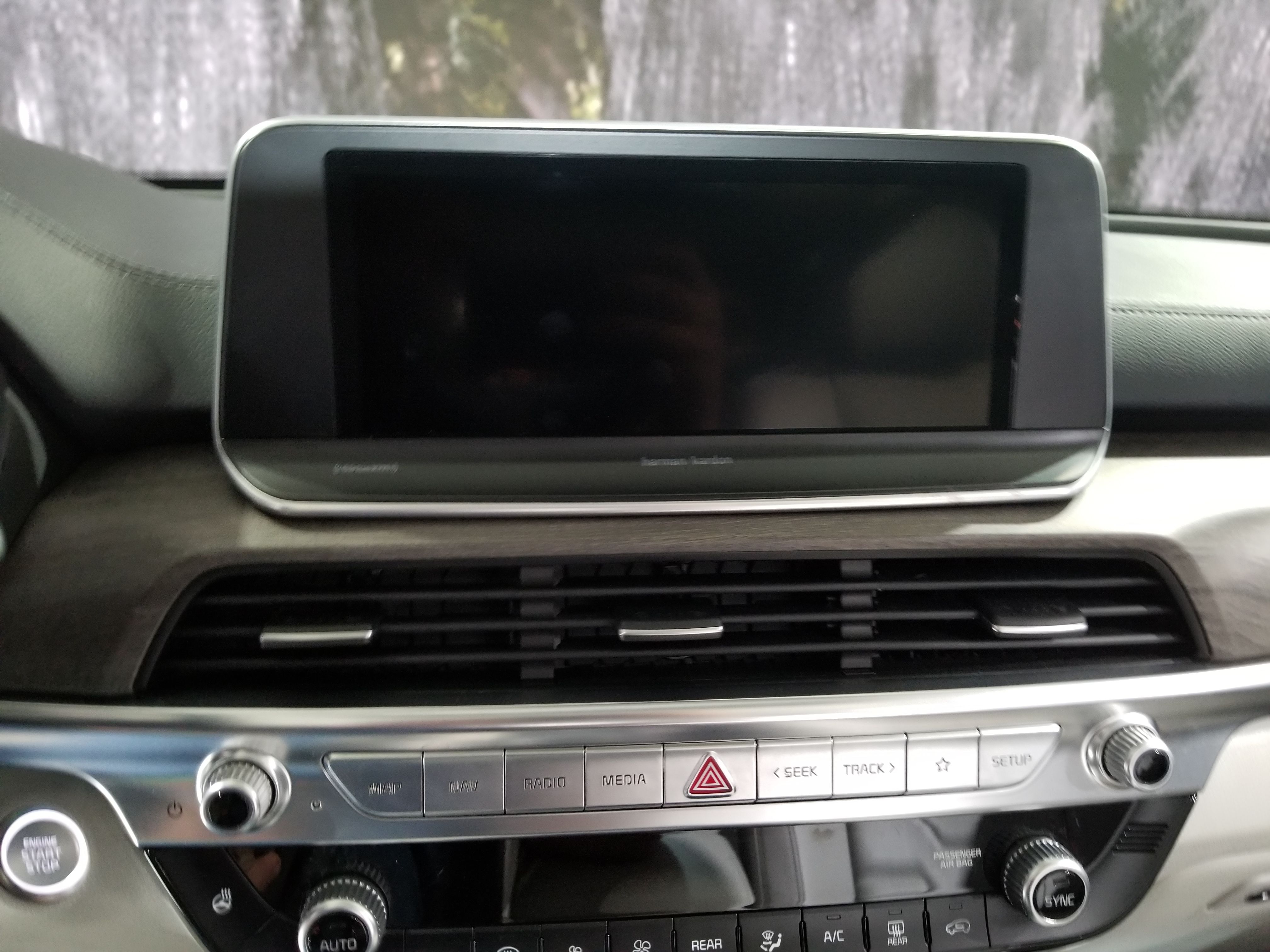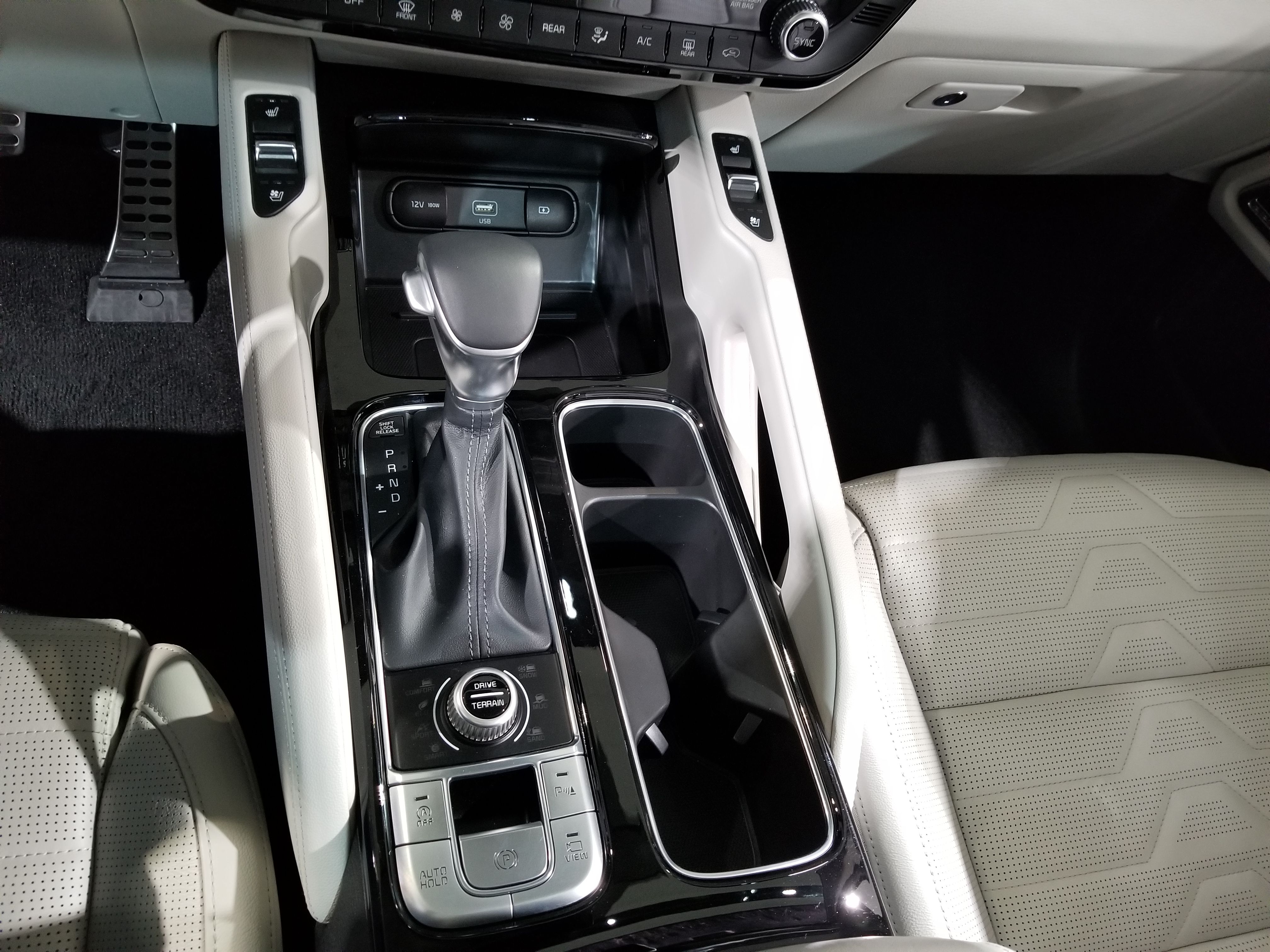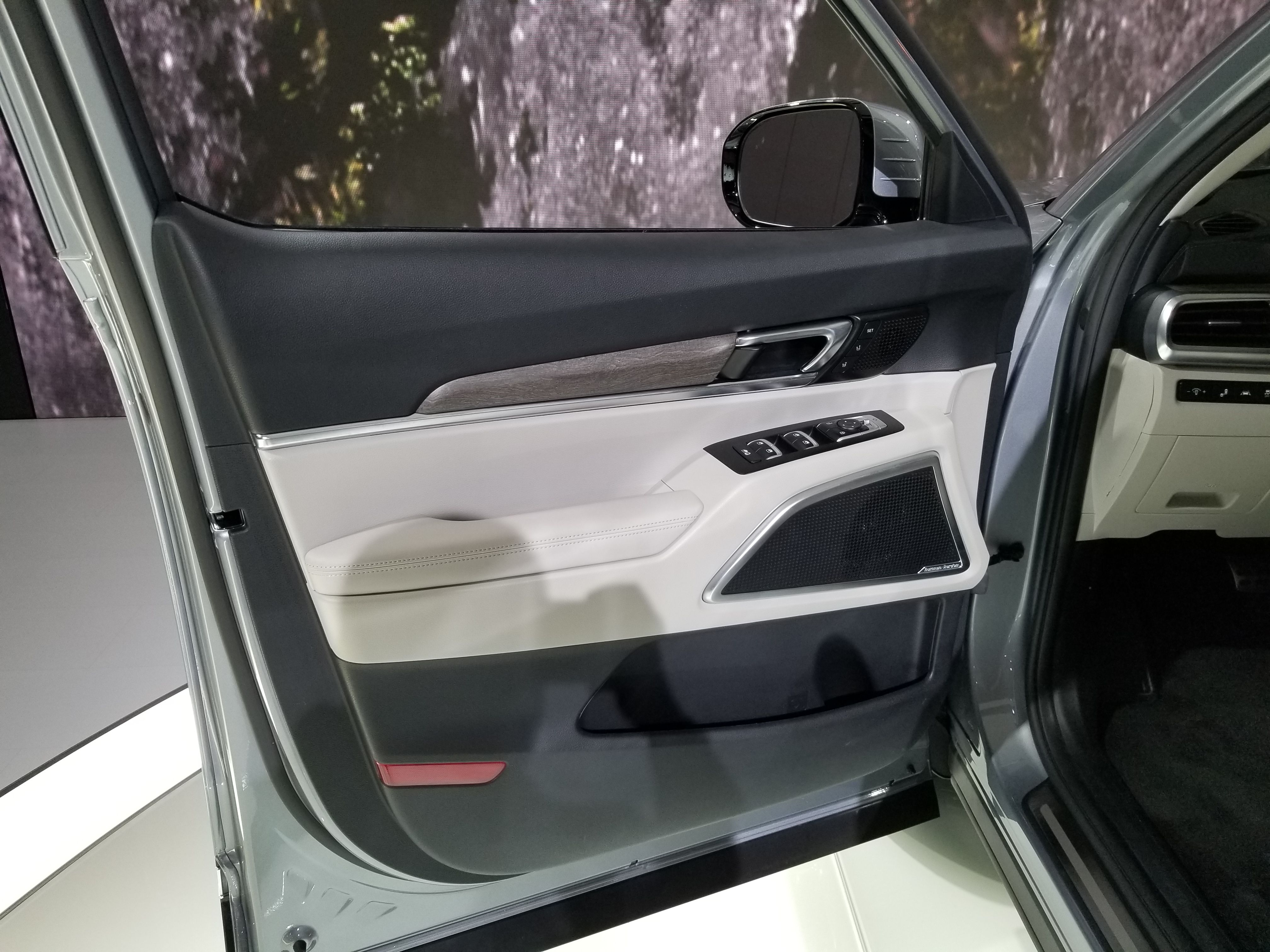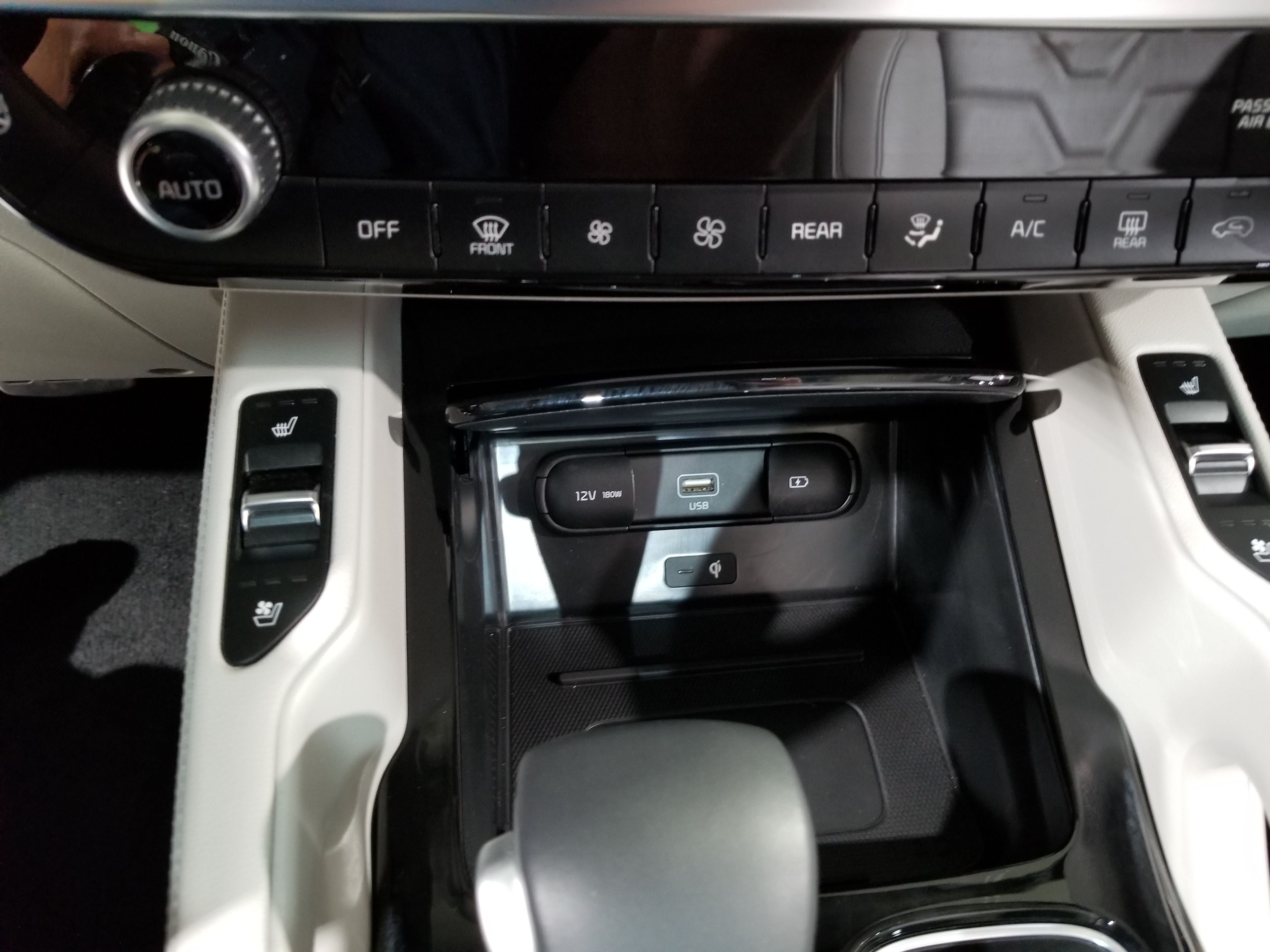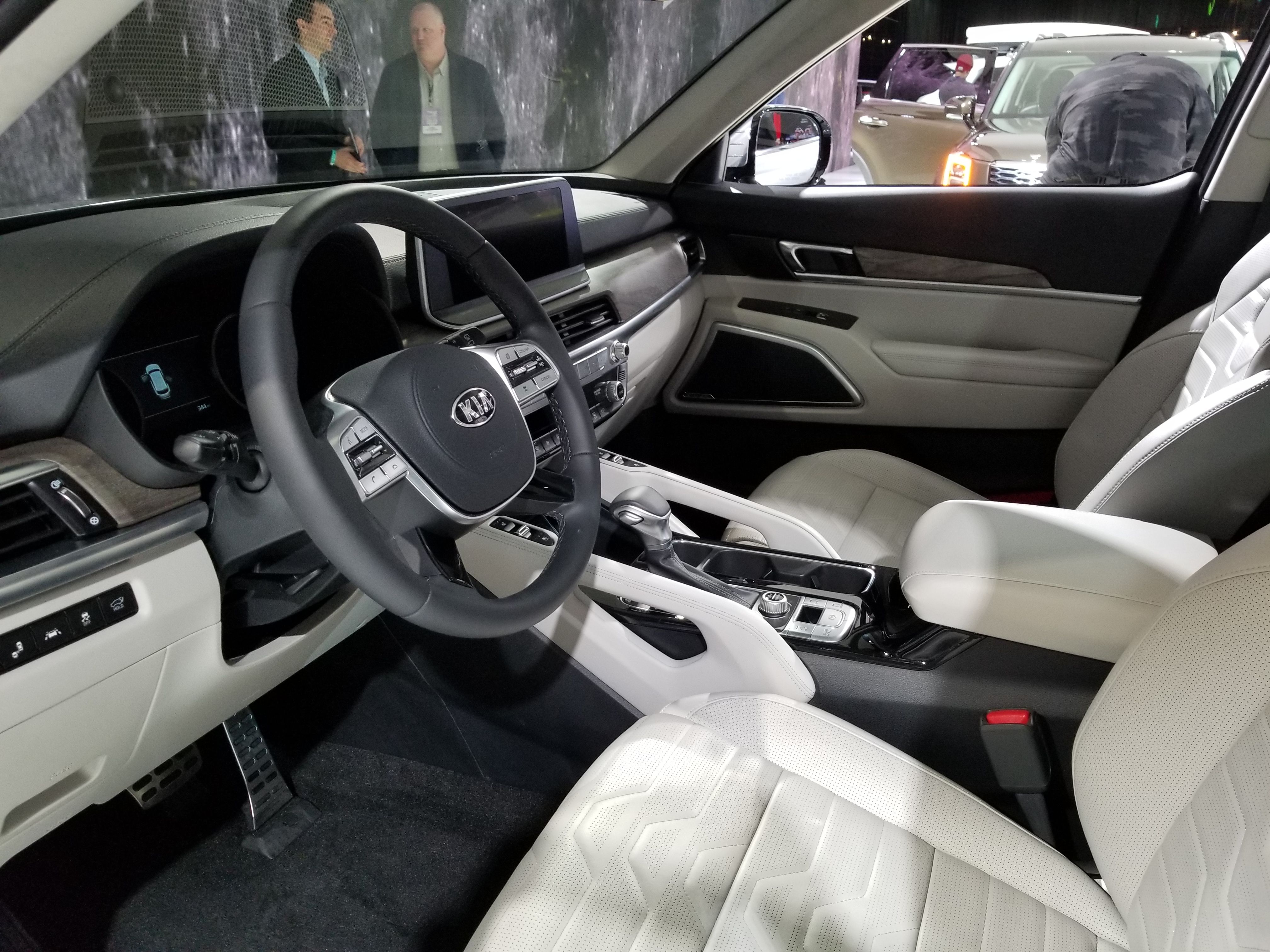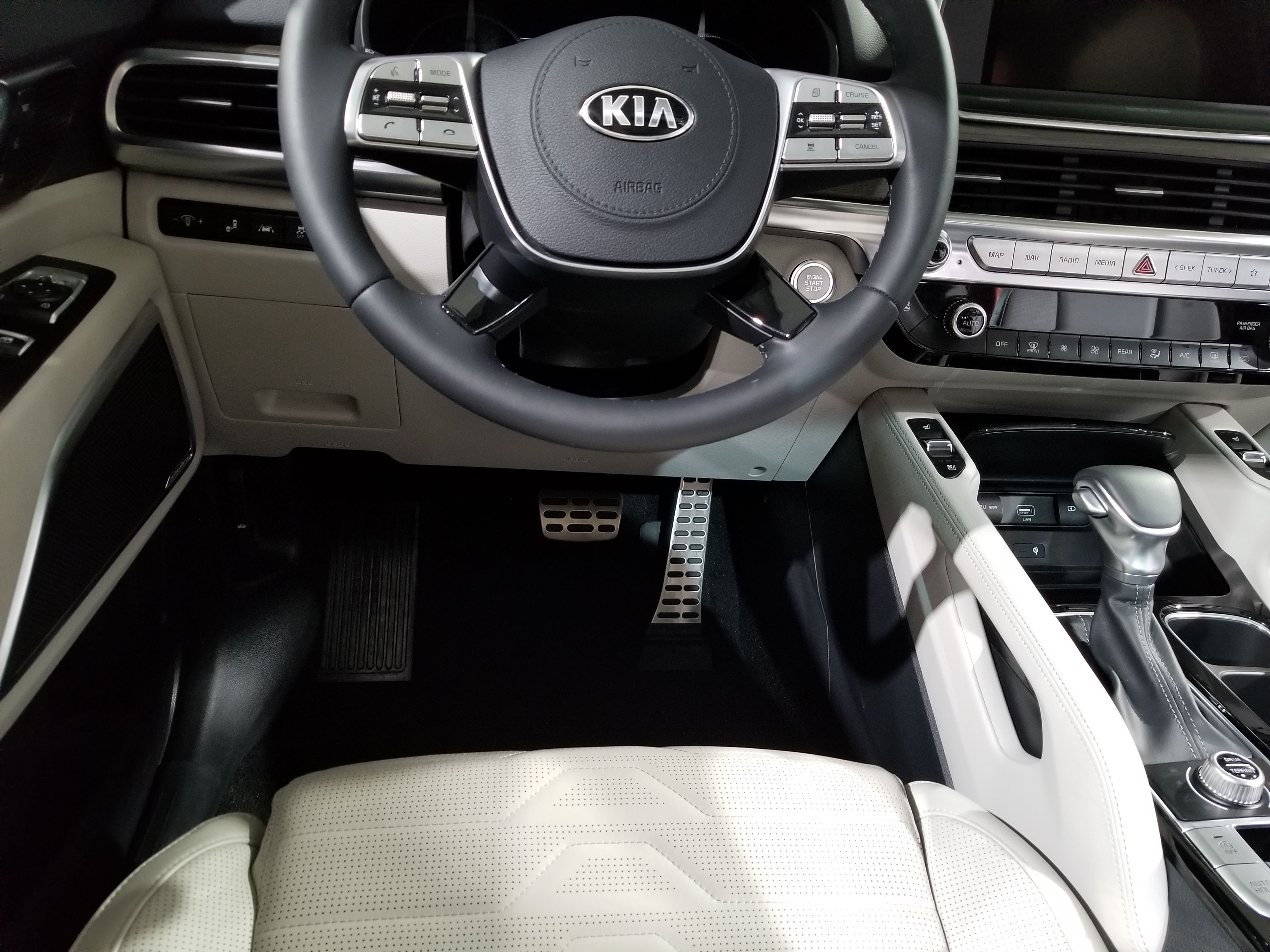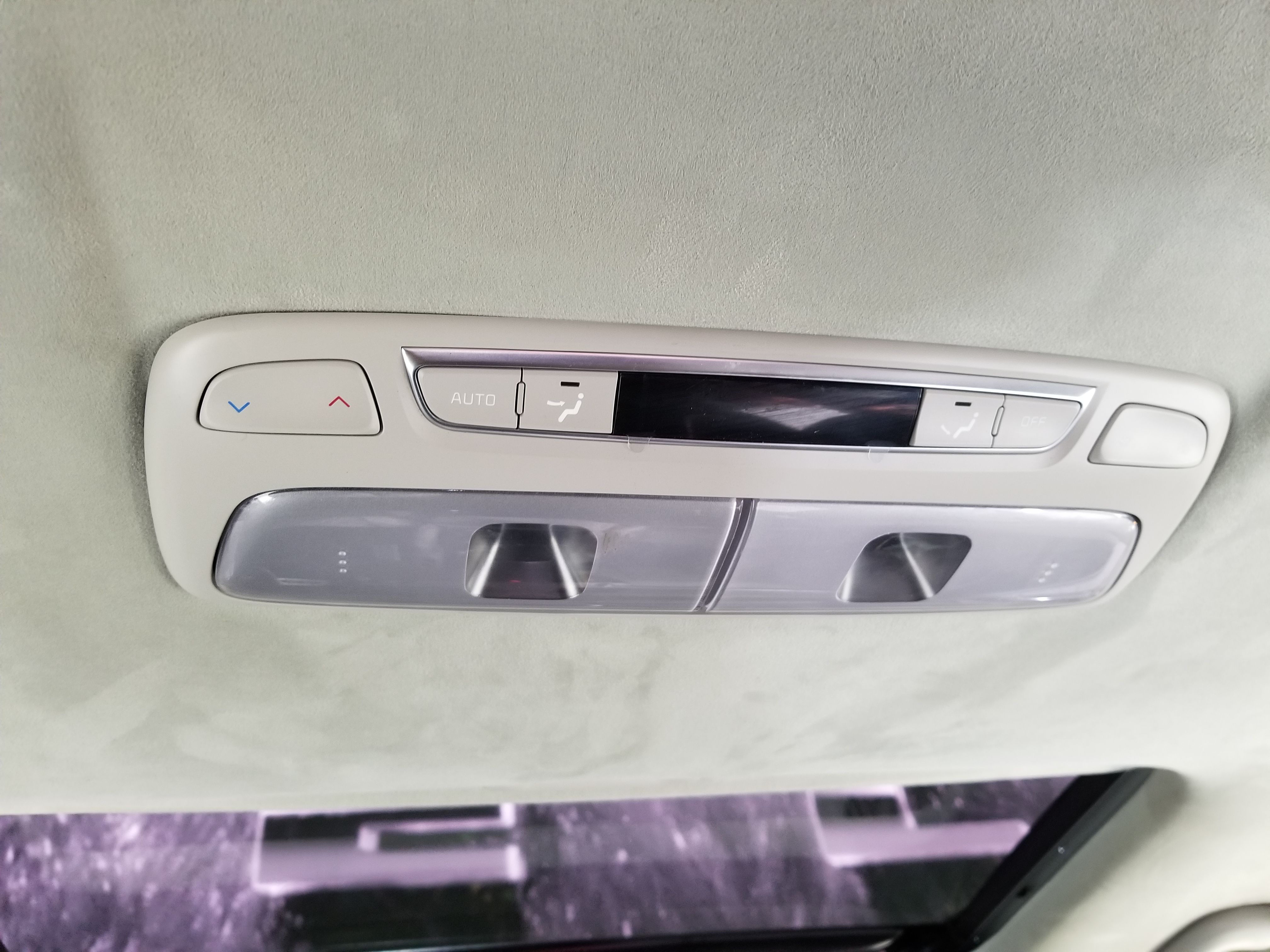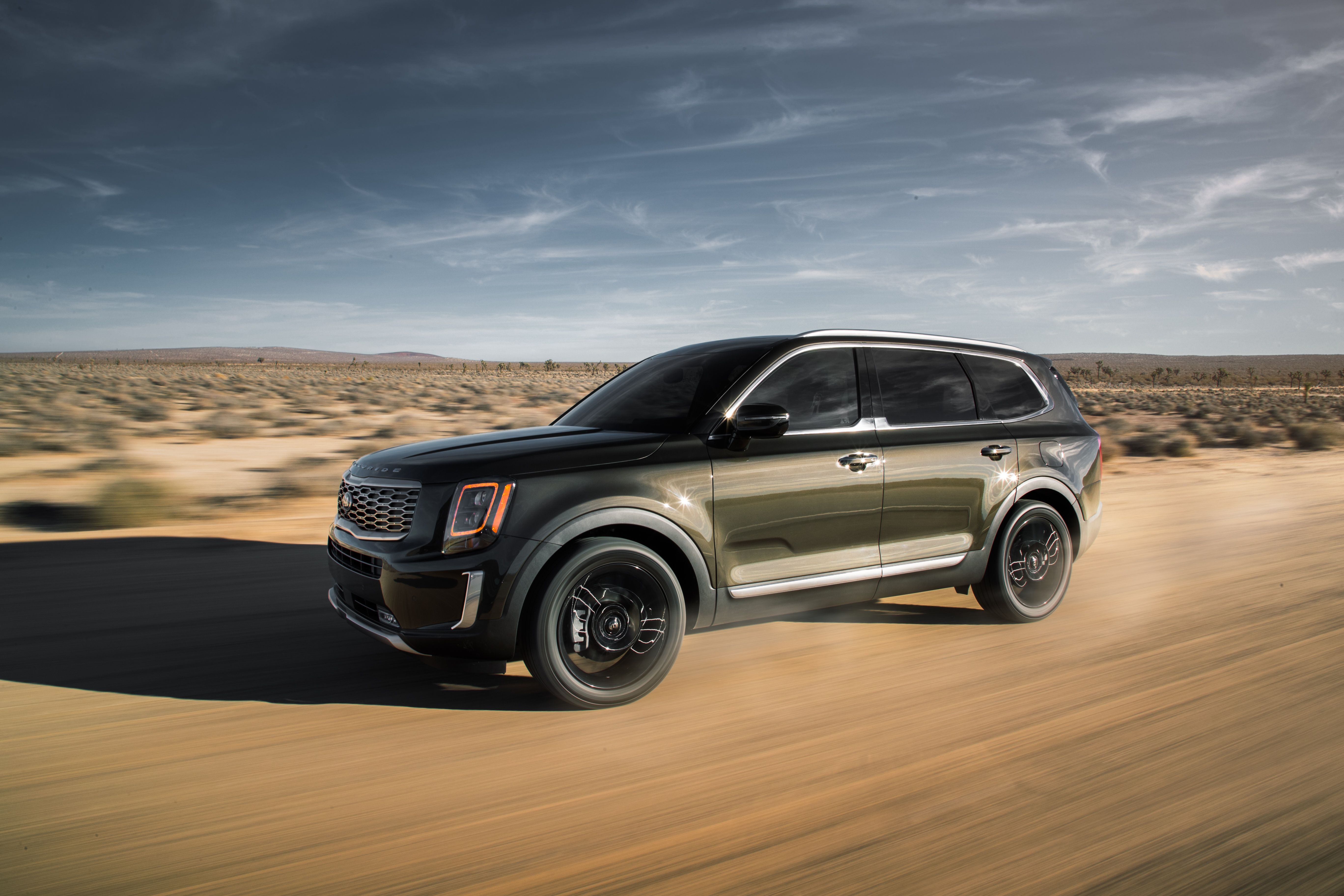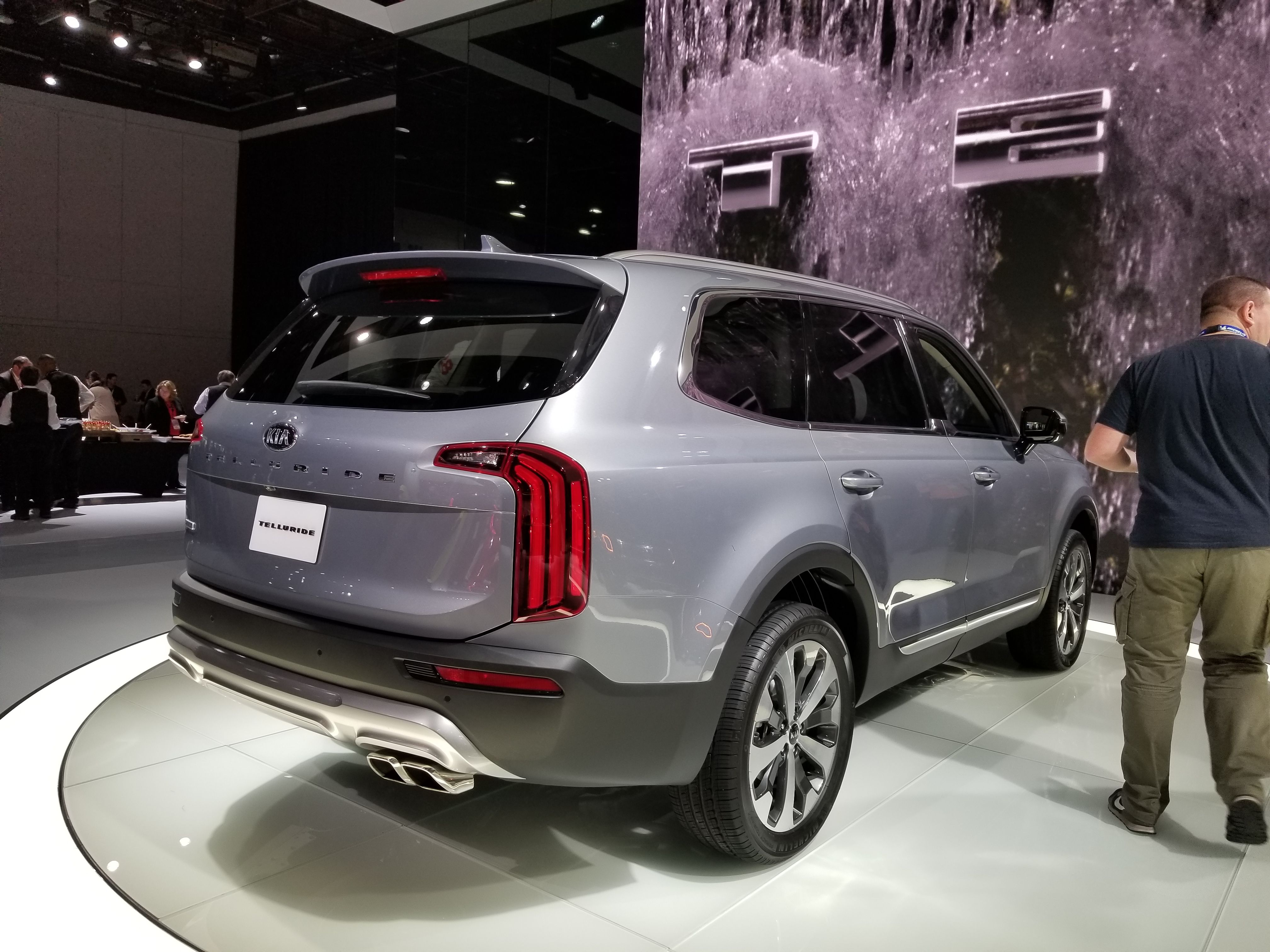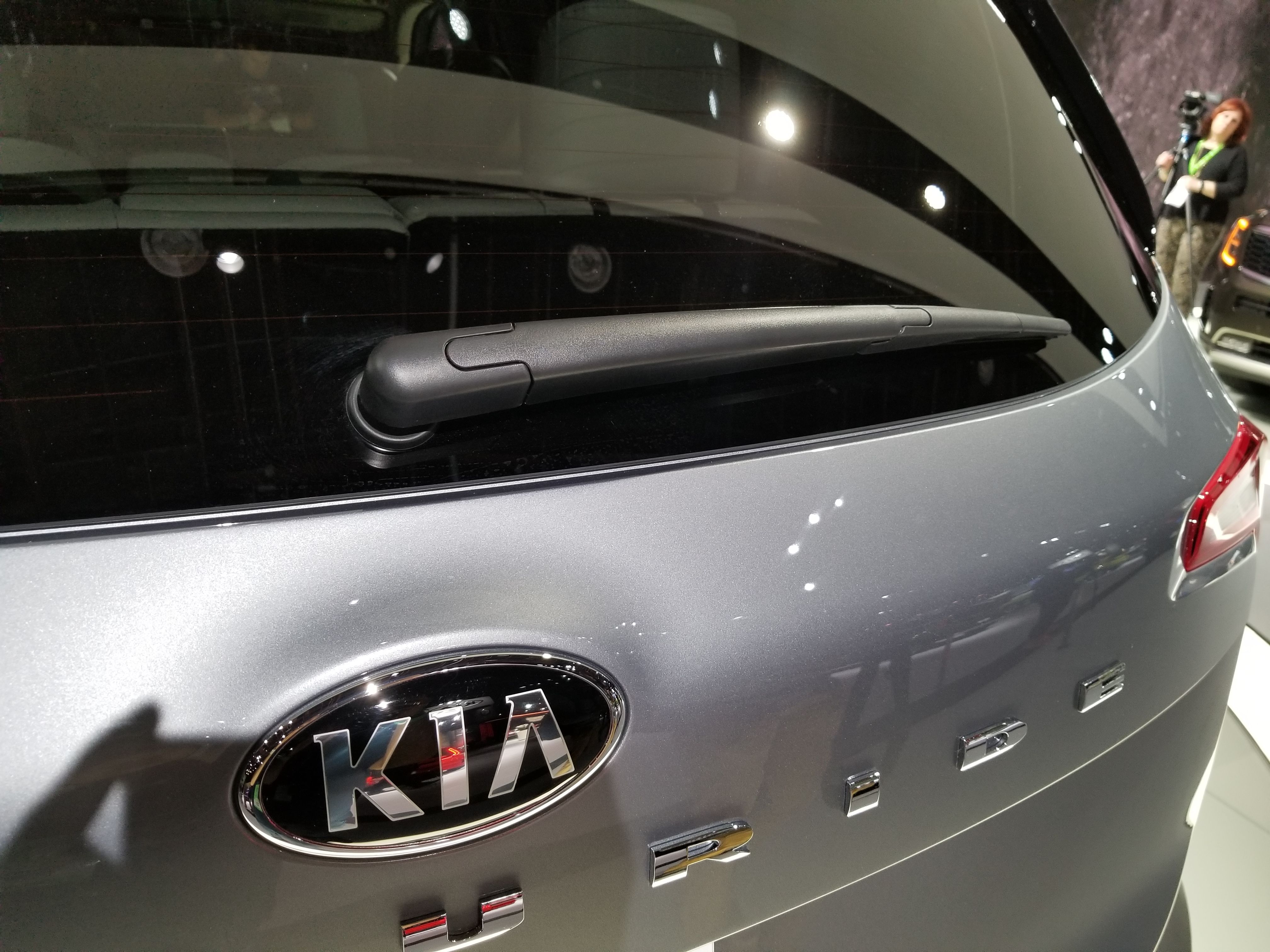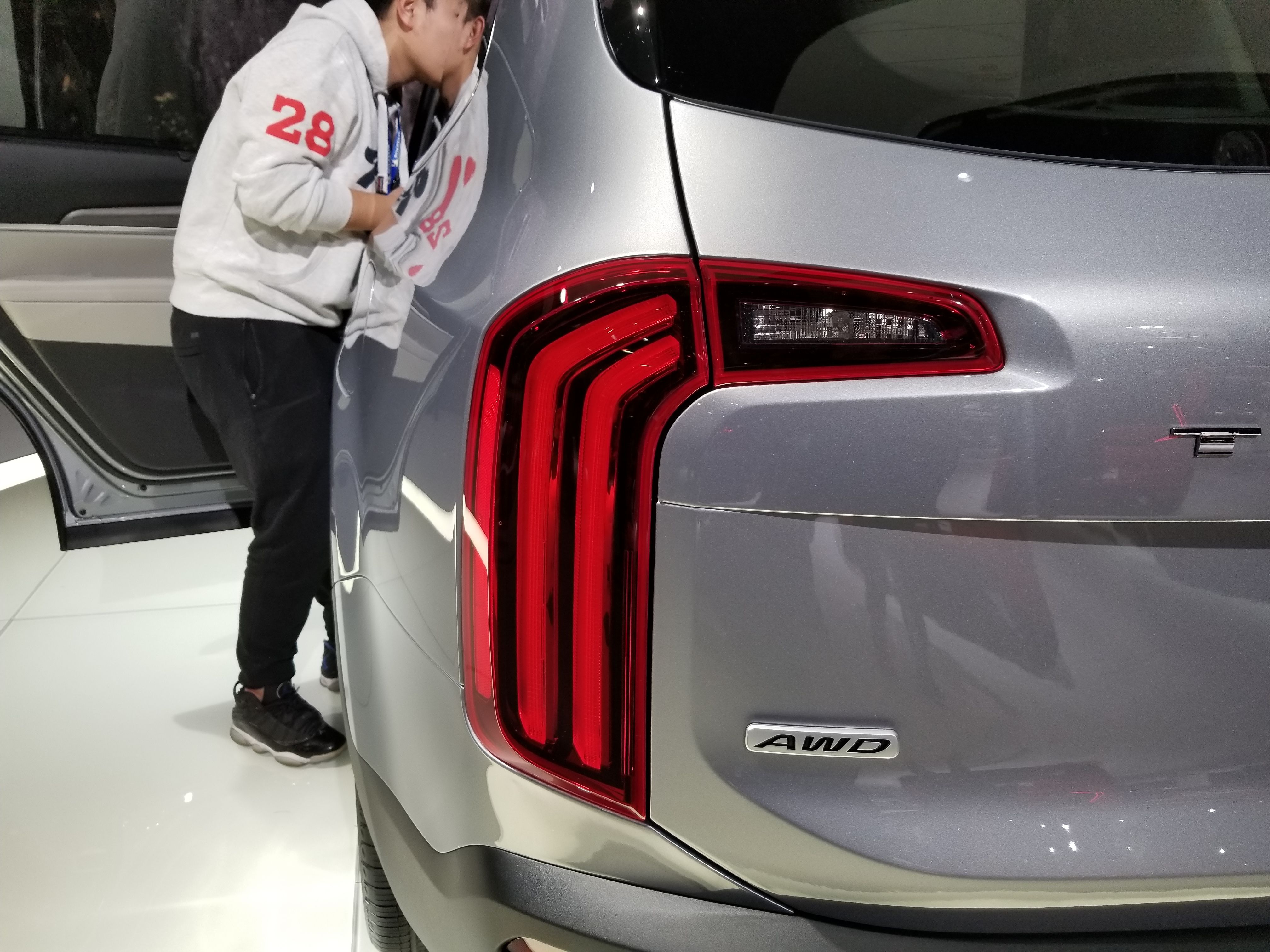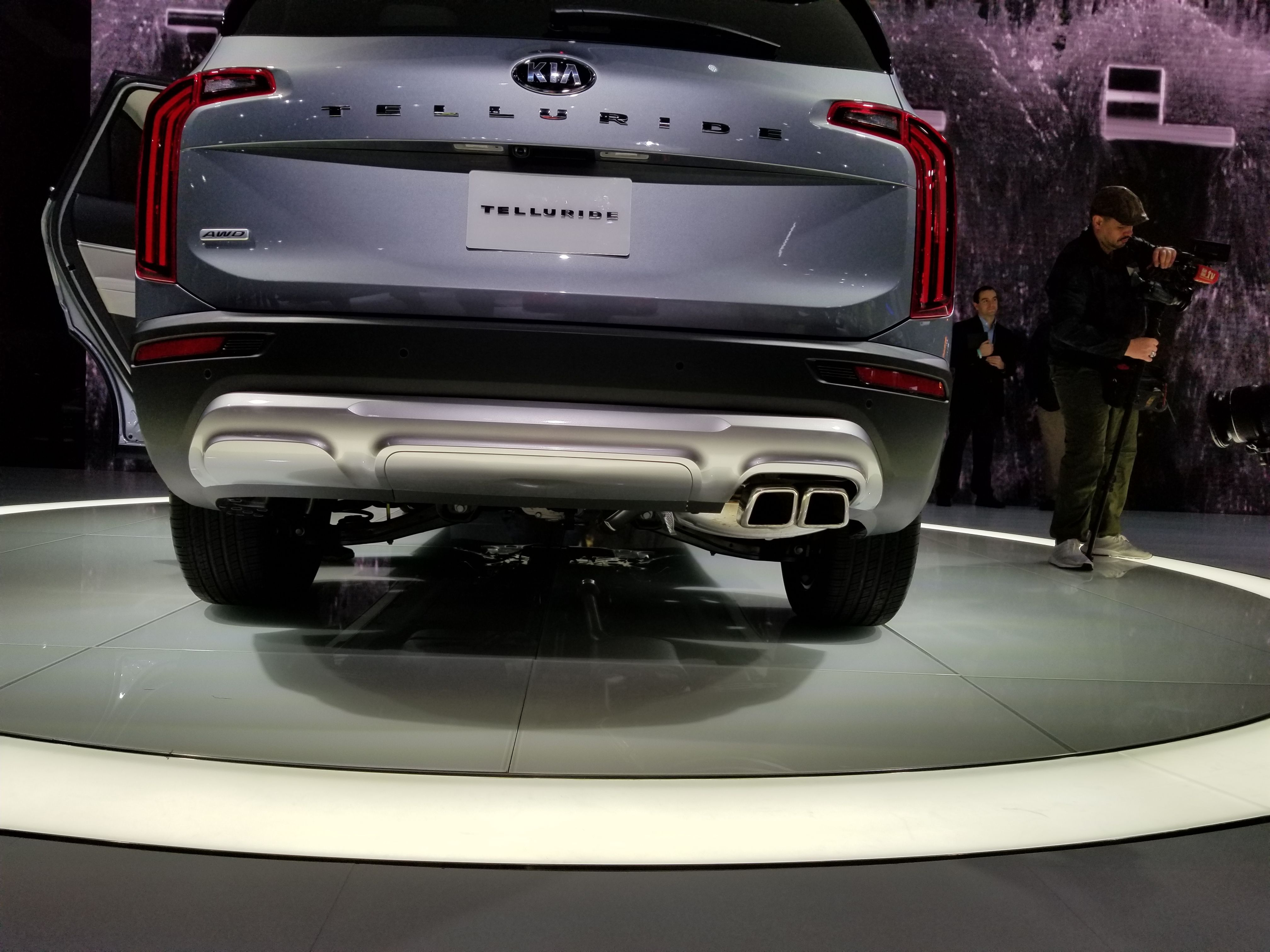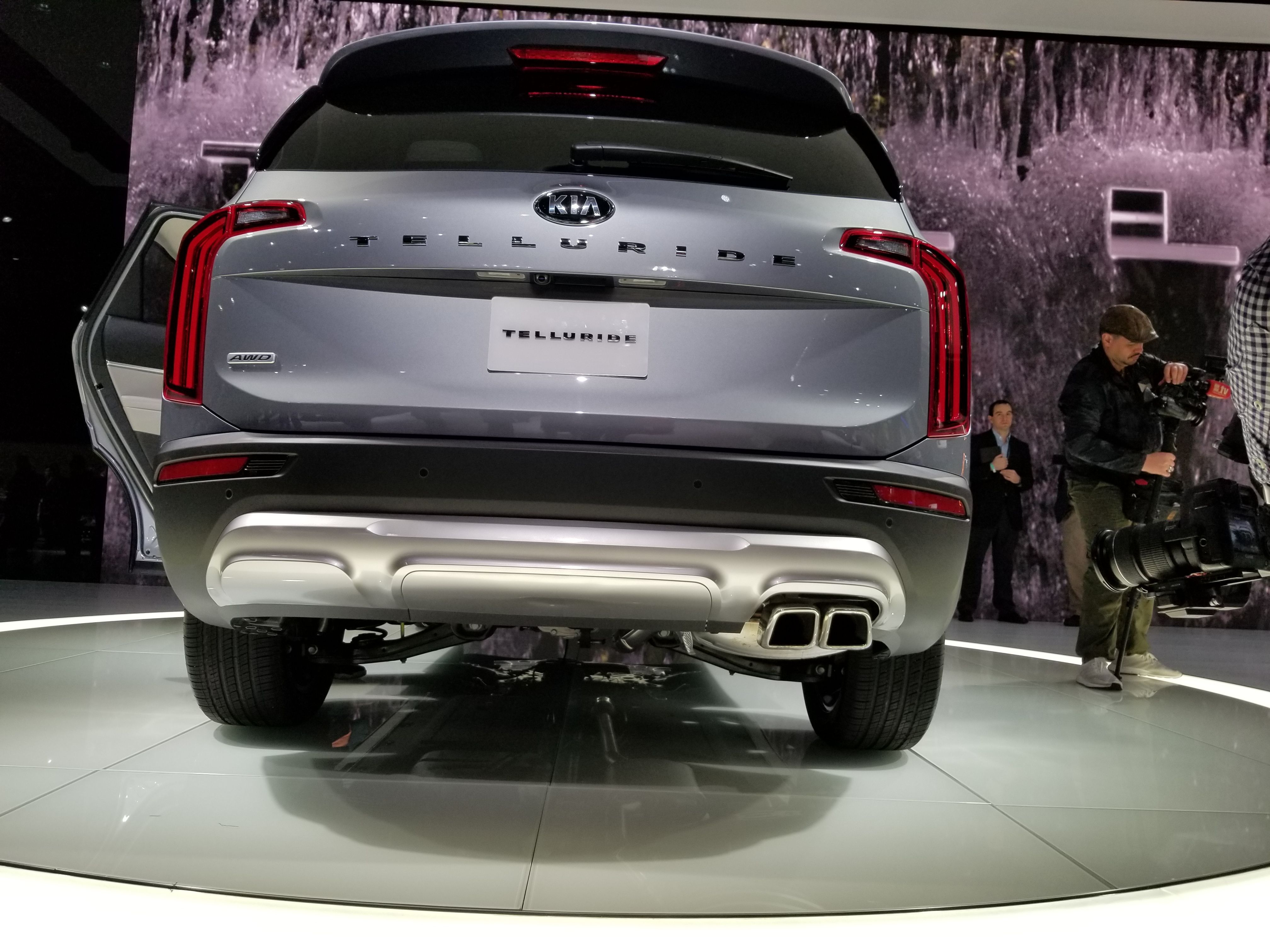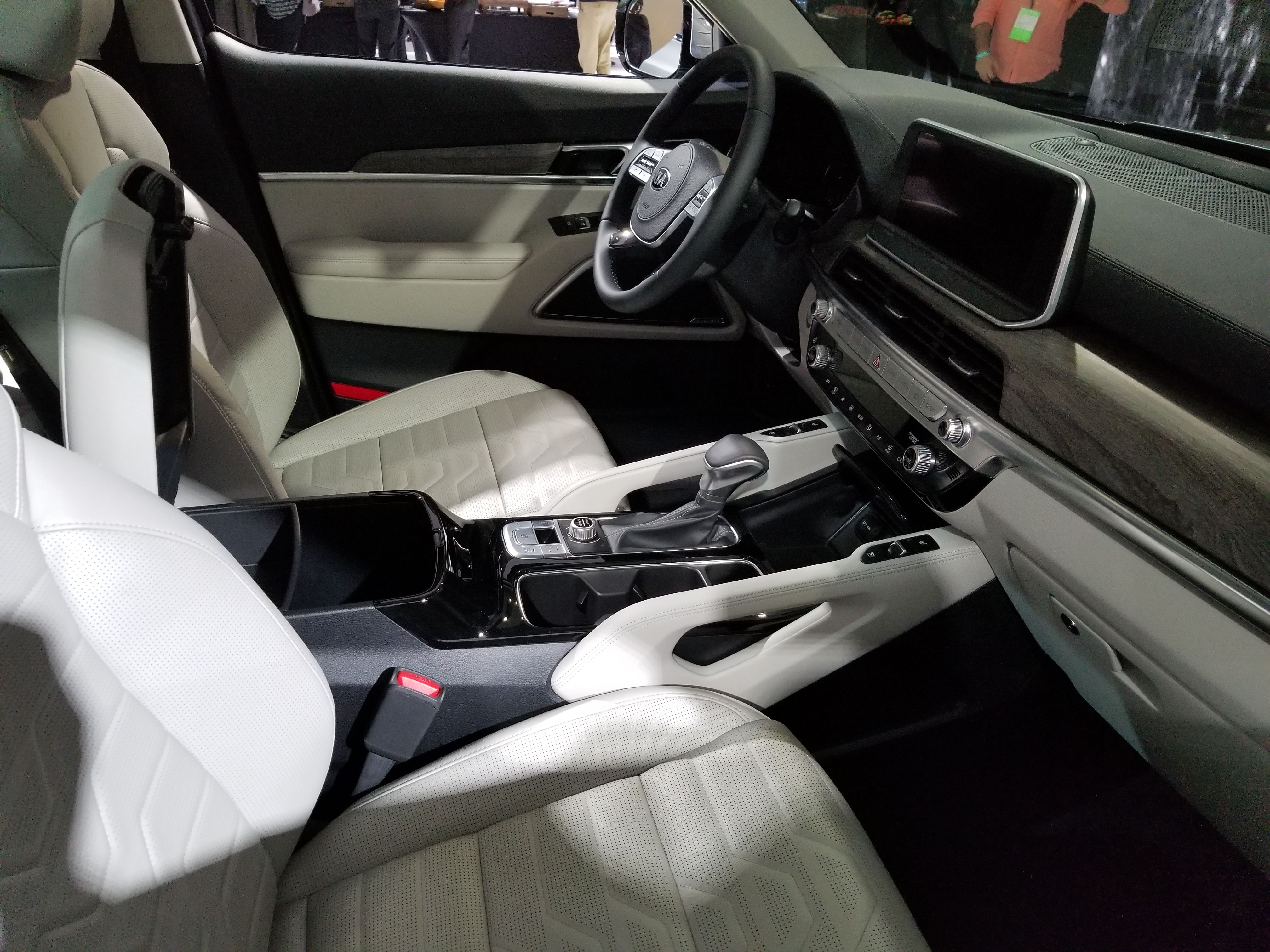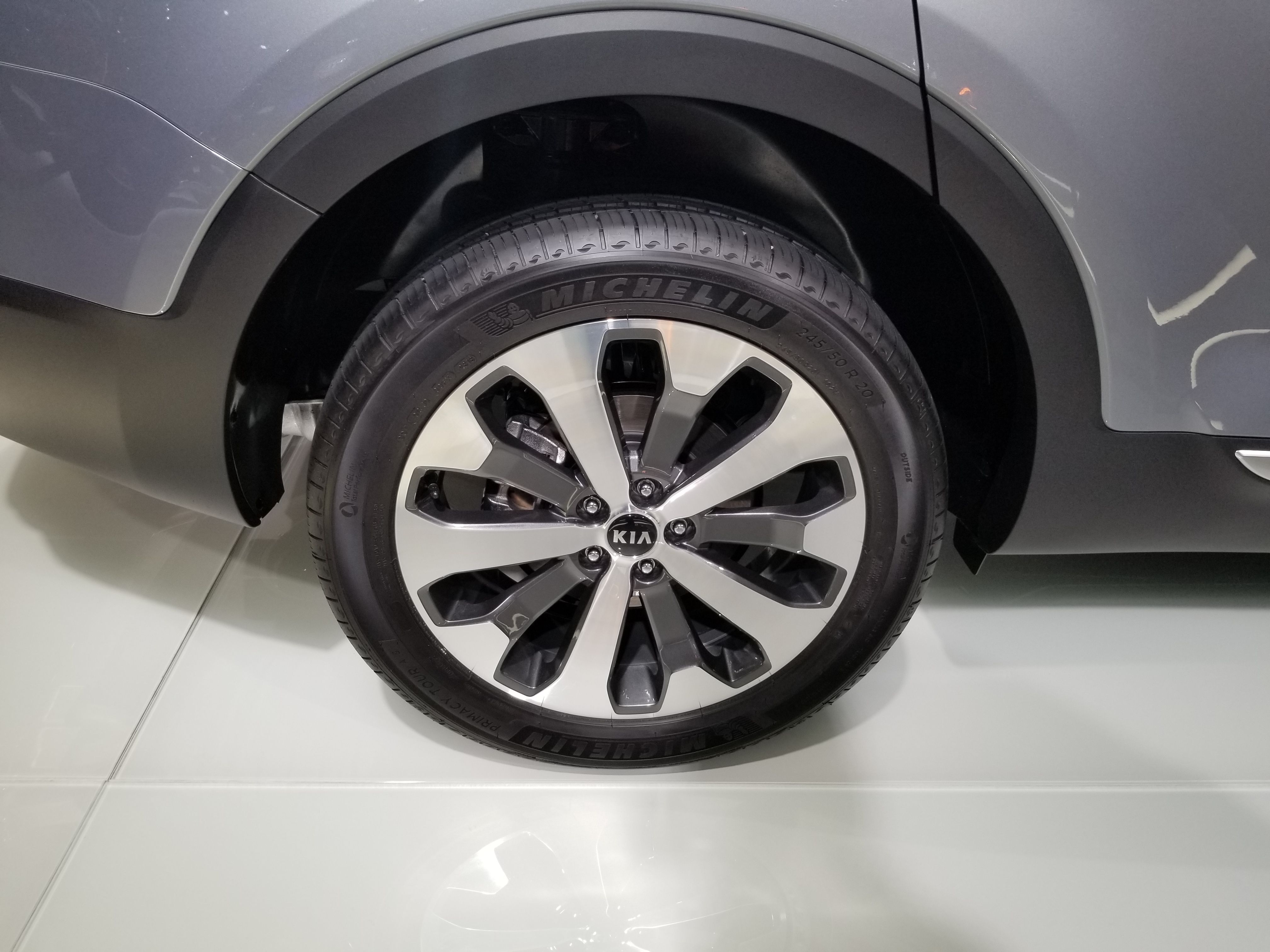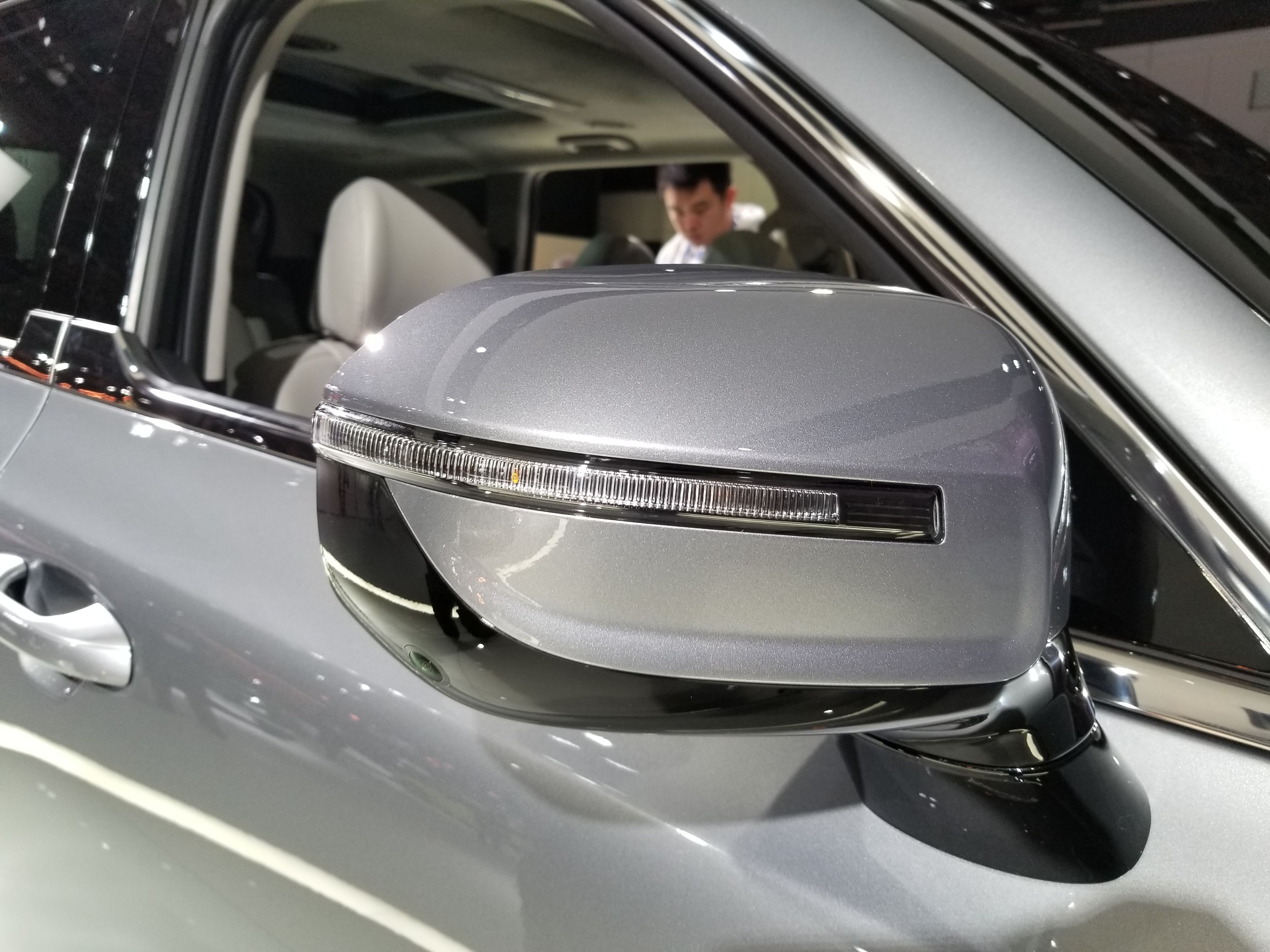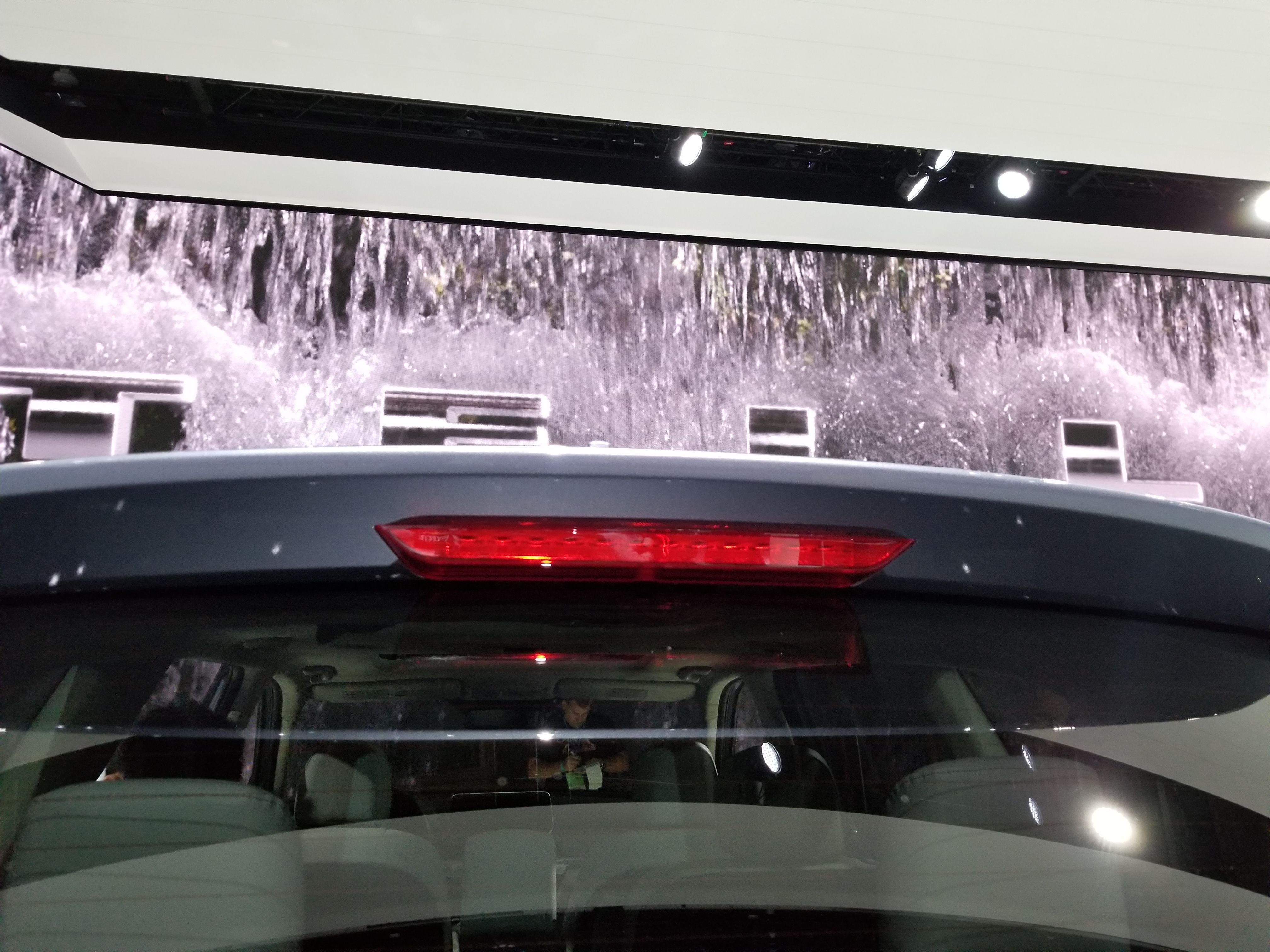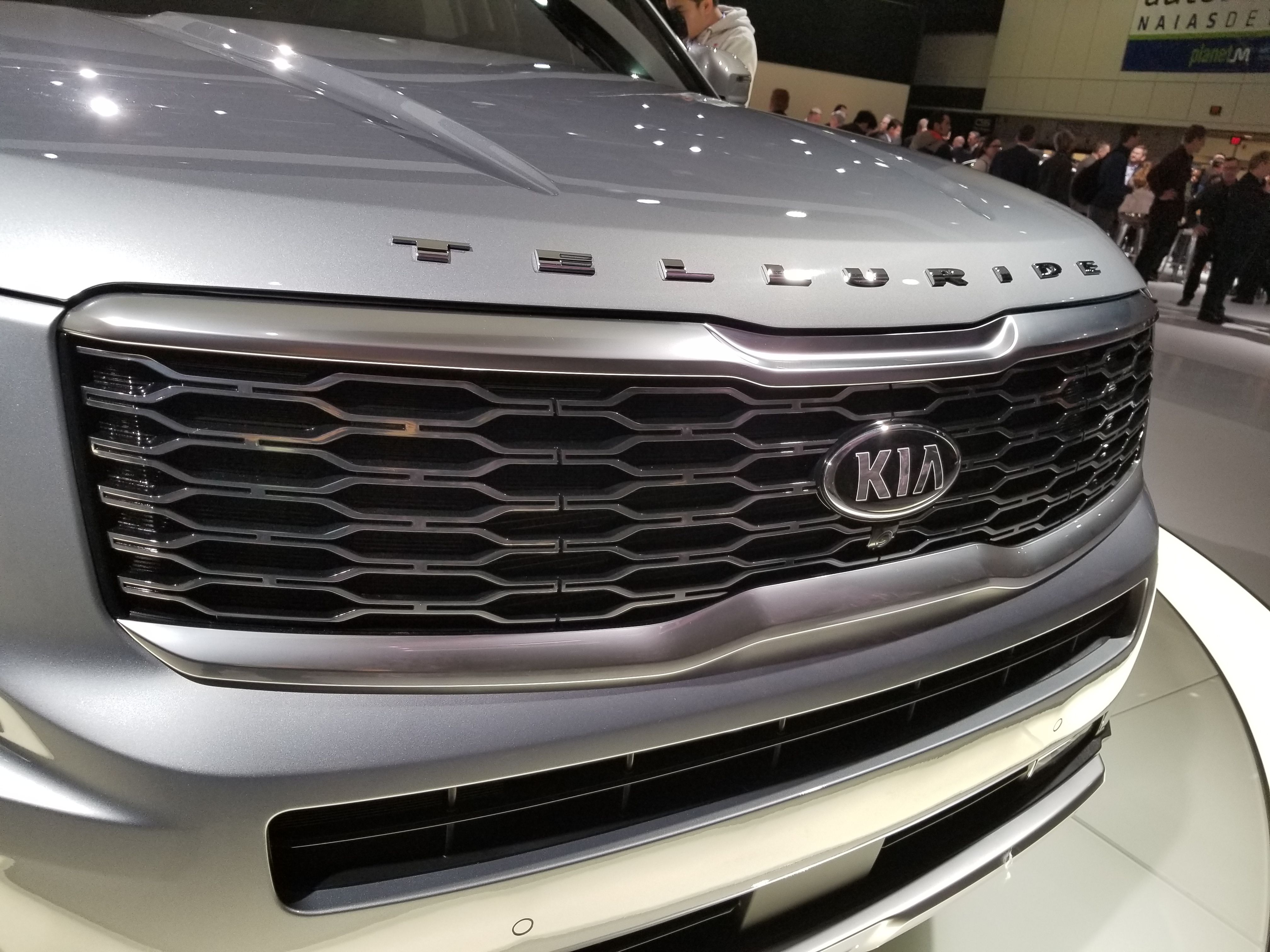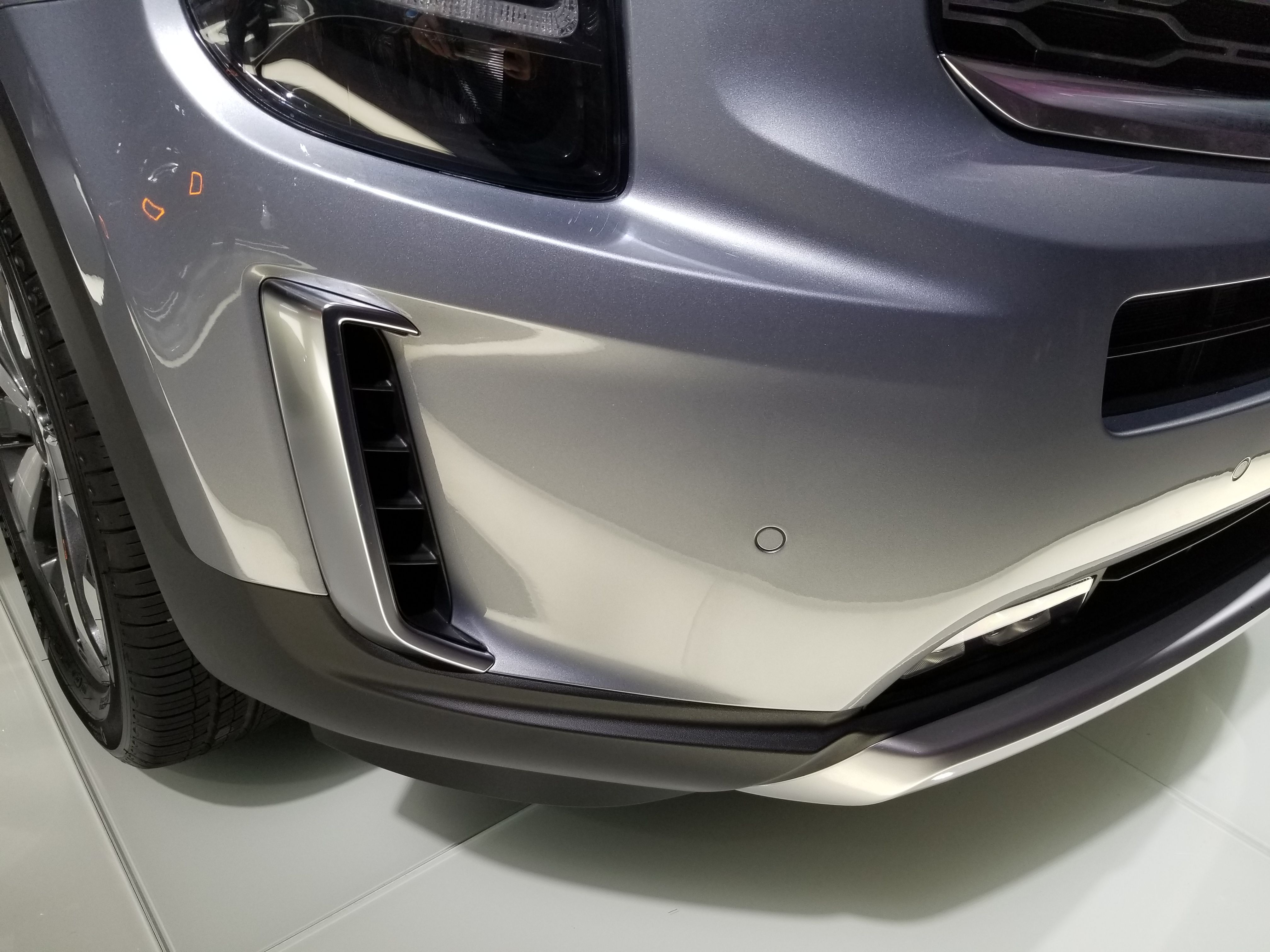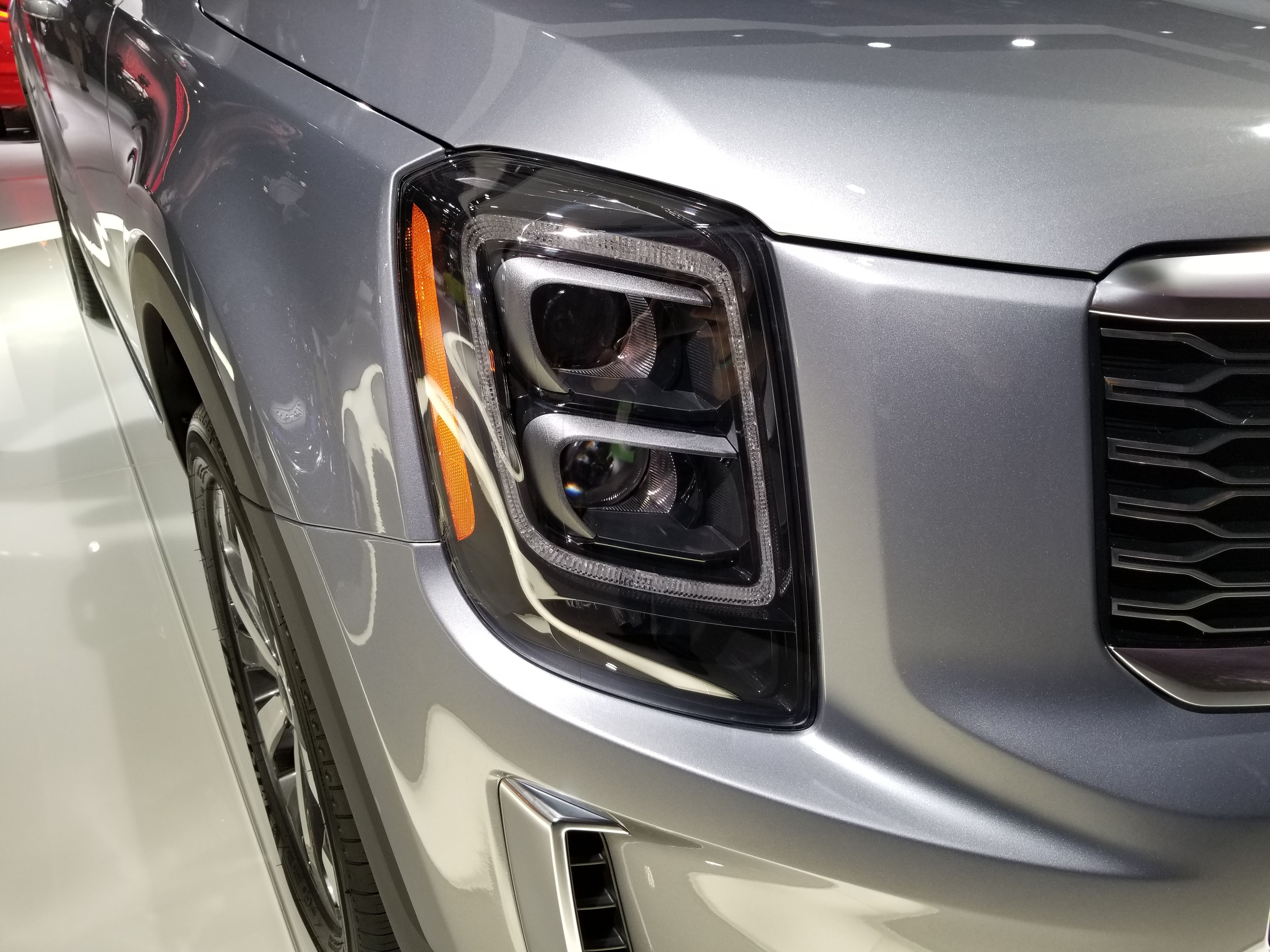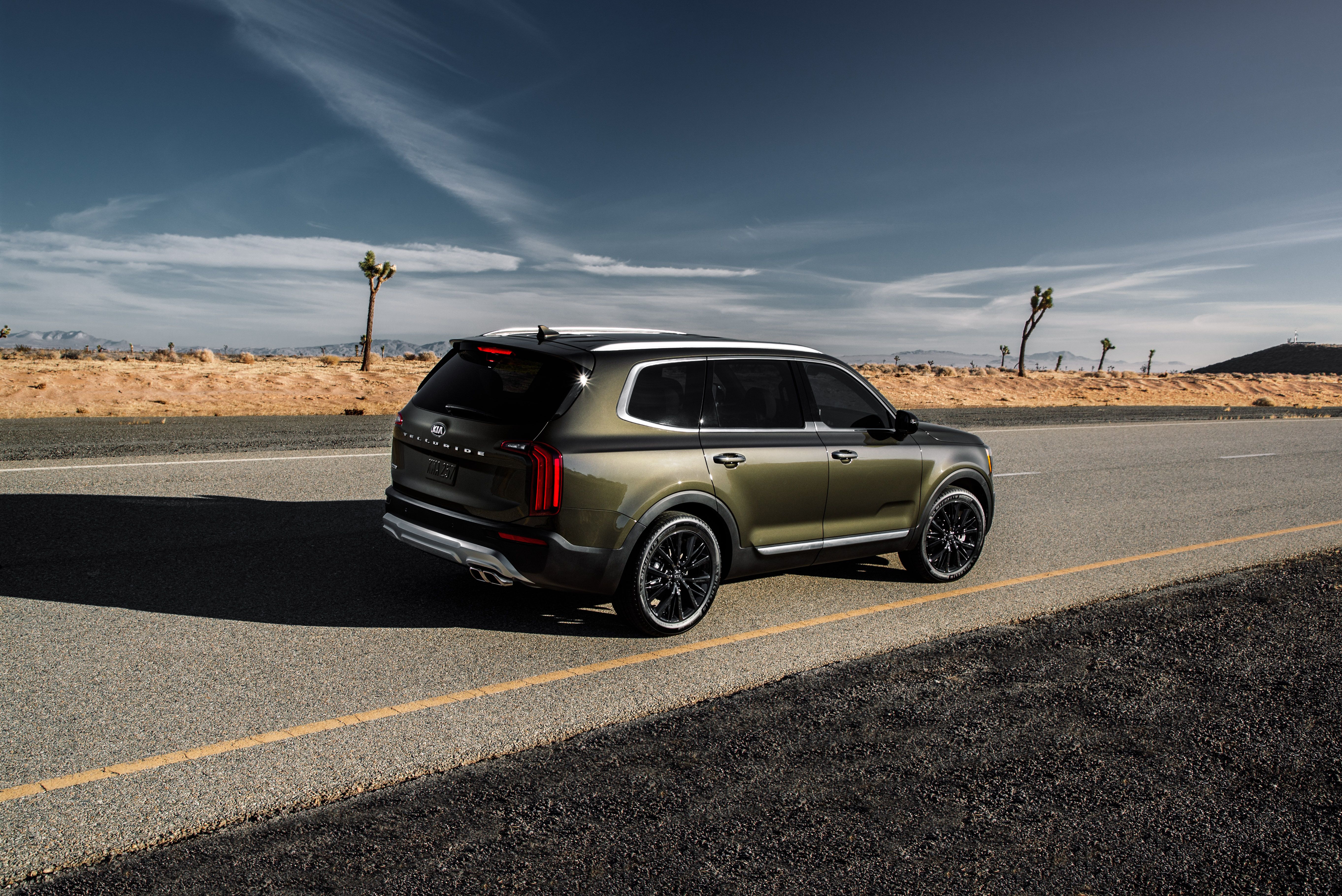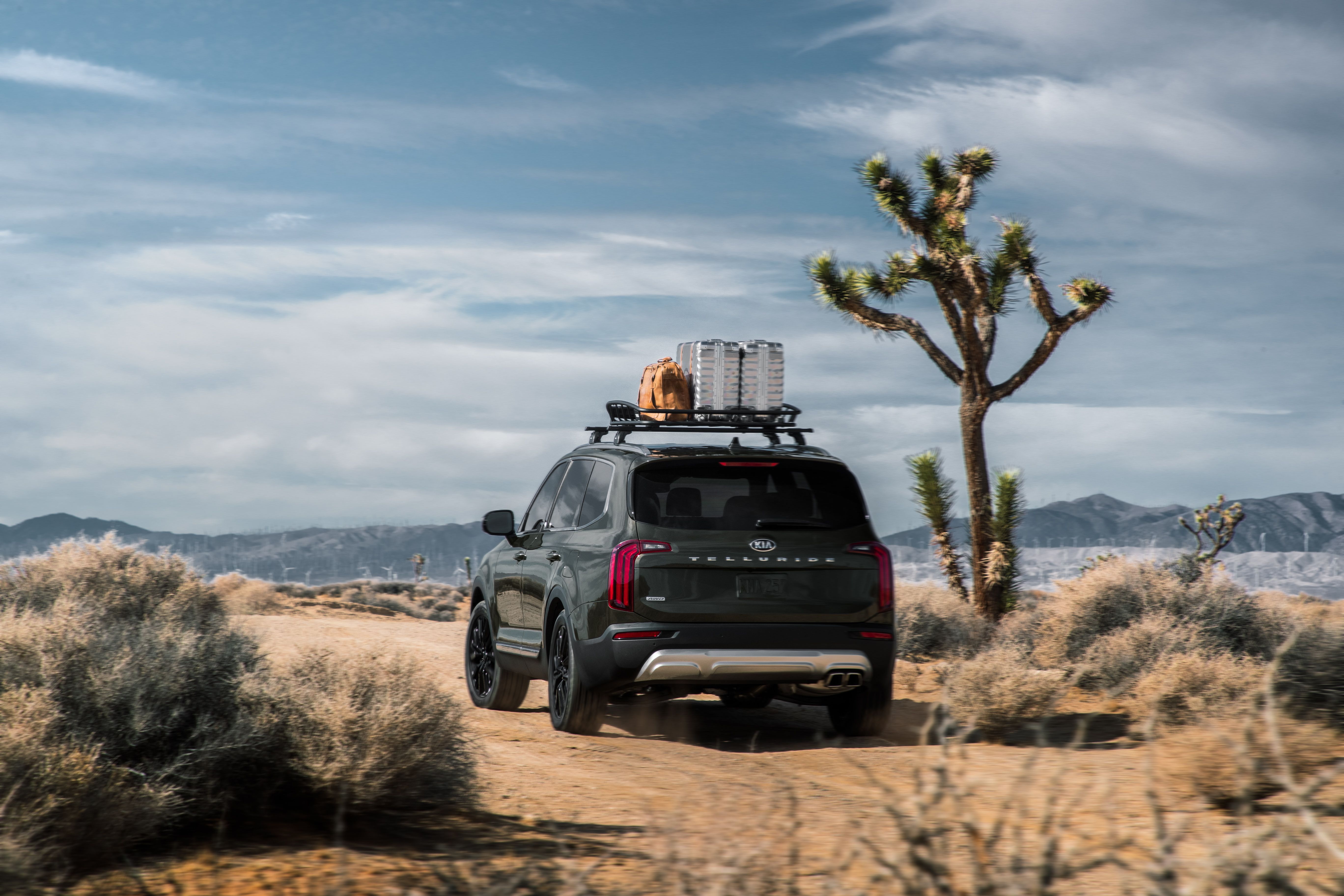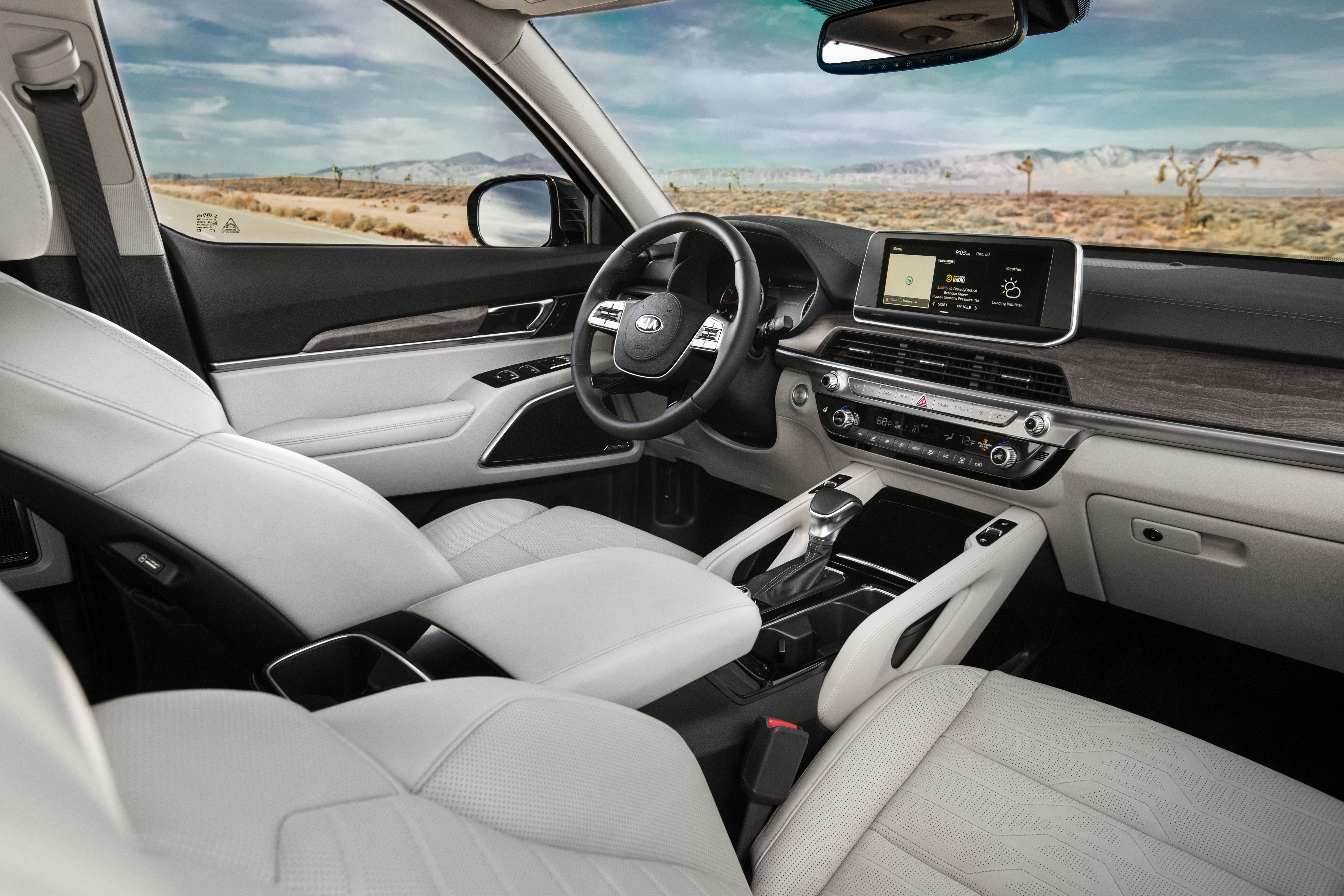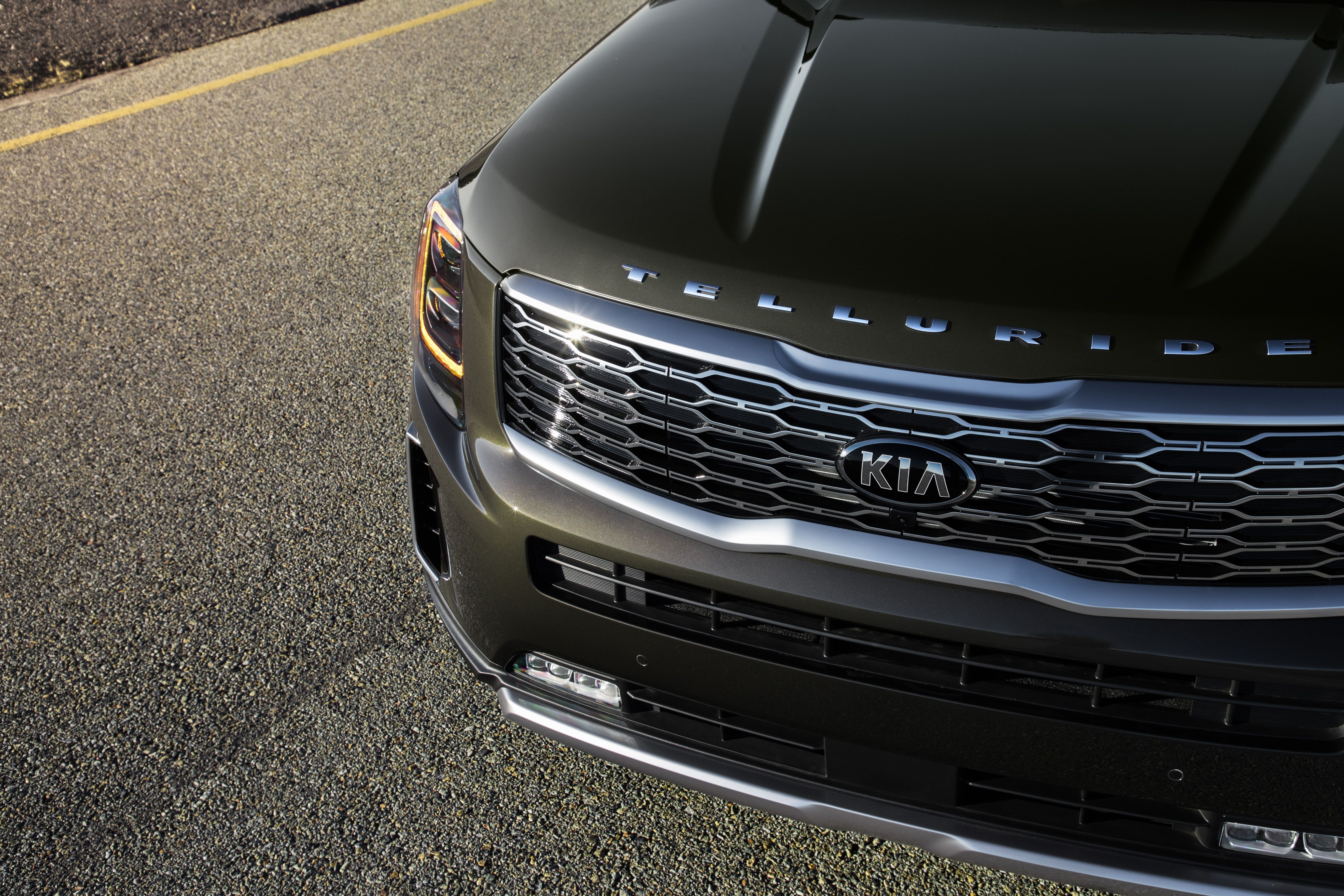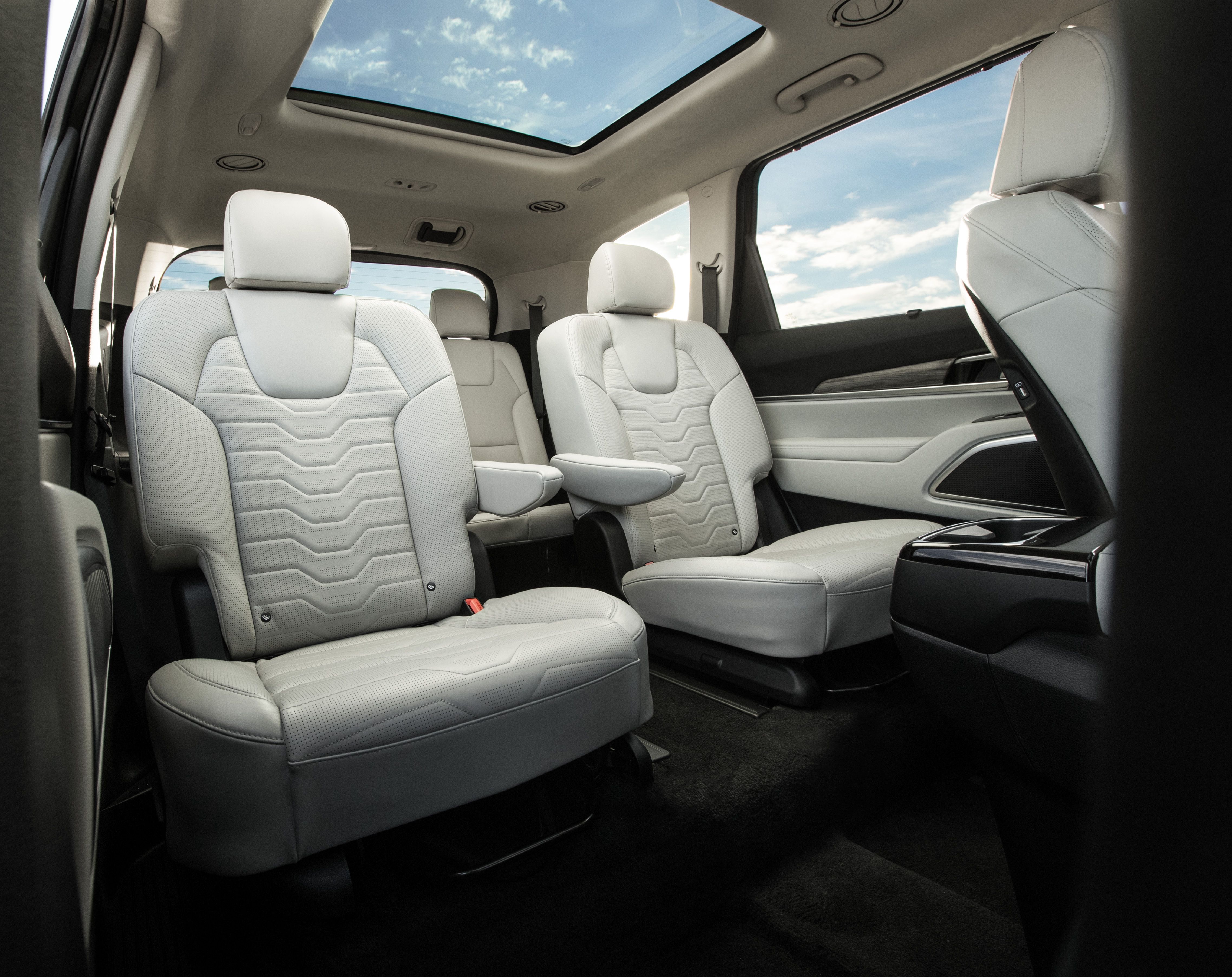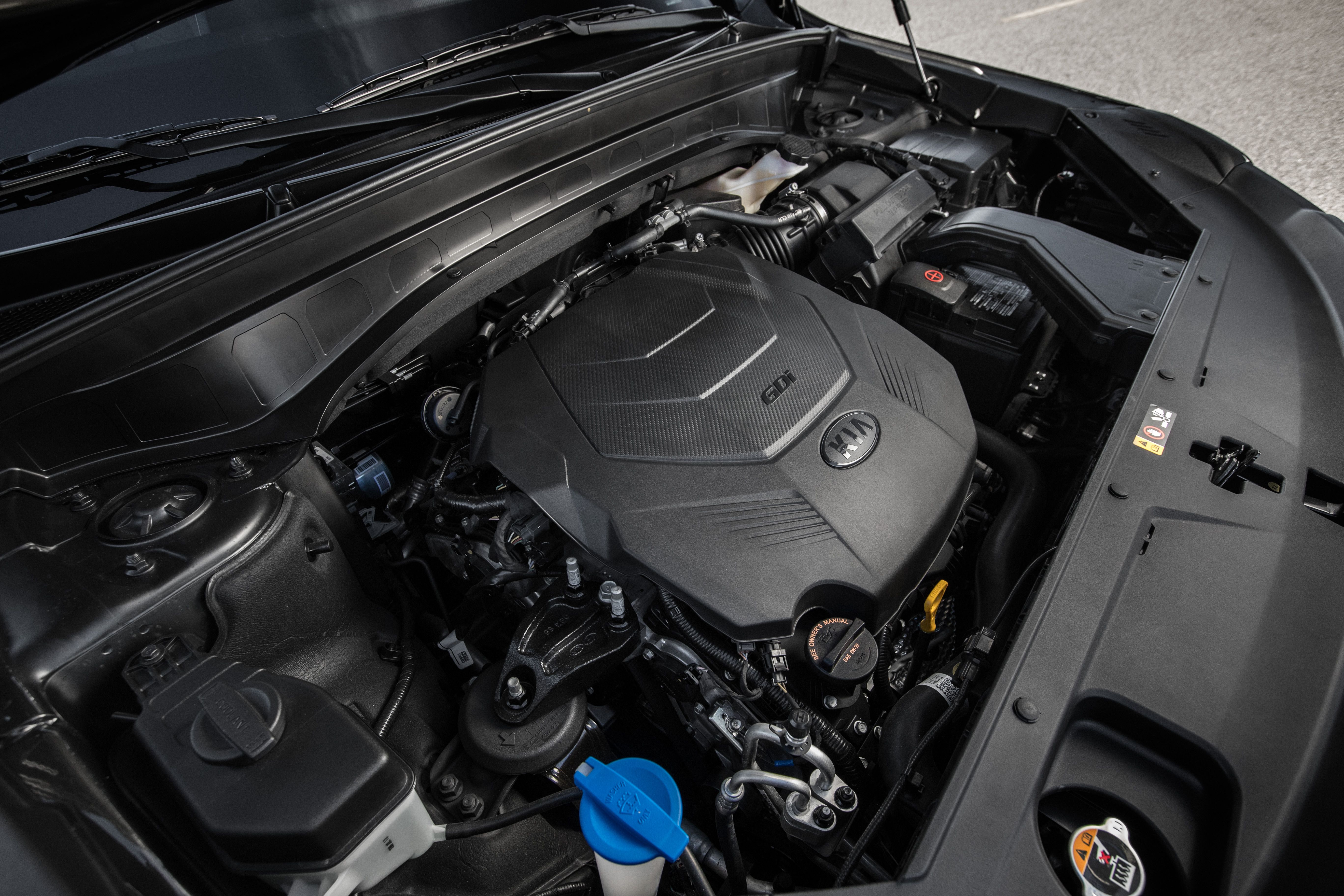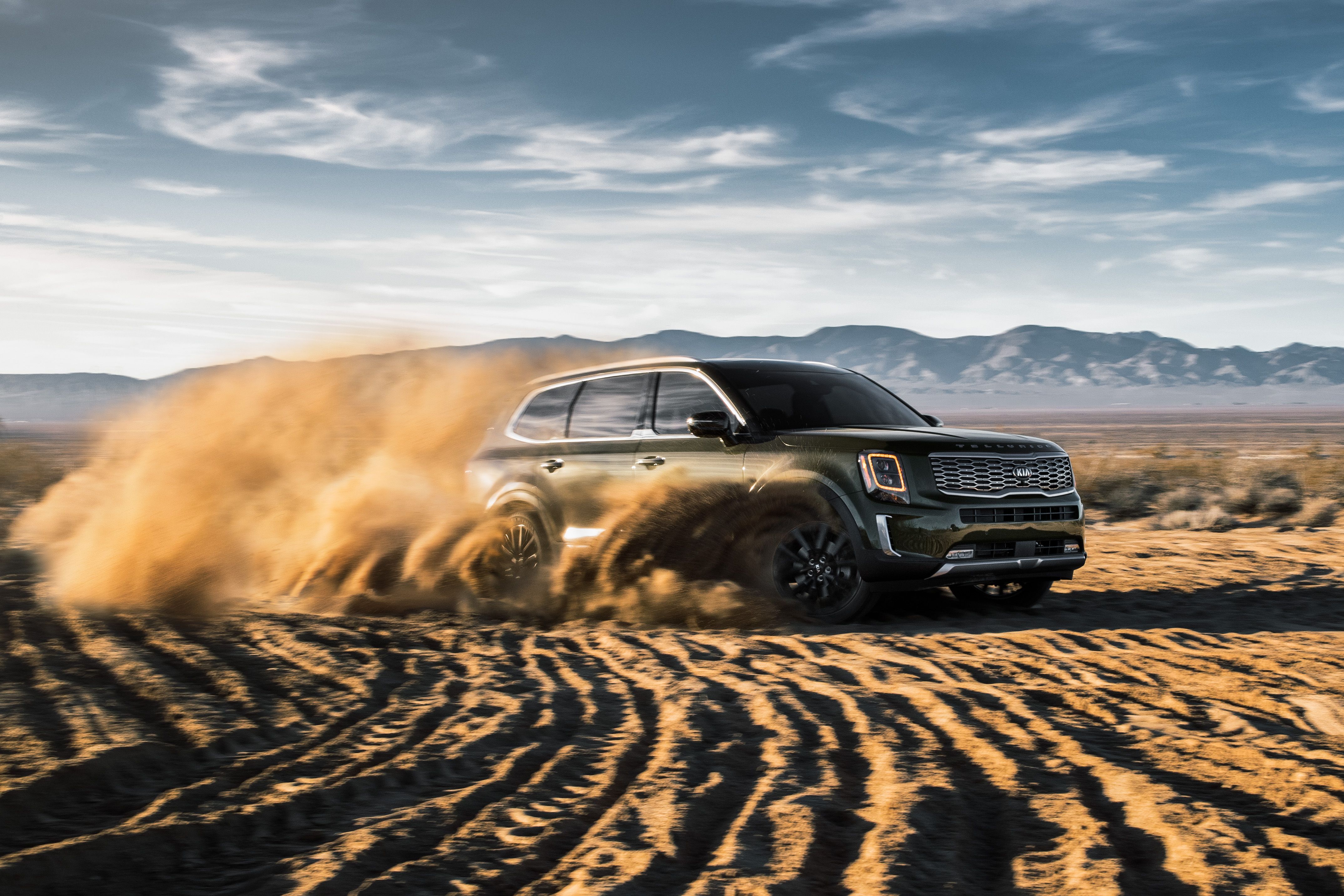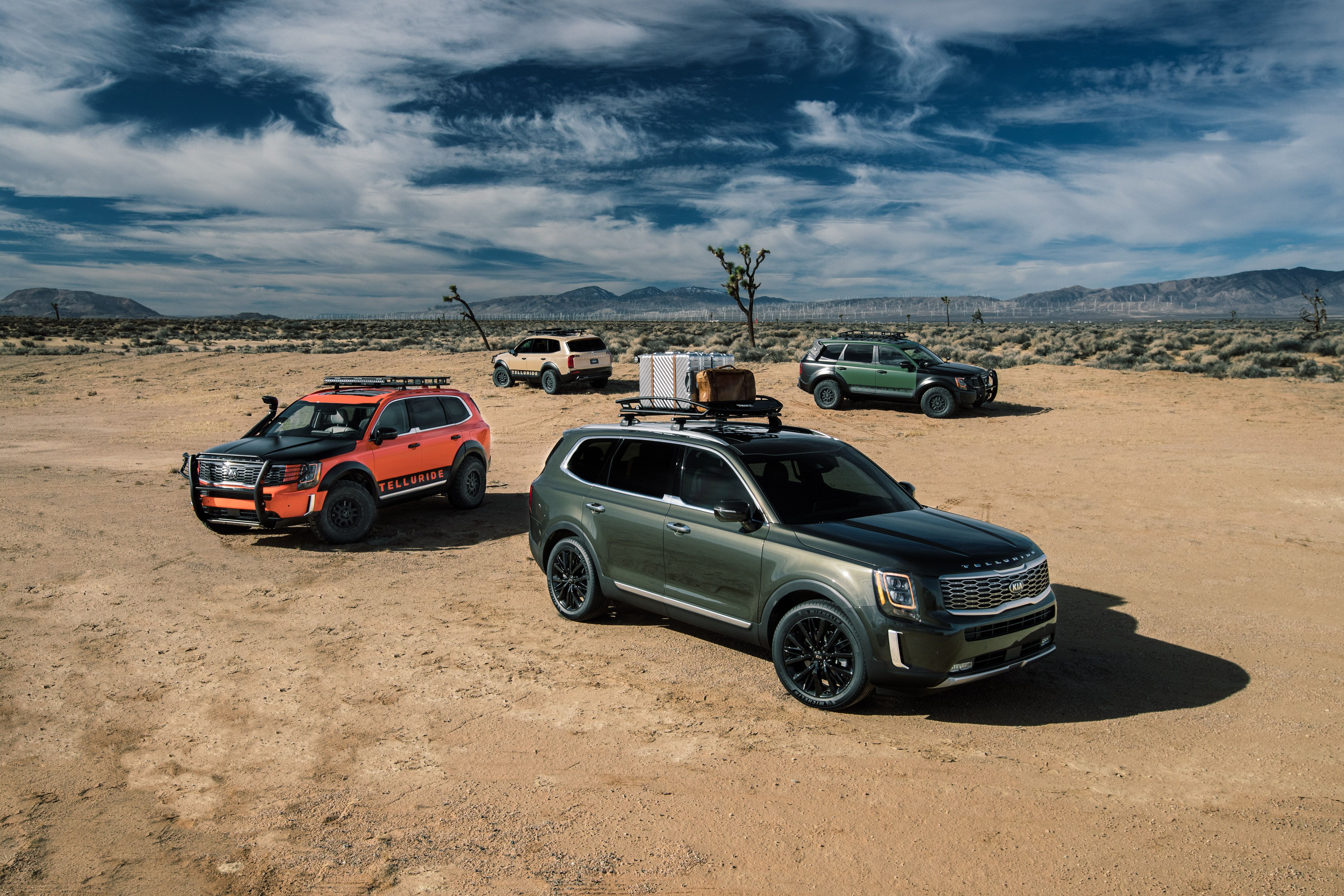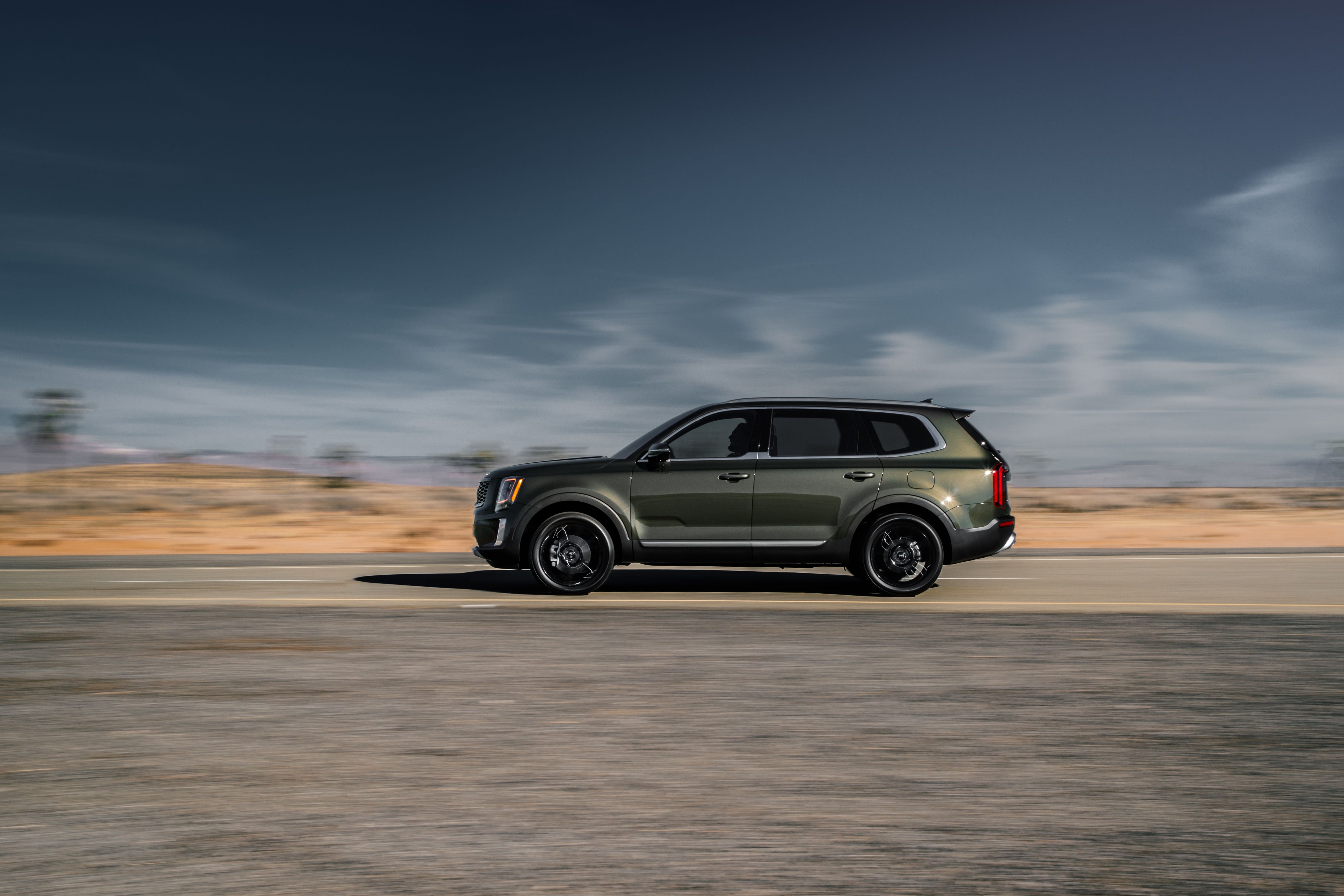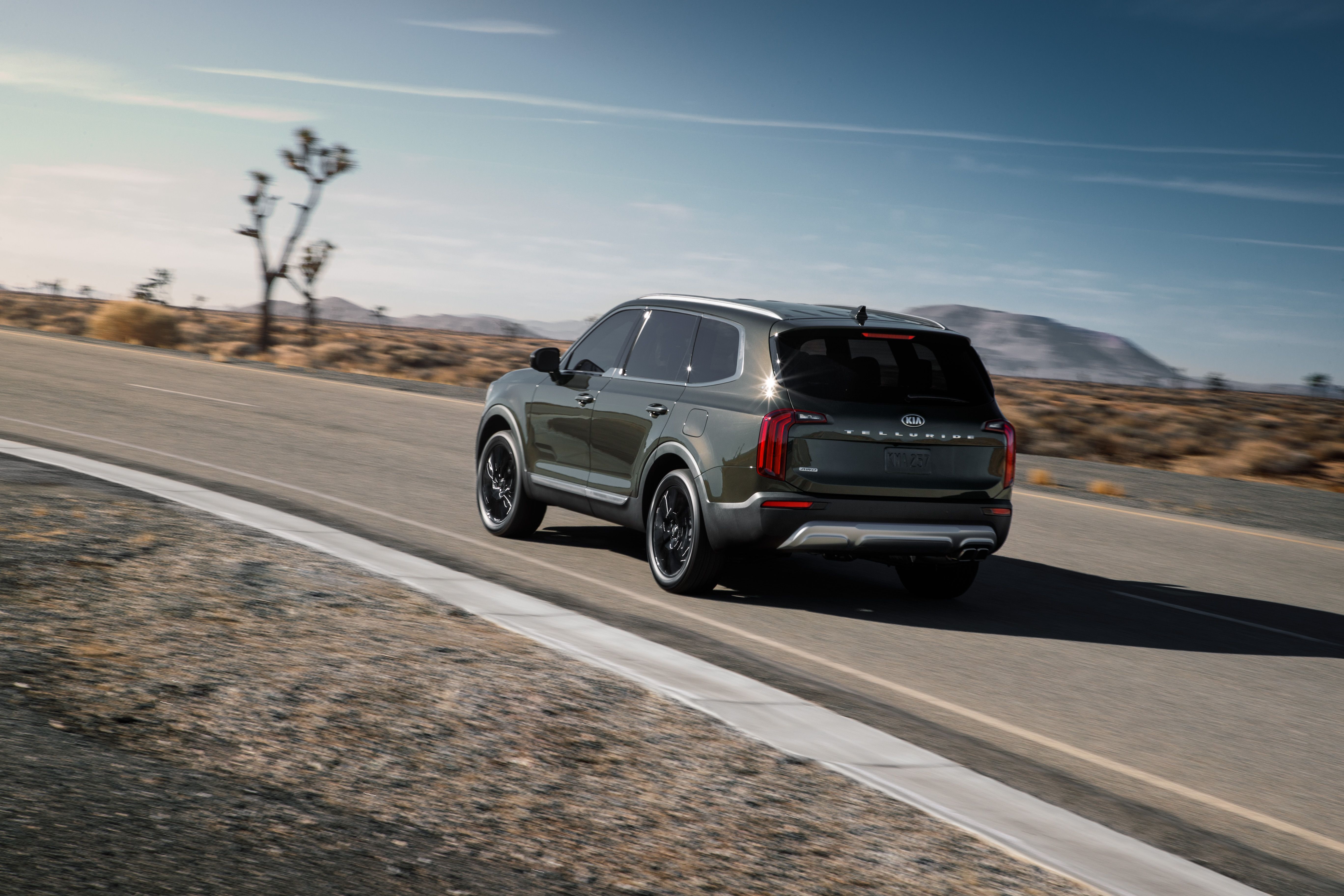Unveiled at the 2019 Detroit Auto Show, the 2020 Kia Telluride is the company's largest SUV yet and the first vehicle the Korean brand developed specifically for the U.S. market. It is based on the Telluride concept shown in 2016 but the two share very few features inside and out. It shares underpinnings with the 2019 Hyundai Palisade, introduced in 2018.
Although it's the largest Kia yet and it can seat up to eight people, the Telluride isn't much bigger than the Sorento. However, the few extra inches it has in the wheelbase and width enable it to compete with the popular Honda Pilot and the newly introduced Volkswagen Atlas. Like most midsize SUVs, the Telluride comes with just one engine in the form of a V-6, but if the concept before it is any indication, a hybrid drivetrain will be offered soon.
2020 Kia Telluride
- Make: Array
- Model: 2020 Kia Telluride
- [do not use] Vehicle Model: Array
2020 Kia Telluride Exterior
A quick glance at the SUV is enough to notice that it's based on the Telluride concept from 2016. But while the overall shape and size are identical, most of the details have been redesigned.
The front grille looks familiar like all "tigernose" elements seen on all production Kias, but it doesn't have a full chrome surround like on the concept. The good news is that this design looks better when combined with the other elements of the front fascia, but it doesn't have that authentic premium look as on the concept.
Kia redesigned the headlamps as well, replacing the concept's rectangular lights carved into the body with vertical units placed on the outer corners of the front fascia. The foglamps were moved into the bumper, which was redesigned into a bigger, more conventional design with horizontal center vents and vertical side outlets. The long hood with the raised center section complete the massive look any range-topping SUV should have.
Onto the sides, the Telluride is around 90 percent identical to the concept, but this doesn't make it special. The show car looked generic and the production model sports similar features, save for the door handles and minor changes to the side sills and the rims. The tall, pronounced beltline and the kink in the quarter window gives it a somewhat sporty vibe, but beyond that we're looking at a generic midsize SUV.
Things take a slightly more interesting turn around back, mostly because Kia retained the concept SUV's inverted L-shaped taillights. They're wider on the production model, but the slim LED strips that run from top to bottom add a cool effect in the dark. Kia also designed a sportier tailgate and a more aggressive spoiler. The bumper is generic, with a diffuser-like element finished in grey and chrome exhaust pipes.
Overall, the production Telluride doesn't look as rugged as the concept vehicle, but it has a nice premium vibe to it. It feels a bit more massive than other midsize SUVs, but it's sportier than the full-size haulers.
So how big is the Telluride compared to the Sorento, Kia's largest offering in the U.S. up until now? Although both are technically midsize SUVs, the Telluride is 7.9 inches longer at a total length of 196.9 inches. The wheelbase is also 4.8 inches longer. The Telluride is almost four inches wider and three inches higher from the ground. It's similar in size to its spiritual predecessor, the Borrego.
Although notably larger than other midsize SUVs, the Telluride isn't exactly a full-size vehicle. Compared to the Ford Expedition, the Kia is 13.5 inches shorter and 1.6 inches narrower.
2020 Kia Telluride exterior dimensions
|
2020 Kia Telluride LX |
2020 Kia Telluride S |
2020 Kia Telluride EX |
|
|
Wheelbase (in.) |
114.2 in. |
114.2 in. |
114.2 in. |
|
Length (in.) |
196.9 in. |
196.9 in. |
196.9 in. |
|
Width (in.) |
78.3 in. |
78.3 in. |
78.3 in. |
|
Height, without roof rails (in.) |
68.9 in. |
- |
- |
|
Height, with roof rails (in.) |
69.3 in. |
69.3 in. |
69.3 in. |
|
Track, front/rear (in.) |
67.2 in. / 67.6 in. |
TBD |
67.2 in. / 67.6 in. |
|
Ground clearance (in.) |
8.0 in. |
7.9 in. |
8.0 in. |
|
Approach angle (degrees) |
17.0 |
TBD |
17.0 |
|
Departure angle (degrees) |
20.9 |
TBD |
20.9 |
2020 Kia Telluride vs. the Telluride Concept
|
|
ids=794771,661756 |
no_overlay=true> |
2020 Kia Telluride Interior
Not surprisingly, the production SUV is a notably toned-down version of the concept inside and the cabin. This is disappointing as Kia had a good thing going inside the concept, like the split cluster and infotainment displays like in Mercedes-Benz vehicles, displays in the door panels, and a fancy design for the seats and the center console.
Kia reduced everything to a generic SUV design, although the big infotainment display, the wood trim, and overall clean layout place the Telluride really close to the premium market. While I've seen way too many hexagonally shaped center stacks for the Telluride's to impress me, I like the two-tone layout, the balance between the chrome and dark trim, and the modern design of the door panels.
The Telluride comes equipped with simulated brushed metal and matte-finished wood for a premium look and you can also add double-stitched, quilted, and extra-padded Nappa leather upholstery from the options list. The bad news is that heated and ventilated front- and second-row seats are optional, but the ceiling-mounted second-row climate control panel comes standard. Likewise, the leather-wrapped steering wheel is standard, but the heated function is optional.
Moving over to tech, the big 10.25-inch infotainment display you see here is optional. It includes a rear-view monitor and parking guidance. Apple CarPlay and Android Auto connectivity is standard no matter how big the display is, but you will have to pay extra for features like wireless smartphone charging, a sixth USB charging port, and multi-Bluetooth wireless connectivity. For audiophiles, Kia offers a 630-watt, 10-speaker Harman-Kardon audio system with Quantum Logic surround sound and Clari-Fi.
Other noteworthy tech features you will get with the Telluride include Kia's latest UVO telematics system, remote start and door lock, pre-condition cabin temperature (only on EX and SX trims), and Send-to-Car points of interest and waypoints.
As the biggest SUV in the lineup, the Telluride provides seating for up to eight people. You can select between the seven- and eight-seat capacity by opting for a second row with either two or three seats.
The Telluride provides a bit more headroom than the Sorento, but the difference is negligible, as the increase accounts for less than an inch in the first and second rows and a bit more than an inch in the third row. When it comes to legroom, the Telluride and the Sorento are identical in the first- and third-row seats, but the former offers an extra three inches in the second row. When it comes to shoulder room and hip room, you'll find two- to three-inch improvements in all areas compared to the Sorento.
Moving over to cargo room, the Telluride offers notable more space no matter the seating configuration. With all three rows in place, the Telluride can take up to 21 cubic feet of luggage, nearly 10 more than the Sorento. Fold the third row and space increases to 46 cubic feet, eight cubic feet more than the Sorento. Load the SUV up to the first-row seats and total capacity grows to 87 cubic feet. The Sorento can swallow 73 cubic feet, a 14-cubic-foot deficit.
2020 Kia Telluride interior dimensions
|
2020 Kia Telluride LX |
2020 Kia Telluride S |
2020 Kia Telluride EX |
|
|
Passenger Seating Capacity |
8 Passenger |
7 or 8 Passenger |
8 Passenger |
|
Head room |
- |
- |
- |
|
Front (in.) |
40.9 in. |
- |
- |
|
Middle (in.) |
40.2 in. |
- |
- |
|
Rear (in.) |
38.1 in. |
- |
- |
|
Head room (Single sunroof) |
- |
- |
- |
|
Front (in.) |
- |
39.5 in. |
39.5 in. |
|
Middle (in.) |
- |
40.2 in. |
40.2 in. |
|
Rear (in.) |
- |
38.1 in. |
38.1 in. |
|
Head room (Dual sunroof) |
- |
- |
- |
|
Front (in.) |
44.1 in. |
44.1 in. |
44.1 in. |
|
Middle (in.) |
42.4 in. |
42.4 in. |
42.4 in. |
|
Rear (in.) |
31.4 in. |
31.4 in. |
31.4 in. |
|
Shoulder room |
- |
- |
- |
|
Front (in.) |
61.6 in. |
61.6 in. |
- |
|
Middle (in.) |
61.2 in. |
61.2 in. |
- |
|
Rear (in.) |
55.3 in. |
55.3 in. |
- |
|
Shoulder room (with side window curtains) |
- |
- |
- |
|
Front (in.) |
- |
- |
61.6 in. |
|
Middle (in.) |
- |
- |
59.9 in. |
|
Rear (in.) |
- |
- |
55.3 in. |
|
Hip room |
- |
- |
- |
|
Front (in.) |
58.9 in. |
58.9 in. |
58.9 in. |
|
Middle (in.) |
58.0 in. |
58.0 in. |
58.0 in. |
|
Rear (in.) |
43.7 in. |
43.7 in. |
43.7 in. |
|
Cargo volume, behind 1st-row (cu. ft.) |
87.0 cu. ft. |
87.0 cu. ft. |
87.0 cu. ft. |
|
Cargo volume, behind 2nd-row (cu. ft.) |
46.0 cu. ft. |
46.0 cu. ft. |
46.0 cu. ft. |
|
Cargo volume, behind 3rd-row (cu. ft.) |
21.0 cu. ft. |
21.0 cu. ft. |
21.0 cu. ft. |
|
Total interior volume (cu.ft.) |
178.1 cu. ft. |
178.1 cu. ft. |
178.1 cu. ft. |
Versus the Competition
The Telluride is a generic SUV when it comes to headroom, offering similar dimensions to competitors like the Honda Pilot and Volkswagen Atlas. This applies to all three rows, with all three SUVs offering around 40 inches in the first and second rows and around 38 inches in the third row.
When it comes to legroom though, the Telluride offers an extra two inches over the Pilot and an extra three over the Atlas in the front row. At 42.4 inches in the second row, the Telluride offers an extra four to five inches over the competition. On the flipside, third-row legroom is a bit inferior, with 31.4 inches versus 31.9 and 33.7 in the Pilot and Atlas, respectively.
Both shoulder room and hip room are similar to the competition. The Pilot wins both categories by a very small margin, while the Telluride places slightly above the Atlas in almost all departments.
Things aren't as good for the Telluride when it comes to cargo room. Although it offers a bit more space behind the third-row seats (21 cubic feet versus 18.5 and 20.6), it falls behind in other areas. At 46 cubic feet behind the second row, the Telluride offers around nine cubic feet less than the Pilot and Atlas. Also, its total capacity of 87 cubic feet is also far behind the Atlas' 96.8 cubic feet and the Pilot's impressive 109-cubic-foot rating.
2020 Kia Telluride Performance
The Telluride takes its juice from a 3.8-liter V-6 engine of the Lambda II variety. The mill is identical to the one in the Hyundai Palisade and generates the same 291 horsepower and 262 pound-feet of torque. It mates to an eight-speed automatic transmission, also similar to its badge sibling, the Palisade.
Not only more powerful than other Kia SUVs, the Telluride is also more powerful than the competition. The Honda Pilot, powered by a 3.5-liter V-6, generates 280 horsepower, while the Volkswagen Atlas, which comes with a 3.6-liter V-6, delivers 276 horsepower.
The SUV rides on a four-wheel independent suspension system, which puts it on par with modern large SUVs. The rear suspension has a self-leveling function that automatically calibrates the ride height depending on vehicle load. This feature isn't standard though and you can only order it on the more expensive EX and SX trims.
The optional all-wheel-drive system actively distributes torque between the front and rear wheels through an electro-hydraulic coupling system and a multi-plate clutch. Power is distributed based on the driving mode between the front and rear wheels for proper traction and enhanced stability. When using Eco and Smart modes, all power is routed o the front wheels, while Comfort and Snow send 20 percent to the rear. Sport mode splits 65 and 35 percent between the front and rear wheels, while Lock mode provides a 50-50 split.
This combination enables the Telluride to tow up to 5,000 pounds. This rating is obviously available with an AWD system and additional equipment, like a trailer hitch. The Honda Pilot and the Volkswagen Atlas have identical ratings, also when equipped with AWD and a factory-installed trailer hitch.
The fact that the Telluride concept had a hybrid drivetrain suggests that the production SUV could also offer an electrified version in the future.
Safety Features
The Telluride is as good as any other midsize SUV out there when it comes to passive safety features. The package includes dual front air bags, dual front seat-mounted side air bags, side curtain air bags with rollover sensor, and a driver's side knee air bag.
When it comes to active features, the list is quite long. Standard tech includes Forward Collision Warning, Forward Collision-Avoidance Assist with pedestrian detection, Lane Departure Warning, Blind Spot Collision-Avoidance Assist-Rear, Driver Attention Warning, and Smart Cruise Control with Stop & Go. There's also Rear Cross-Traffic Collision-Avoidance Assist, Parking Distance Warning, Blind Spot Collision-Avoidance, Rear Cross-Traffic Collision Avoidance Assist, and Lane Following Assist.
You can get even more safety features from the options list, including High Beam Assist, Blind Spot View Monitor, Parking Distance Warning, Surround View Monitor, Highway Driving Assist, Head-Up Display, Driver Talk, and Quiet Mode.
2020 Kia Telluride Pricing
Pricing for the Telluride starts from $32,735, including destination. That's $1,285 more than the Honda Pilot, which isn't in Kia's advantage, and $1,360 less than the Volkswagen Atlas.
The base model comes with plenty of standard features, including eight-row seating, synthetic leather, an eight-inch infotainment system, and USB charge ports for all three rows. It also includes smart key with push-button start, and parking distance warning in reverse.
Moving over to the S trim, priced from $35,035, it comes with a seven-seat layout with second-row captain's chairs, a 10-way power seat for the driver, heated front seats, a power sunroof, and better materials. If you want leather, you need to pick the EX trim, which reverts to the eight-passenger layout and adds the bigger 10.25 display, heated and cooled front seats, and an eight-way adjustable seat for the front passenger.
Finally, the range-topping SX goes for $42,535 before options and includes a dual sunroof, digital instrument cluster, a Harman-Kardon audio system, and 360-degree camera. Opt for the $4,000 Prestige Package and you get Nappa leather with premium headliner, a head-up display, heated steering wheel, and climate control for the second-row seats. This version is only available in a seven-seat configuration. All told, a loaded Telluride will set you back almost $47,000.
2020 Kia Telluride Competition
Honda Pilot
One of the most popular SUVs in this niche, the Pilot was redesigned in 2016 and upgraded for the 2019 model year. Sporting Honda's familiar front fascia, the Pilot is very similar to the Telluride as far as size goes. It also offers seating for up to eight people and similar passenger room. But it leads the market when it comes to cargo room, offering an extra 22 cubic feet of luggage space behind the first row. It also has a more powerful engine, with the 3.5-liter V-6 generating 280 horsepower. A nine-speed automatic transmission routes the power to either the front or all four wheels. Pricing for the Pilot starts from $31,450, while the range-topping model comes in at $48,020.
Read our full review of the 2019 Honda Pilot
Volkswagen Atlas
Introduced in 2017, the Atlas replaced the Touareg in the United States. Sporting a more massive, squared-off design, the Atlas is the first SUV that Volkswagen developed specifically for the U.S. market, just like Kia did with the Telluride. Also capable of hosting up to eight passengers inside the cabin, it just as roomy as the Telluride, but offers a bit more space in the trunk. Specifically, it can swallow an extra nine cubic feet behind the second row and an extra 10 cubic feet behind the first row. Power comes from a 3.6-liter V-6 rated at 276 horsepower, but unlike the Telluride, the Atlas can also be had with a smaller, 2.0-liter four-cylinder good for 235 horses. Pricing starts from $34,095 and goes all the way up to $48,395.
Read our full story on the 2018 Volkswagen Atlas.
Final Thoughts
As the company's first SUV specifically designed for the U.S. market, the Telluride is a pretty big deal for Kia. It also enables the Korean brand to take on slightly larger SUVs for which the Sorento was too small. However, the Telluride is too small full-size haulers like the Chevrolet Tahoe and Ford Explorer, so the Kia remains outside this popular segment. Another letdown is the Telluride's notably smaller trunk compared to the Pilot and Atlas, a sign that Kia is still new to this market and needs a few more years to deliver a more competitive vehicle in this department. On the other hand, the Telluride features similar or even more technology than the competition. All it needs is competitive pricing and for enthusiasts to accept the somewhat unconventional design of the front fascia.
References
Read our full review on the 2016 Kia Telluride Concept.
Read more Kia news.


